

33+ Important Tips for Visiting Lisbon for the First Time
The secret is definitely out: visiting Lisbon, Portugal is an absolute delight!
While this sunny, colorful capital city may have been under the radar a decade or two ago, today it is deservedly popular with travelers near and far.
As beautiful as Lisbon is, though, there are definitely some quirks to keep in mind when visiting–which is why we’ve rounded up the best Lisbon travel tips to keep in mind as you plan your first trip to the “Queen of the Sea”.
As American ex-pats who have spent a year calling Lisbon home (and hosted many family and friends along the way), we have quite a bit of advice for traveling Lisbon well!
Here are our top tips for visiting Lisbon for the first time.
Table of Contents
Tips for Visiting Lisbon’s Top Attractions
Lisbon travel tips for getting around the city, tips for taking day trips from lisbon, tips for visiting lisbon’s restaurants + snack bars, other tips for your first trip to lisbon.
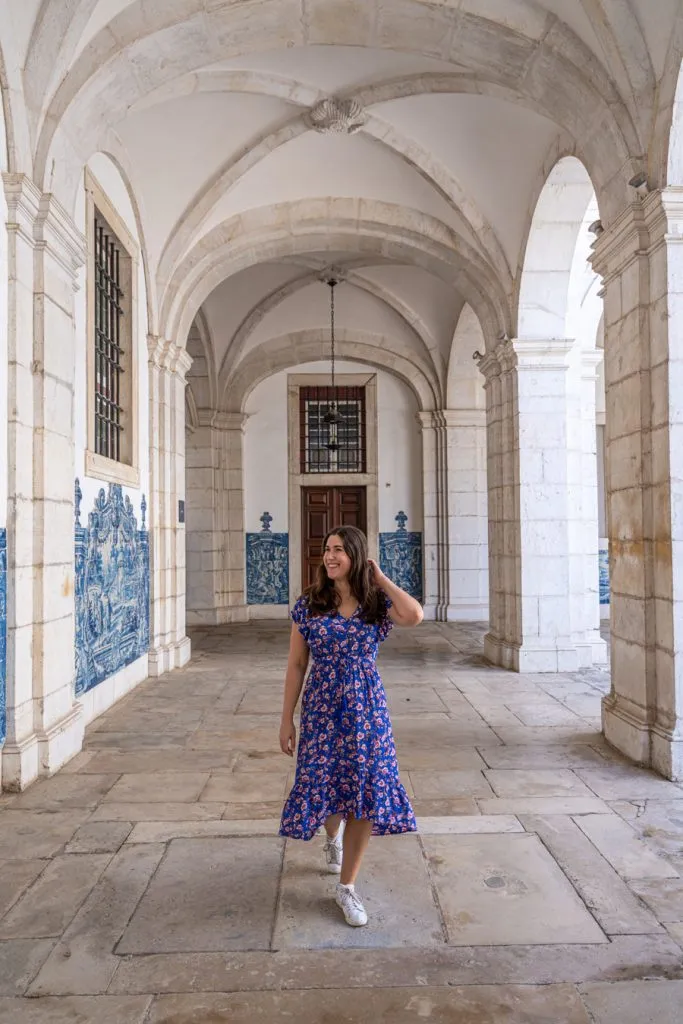
Some links in this post may be affiliate links. If you make a purchase through one of these links, we may earn a small commission at no extra cost to you. Please see our disclosure policy for more detail.
You don’t necessarily need to go into the Belém Tower.
As you’ve started planning your Lisbon travels, it’s practically guaranteed that you’ve come across photos of the famous Belém Tower along the way.
The tower is one of the most recognizable landmarks in Lisbon, a prime example of the Manueline architecture that the city is famous for, and is absolutely beautiful.
… but for travelers with only a short trip to Lisbon planned, there’s no reason to go inside.
While the exterior of the tower is definitely worth seeing (it’s gorgeous, free, and quick to visit), the interior is comparatively plain.
Getting to see the details of the tower up close is nice, but the rooms of the tower are empty, you can get equally stunning views from dozens of other viewpoints in Lisbon, and it is far too small to accommodate the number of visitors it gets each day.
If your visit goes as ours did, you’ll end up waiting in line to access each separate level of the tower–and none of them are really worth the wait.
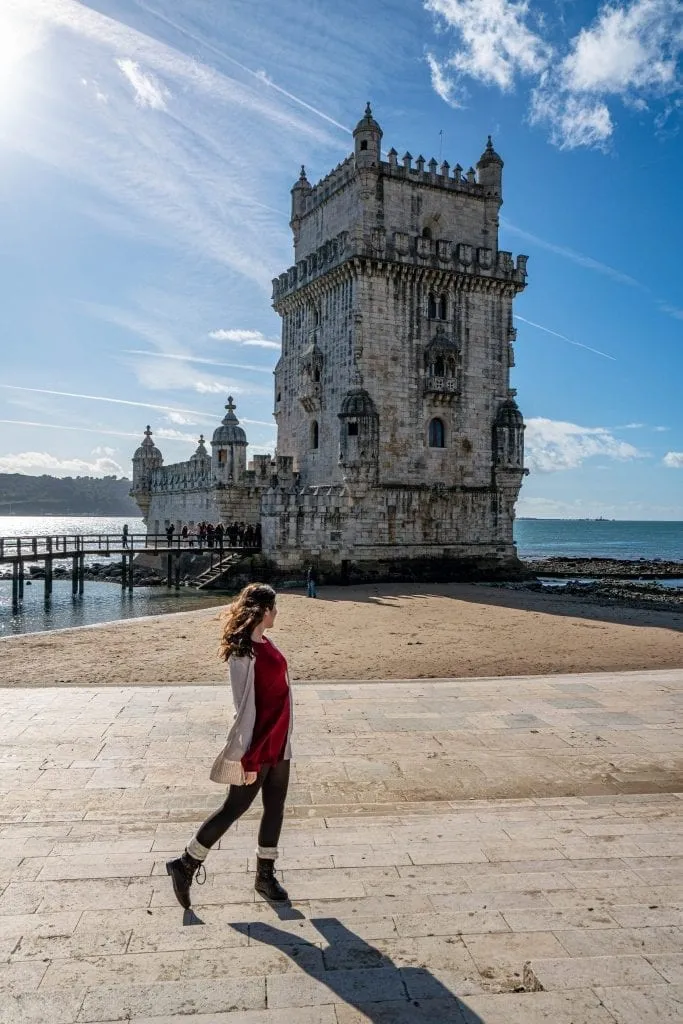
Buy tickets in advance for the most popular attractions.
The top attractions in Lisbon, including the Jerónimos Monastery and Castelo de São Jorge , get extremely crowded, and it will make your life much easier to purchase tickets in advance!
This Lisbon travel tip goes for nearby Sintra, too, especially at the iconic Pena Palace and the dreamy Quinta da Regaleira.
We tend to book most of our tickets for Lisbon in advance through Get Your Guide or Tiqets , both of which are reputable and easy to use.
Shop tickets and tours for visiting Lisbon today!
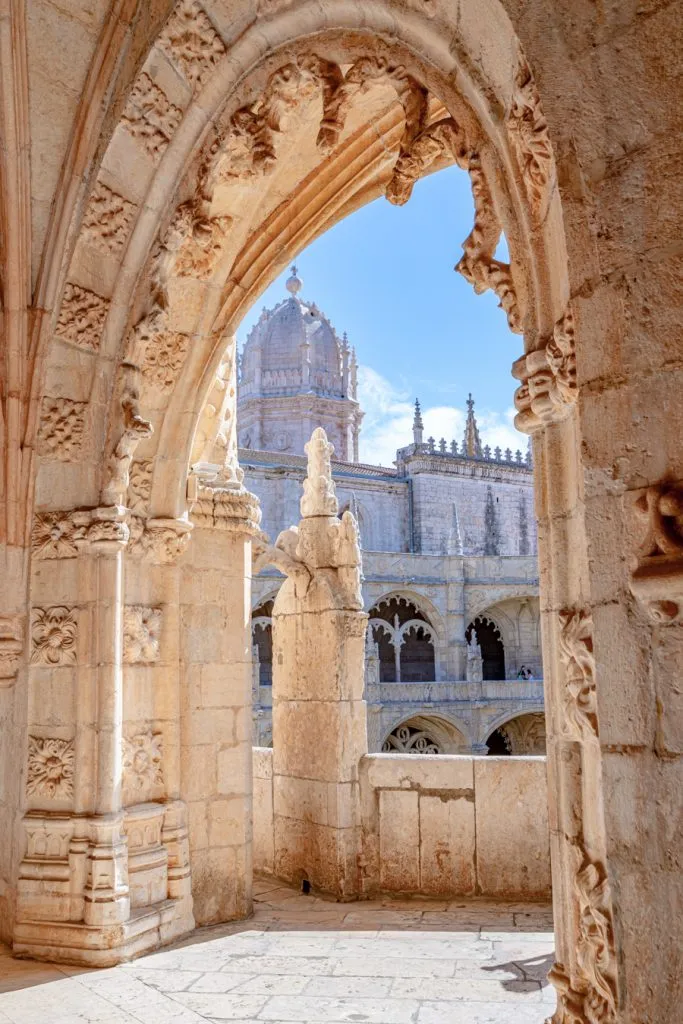
There’s no reason to wait in line for the Santa Justa Lift.
The striking Santa Justa Lift, designed and built by a student of Gustave Eiffel, is one of the most popular landmarks in the city.
Originally built as public transportation to connect Baixa to Chiado/Bairro Alto, today riding the lift is the definition of a tourist trap, drawing long lines at all hours of the day.
However, if you’re standing in the shady Largo di Carmo, facing the roofless church (which is absolutely worth visiting), you’ll notice a small street to the right that leads along the side of the church.
Follow it, and in less than a minute, you’ll find yourself at the top of the famous Santa Justa Lift!
You can walk out onto the lift for free at this point, and enjoy the exact same views that the visitors waiting in line down in Baixa are waiting for–but without cost or having to wait.
The view is beautiful, too, especially when standing out on the lift and facing Castelo de São Jorge.
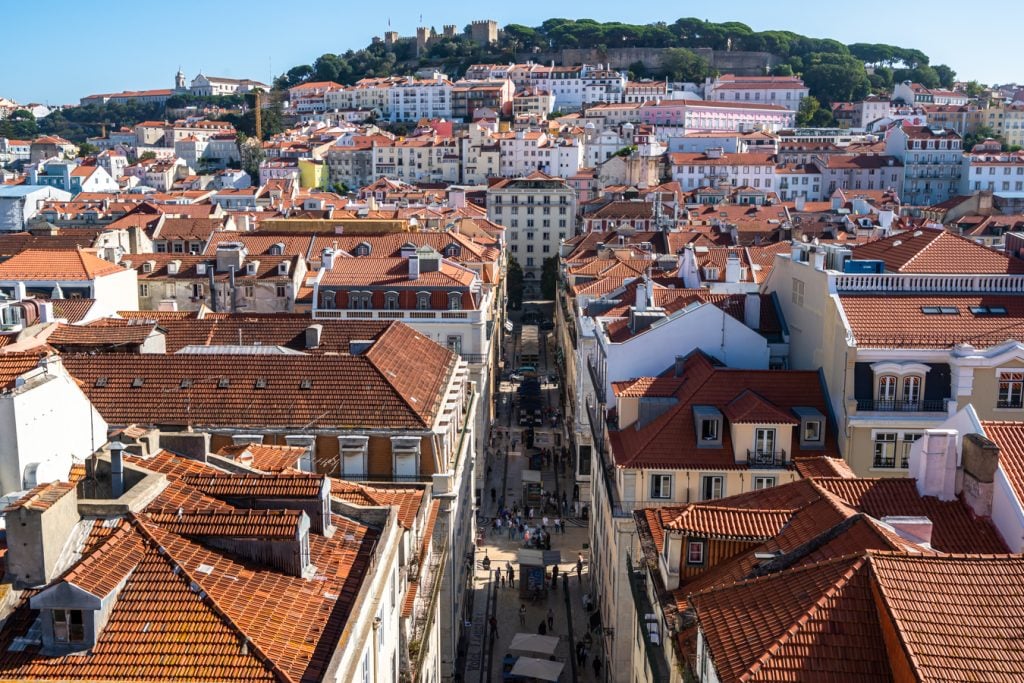
Lisbon’s hidden gems are truly worth the effort.
While the city’s top attractions definitely tend toward being very crowded today, there are hundreds of incredible things to do in Lisbon that draw a fraction of the visitors despite being well worth a visit.
A few of our favorites include the Monastery of São Vicente de Fora (beautiful azulejos and incredible views from the roof), the National Museum of the Azulejo (famous yet uncrowded as it’s a bit out of the way), the National Coach Museum , and the Calouste Gulbenkian Museum .
The sky is truly the limit when it comes to less-visited museums and monuments in Lisbon, though!
Other incredible options include the National Pantheon, the Ajuda Palace , and the garden of Quinta dos Azulejos.
You can read our guide to Lisbon’s secret spots here .
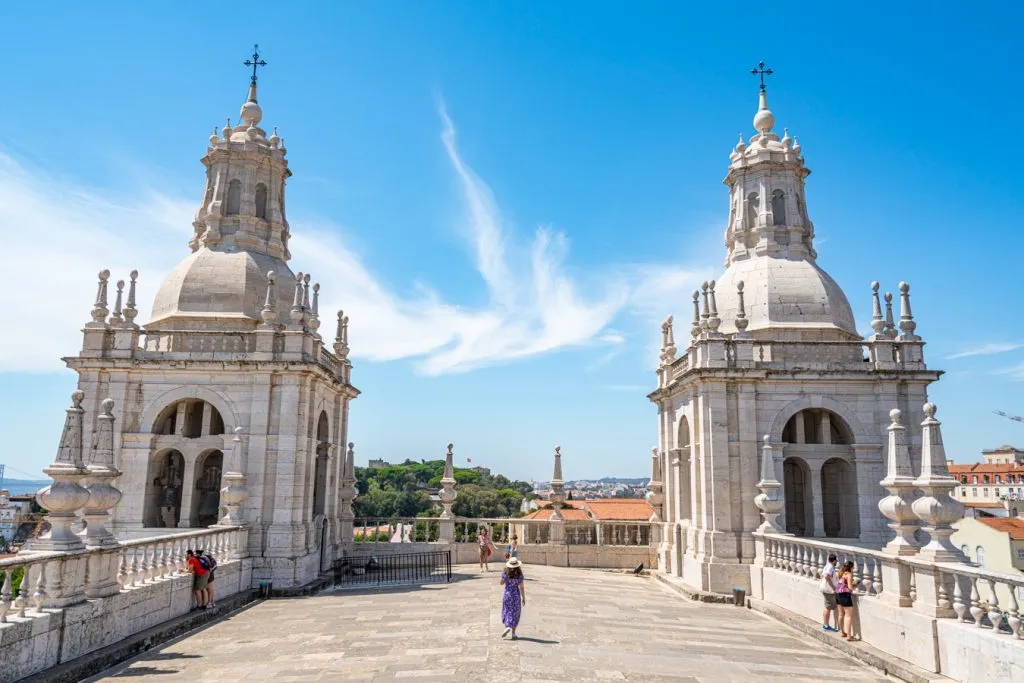
Don’t buy a Lisbon Card without planning your trip first.
Buying a Lisbon Card is a popular option for people visiting Lisbon for the first time, but we recommend not buying one until you plan your trip to Portugal in a bit more detail!
The biggest reason to buy the card has less to do with the attractions, and more to do with the ease of navigating Lisbon’s public transportation system.
With a Lisbon Card, you’ll be able to travel around with Lisbon’s buses, trams, metro, and trains (including the train to Sintra ) for one price.
This is definitely appealing, but how much actual cash value having a Lisbon Card is worth depends heavily on how much public transportation you plan to use (and whether you’re comfortable buying tickets in a more traditional way).

While the Lisbon attractions included with the card are certainly worth visiting, beyond the Jerónimos Monastery, most of them don’t typically feature on a first-timer’s Lisbon itinerary .
And, they’re not even all in Lisbon!
Alcobaça Monastery and Batalha Monastery, for example, are some of my favorite places in Portugal… and are located more than an hour outside the capital.
We’re certainly not saying that you shouldn’t buy the Lisbon Card –it can be a great fit for some travelers–but don’t assume it’s an obvious advantage, either.
Also, note that while you can purchase the card online, you’ll still have to pick up the physical card during your Lisbon travels before you can redeem it.
Check the Lisbon Card’s prices and inclusions now!
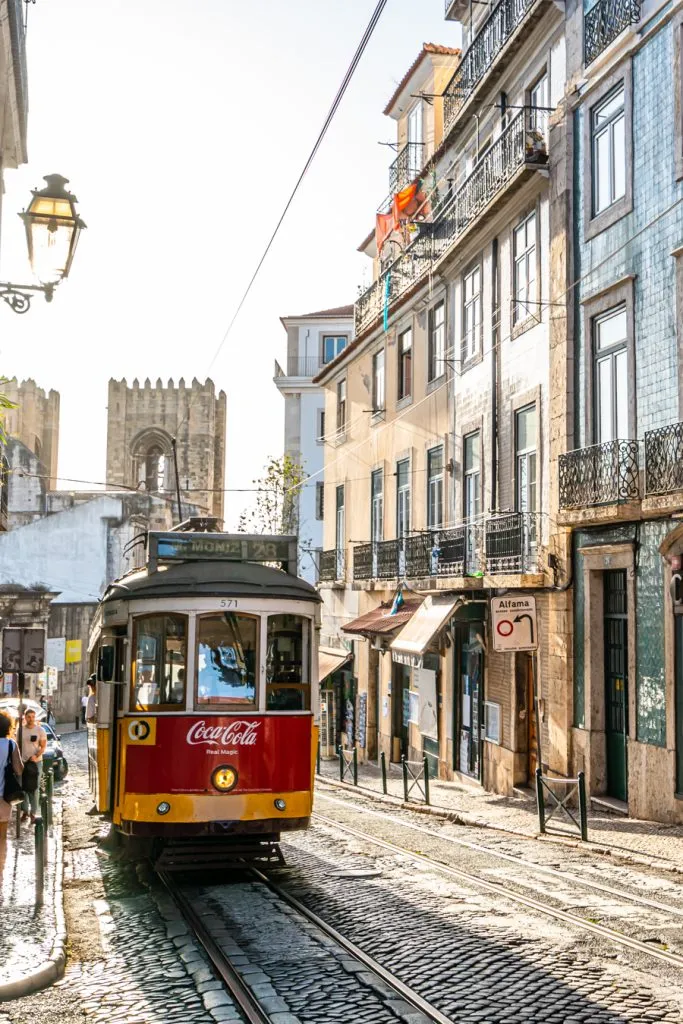
Group your sightseeing by neighborhood.
Many of the Lisbon neighborhoods that travelers like to visit on their first trip to the city are quite spread out from each other.
This is especially true for Belém, which feels completely separate from Lisbon’s center despite being home to some of the city’s most popular attractions.
When planning a trip to Lisbon, be sure to note which attractions are near each other and plan your days based on geography.
For example, planning a day in Lisbon that includes visiting the Castelo de São Jorge, the Jerónimos Monastery, and the Carmo Convent back-to-back is a frustrating strategy.
Our recommended 3 day Lisbon itinerary conquers the city neighborhood by neighborhood, making it easier to see more with less time!
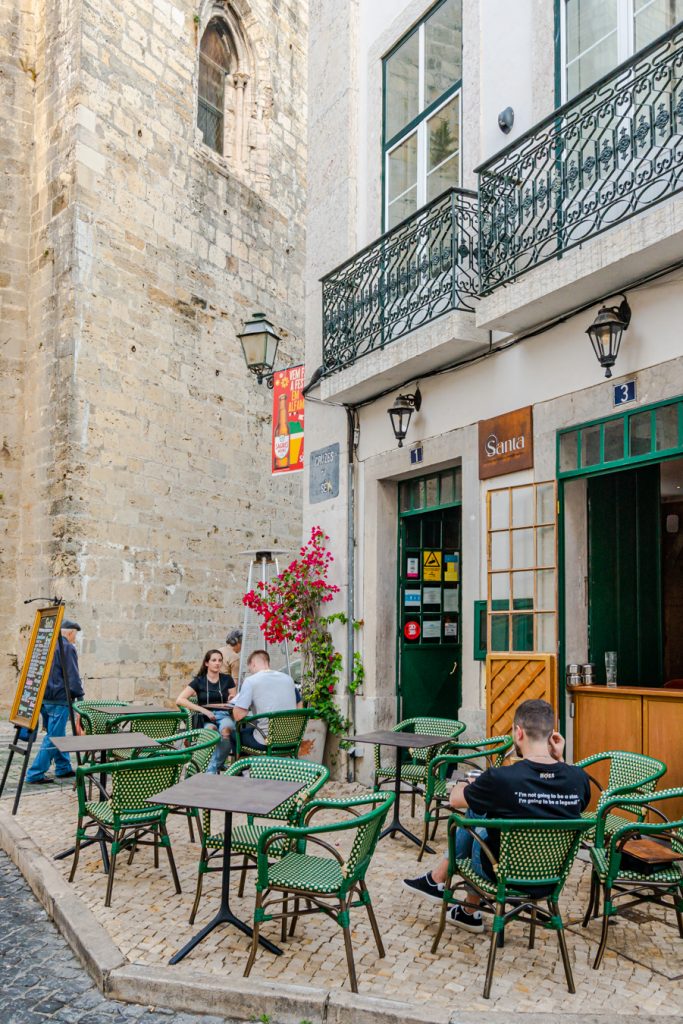
… and start at the highest point.
Climbing steep hills is an unavoidable fact of life when visiting Lisbon, but you can give your knees a break by starting at the highest point in any given neighborhood!
A couple of destinations that make great starting points to head downhill from include the Miradouro da Graça, the Miradouro de São Pedro de Alcantara (one of our favorites in the city), and the Castelo de São Jorge.
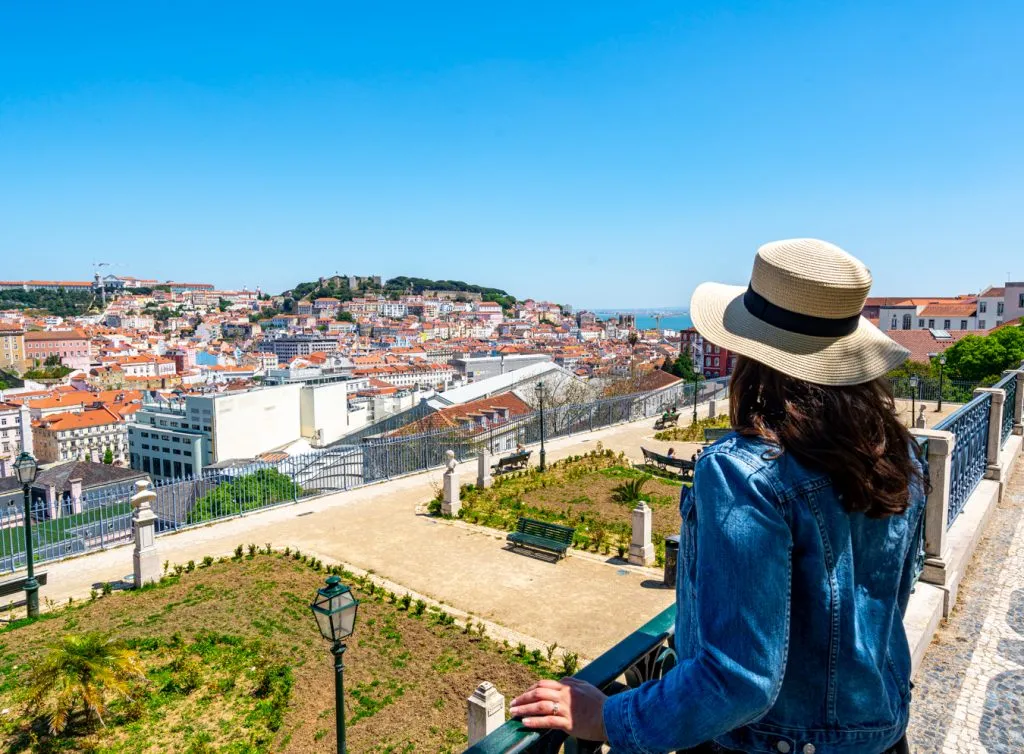
Don’t expect an interior when visiting Castelo de São Jorge.
Lisbon, and Portugal in general, is lousy with opulent palaces built and decorated to the hilt throughout the centuries… but the famous Castelo de São Jorge is not one of them.
Today, the castle is famous for its views and for the fact that you can stroll around the top of its ramparts, soaking in the views and imagining what once was as you do.
Though the hill that Castelo de São Jorge sits atop is incredibly important to the history of Portugal (to start with, the country was founded on this spot in 1143 when the Portuguese conquered the city from its Islamic rulers), the actual structure on the hill has been rebuilt many times.
That’s not to say that the castle isn’t worth visiting, but don’t expect details like throne rooms or furnishings here (there are, however, lots of peacocks).
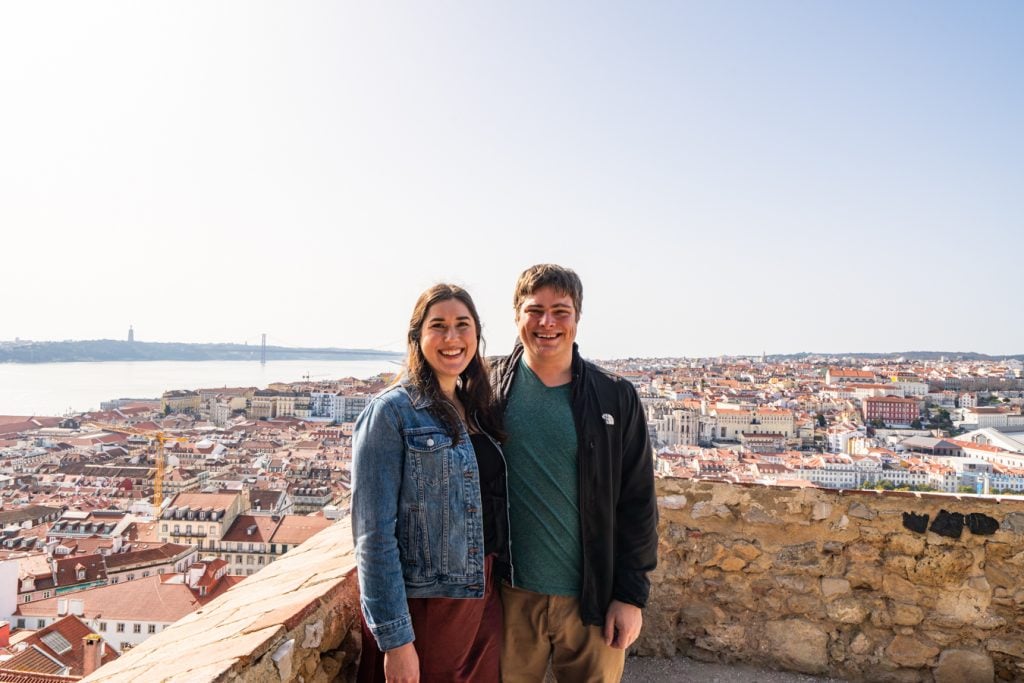
Picking a neighborhood and wandering is a great way to visit Lisbon.
While targeted sightseeing is a must if you want to experience the best things to do in Lisbon in a short amount of time, be sure to leave plenty of time in your schedule for wandering, too!
Lisbon’s many neighborhoods are a delight to explore on foot.
Beautiful areas like Alfama, Chiado, Bairro Alto, Belém , Cais do Sodré, and Baixa are lovely, and you’ll no doubt experience them when visiting Lisbon.
If you want to go a bit further afield to wander, though, consider also sampling Campo de Ourique (don’t miss the beautiful Prazeres Cemetery), Estrela (the Jardim da Estrela will forever be one of our favorite places in Lisbon, and the basilica is stunning too), Arroios, Príncipe Real, and Graça.
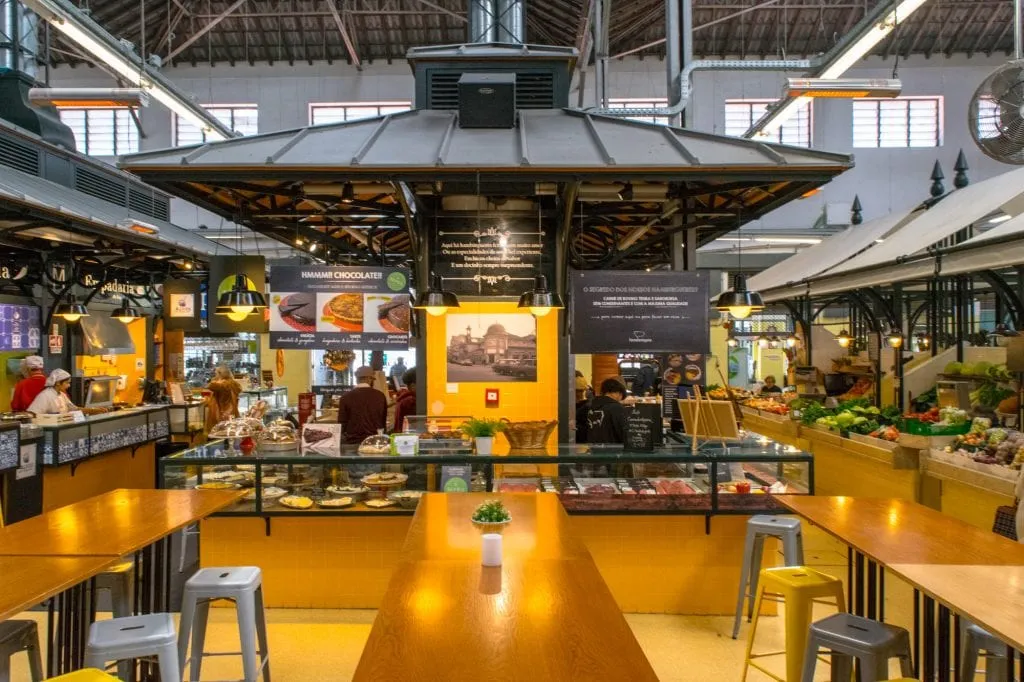
A sailboat cruise on the Tagus is a great travel experience in Lisbon.
The views of Lisbon from the Tagus are wonderful, and there’s nothing quite like experiencing the city from the water.
Lisbon’s history and culture are deeply tied to the Tejo and to the wide open sea that lies beyond it, and relaxing on a sailboat is a fantastic addition to any visit to Lisbon.
Plus, it’s simply lots of fun, and more affordable than you might expect!
Most Tagus River cruises leave from Belém, and you can easily add a cruise to your time there.
Personally, we’re partial to sailboat cruises (as opposed to large tourist boats), and if you can arrange your Lisbon trip so that you can enjoy the Tagus at sunset, all the better.
Book your Lisbon sailboat cruise today!

Most Lisbon churches are free to visit, so be sure to step inside!
While the Lisbon Cathedral and the Carmo Convent (though that one is a museum rather than a working church today) have modest entry fees, virtually every other church in Lisbon is free and easy to enter.
That even includes the stunning Church of Santa Maria de Belém that is attached to the popular Jerónimos Monastery (which holds the tomb of Vasco da Gama, among others).
Some of my favorite churches in Lisbon to visit include the Church of São Domingos, the Church of São Roque (a must for anyone who enjoys over-the-top opulent churches), and St. Anthony’s Church (don’t miss the crypt).
The Lisbon Cathedral is a bit controversial among travelers: historically important and rebuilt several times, the interior is much plainer than many expect, especially considering it is one of the only churches in Lisbon to charge an entry fee.
It’s beautiful, but very different in style to most in the city–if you’re on the fence about it or short on time, you can skip it.
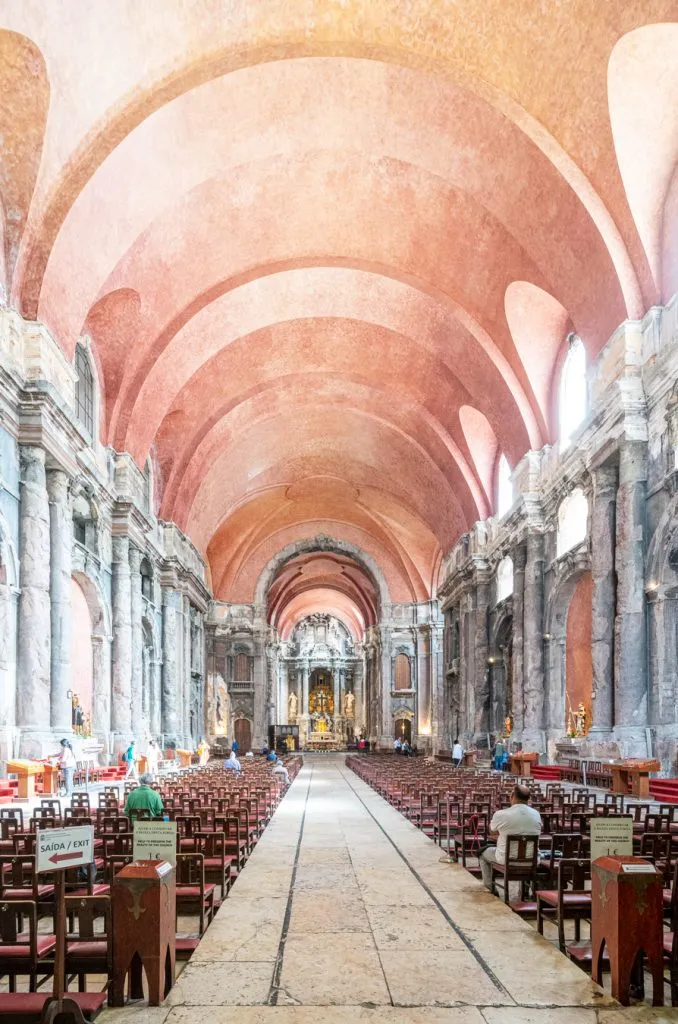
Don’t expect to be able to walk everywhere.
While Lisbon’s various neighborhoods tend to be very walkable in their own right, the city as a whole is fairly dispersed.
You’ll need transportation other than your own feet to travel between many neighborhoods–and luckily, Lisbon has plenty of options!
Lisbon’s taxis are generally plentiful and very easy to use, trams of course are popular, and the metro goes to a fair number of places, too (including the airport, though taking a taxi into the city is faster).
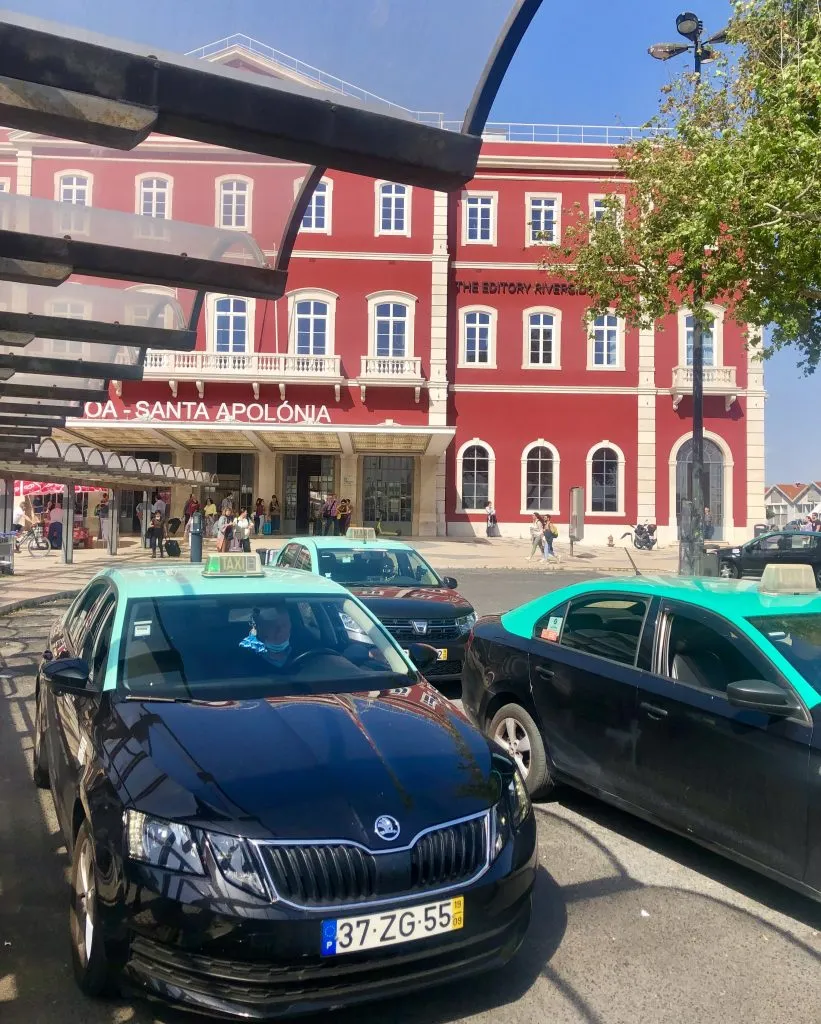
We’re not exaggerating about the hills.
You will absolutely get a workout when visiting Lisbon for the first time and sampling the city’s major sights!
Opt for very comfortable, sturdy shoes with a grip on them, and be prepared to work for your views.
If you’d like to avoid climbing many hills, structure your days carefully and budget for plenty of taxis (rates start at 3.50 and we regularly travel across the city for under 10 Euro).
Lisbon’s funiculars, Bica, Glória, and Lavra (the last being the least touristy) can also help out with the steep climbs in a few places.
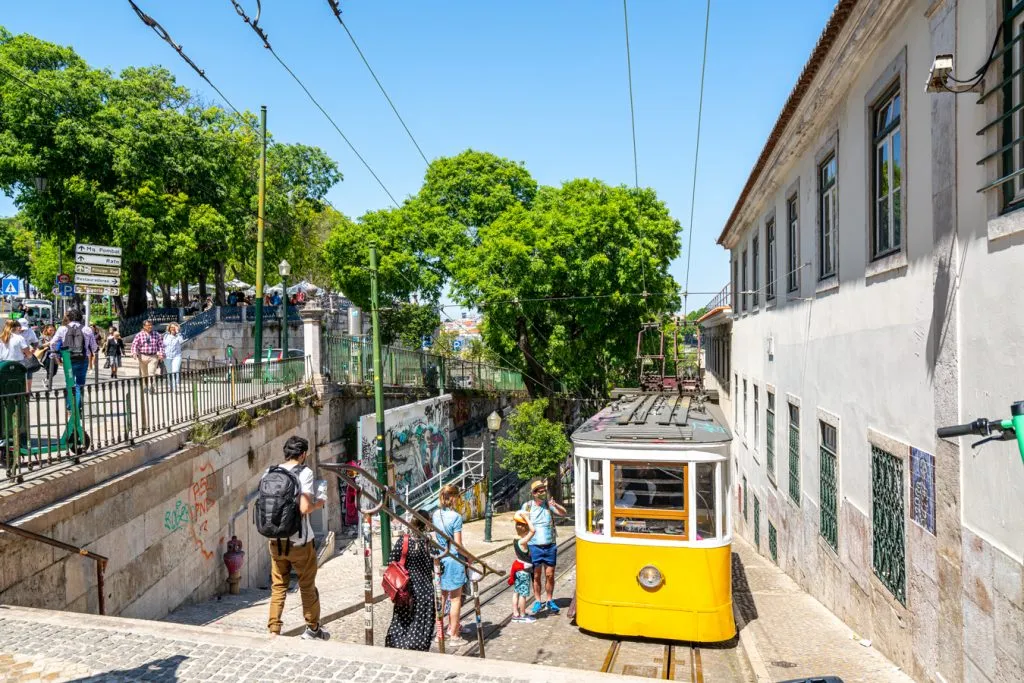
The fastest way between Baixa and Chiado is through H&M.
Funiculars aren’t the only way to shave a climb off your route!
The multi-story H&M store on Rua do Carmo has a series of escalators that make for an excellent shortcut between the neighborhoods of Baixa and Chiado, each of which is home to some of the top things to do in Lisbon.
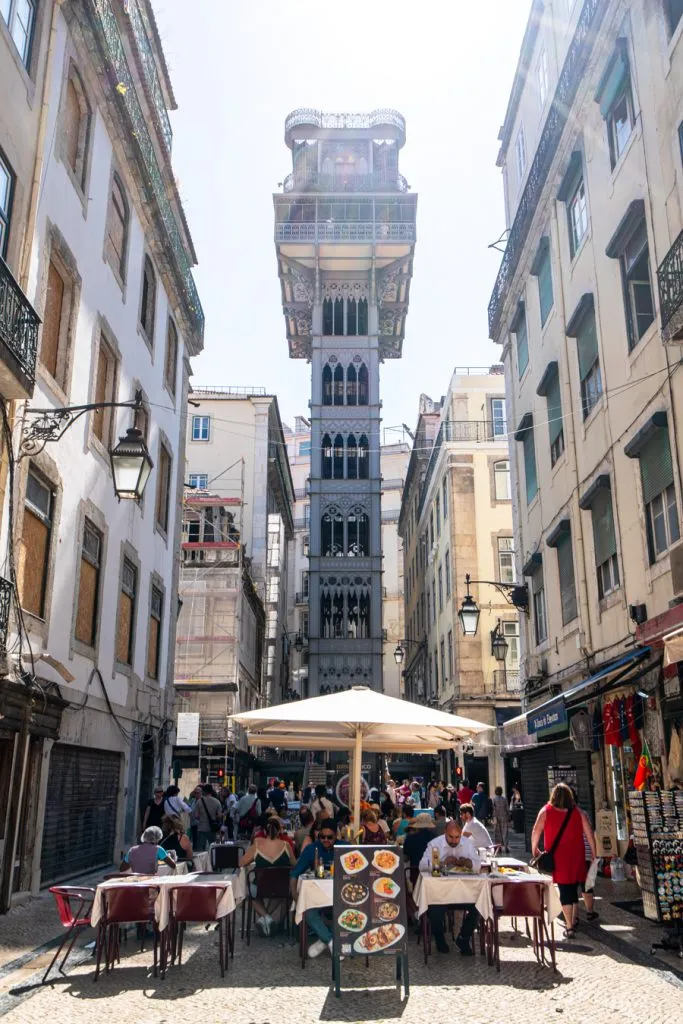
Tram 28 is not necessarily the best way to get around the city.
Long ago, someone wrote that riding Lisbon’s classic Tram 28 was a cheap, easy, and local way to see the best of the city.
This was undoubtedly great advice at the time, but it’s long outdated.
True, the Tram 28 route only costs 3 Euro (or is included with a Lisbon Card ), and trundles right past many of Lisbon’s top landmarks, including past the Praça do Comércio, through Alfama, right by top viewpoints like the Miradouro de Santa Luzia, and more.
On the other hand, it’s ridiculously crowded, the best views of the tram are actually from the outside, and it’s a bit of a magnet for pickpockets these days.
If you love trams, it may be worth riding for the experience–but if you just want to get across Lisbon, there are plenty of other ways to do so.
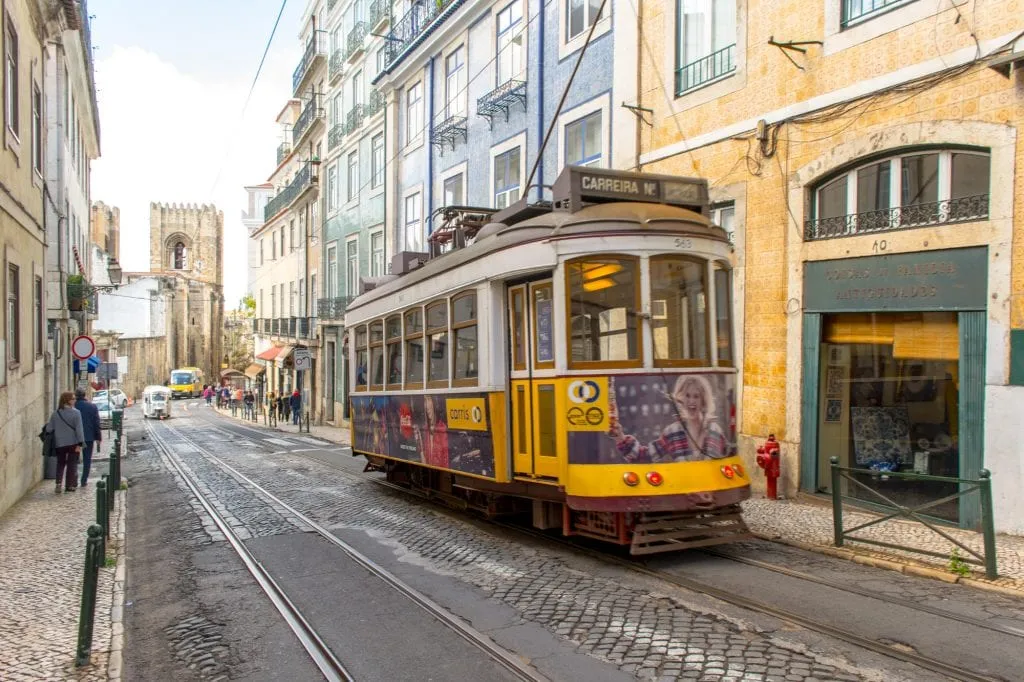
Taxis are the fastest way to get to the city center from the airport.
There’s a well-organized taxi stand right outside of the arrivals hall at the airport, and it’s the fastest way into the city.
Riding the metro is also doable and more budget-friendly, but it takes quite a bit longer.
Unlike some cities, there is no set fare for a taxi ride from the Lisbon Airport (technically named the Humberto Delgado Airport or Portela Airport) to the city center, however, the fare should run roughly 15 to 20 Euro.
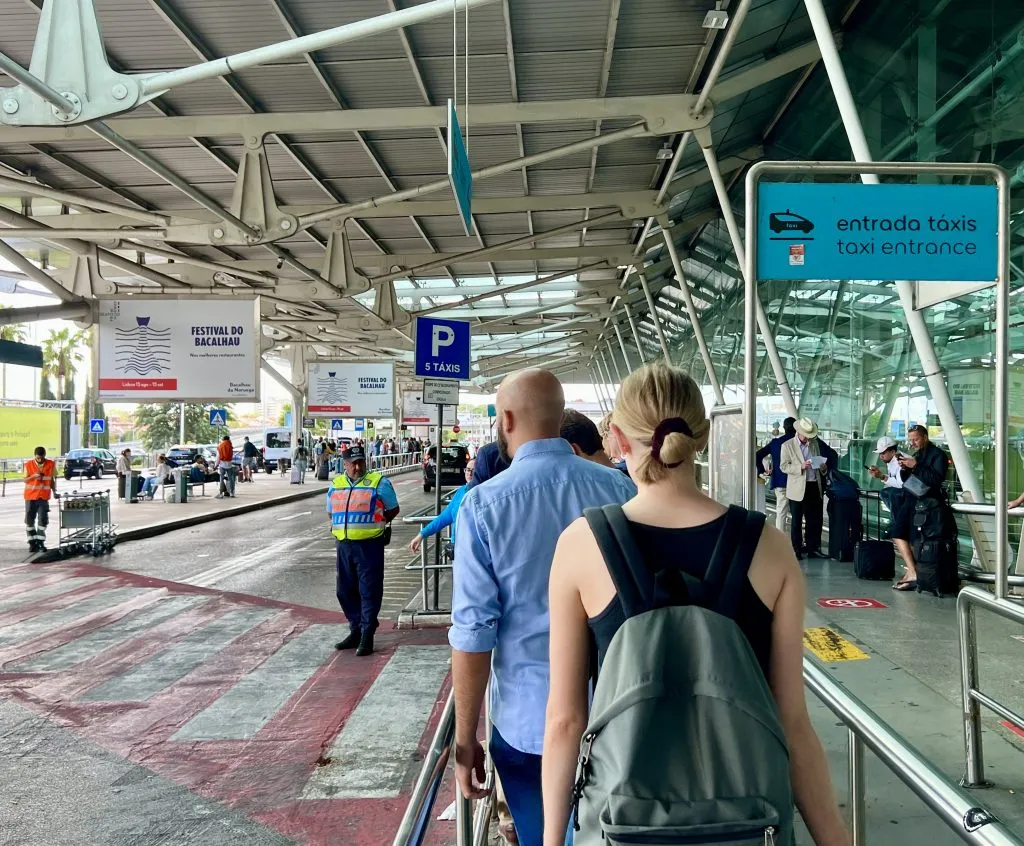
Download FreeNow for calling taxis.
FreeNow isn’t specific to Lisbon, but we use it here all the time!
Think of this app as Uber for official taxi rides.
It’s popular in many cities across Europe and comes in very handy both in Portugal and beyond.
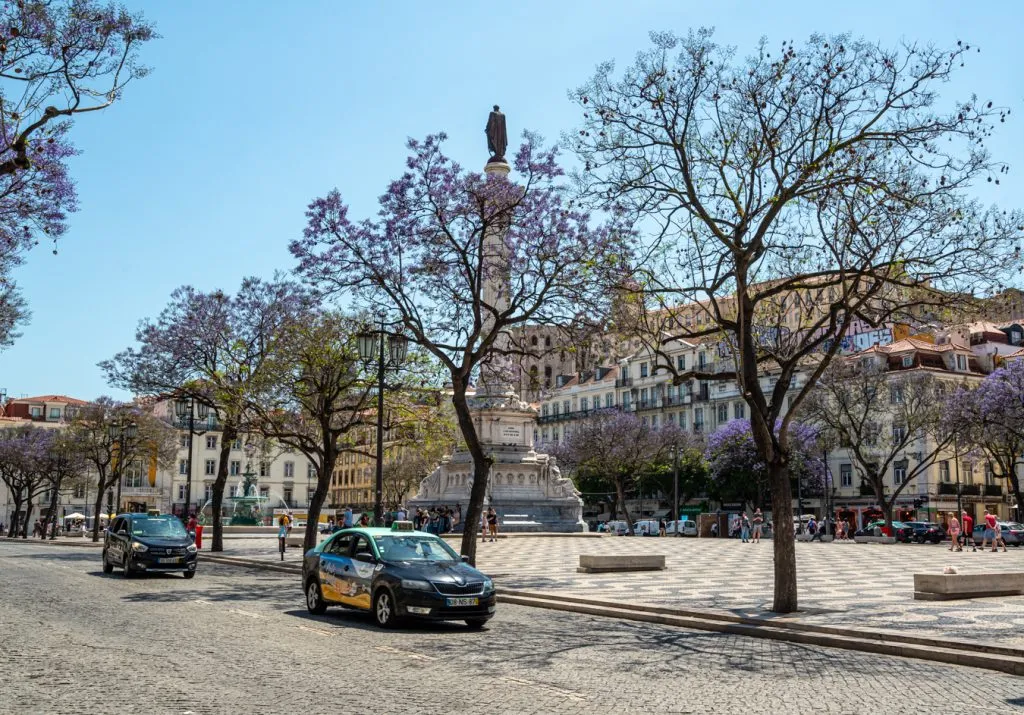
Sintra is wonderful, but it’s not Lisbon’s only day trip option.
When you’re planning a trip to Lisbon, you’ll no doubt hear about a thousand times that you have to take a day trip to Sintra.
Located less than an hour outside of Lisbon, Sintra is a beautiful place, filled with interesting and sometimes downright bizarre palaces.
Once a retreat for wealthy people ranging from Portuguese royalty to British aristocrats to an American socialite, Sintra’s palaces are well worth visiting.
… but they’re also very crowded, and far from the only day trip worth taking from Lisbon!
Honestly, I believe that Lisbon has better day trip options than the vast majority of European cities because there is simply so much variety!
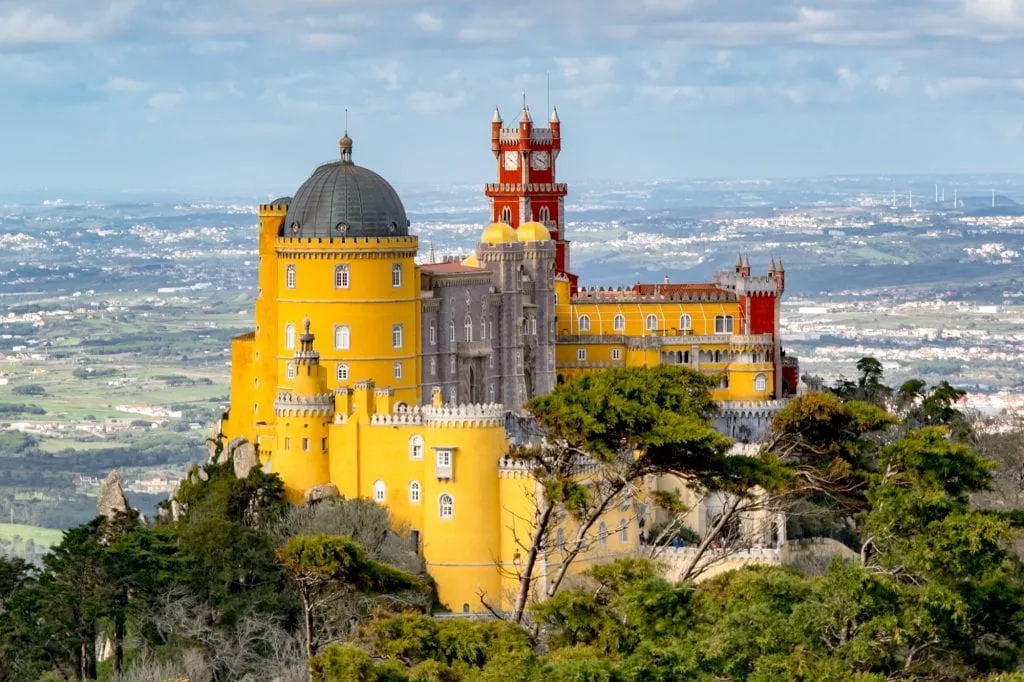
Want a beach town? Go to Cascais.
A stunning hike along the coast? Arrabida Nature Park.
The most beautiful monasteries you’ve ever seen? Alcobaça Monastery, Batalha Monastery, and Tomar’s Convent of Christ are waiting.
A medieval town to explore? Go walk the walls of Óbidos .
I could keep going, but essentially, don’t default to Sintra when planning a trip to Lisbon if another kind of day trip appeals to you more.
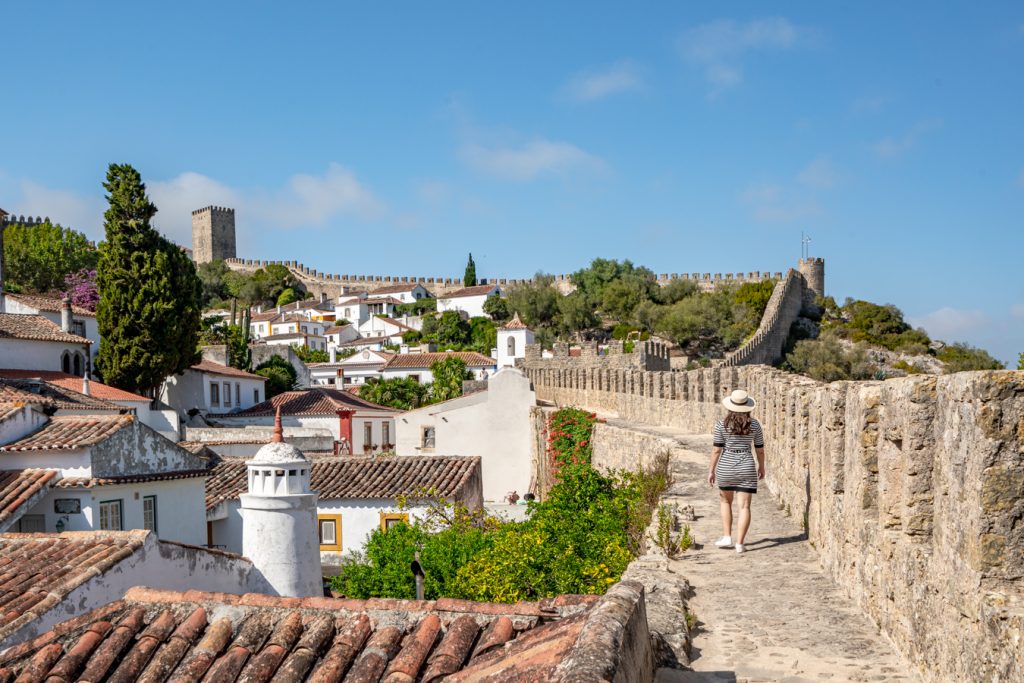
Lisbon has more than one train station, so double-check which one you need.
If you’re planning to travel away from Lisbon by train, whether on a day trip or further afield, be sure to check which station you need to leave from!
For example, most trains running from Lisbon to Porto leave from Santa Apolónia Station, while trains to Sintra leave from Rossio Station and trains to Cascais leave from the Cais do Sodre Station.
None of these stations are particularly far from each other, but you don’t want to end up heading to the wrong one during your Lisbon travels!
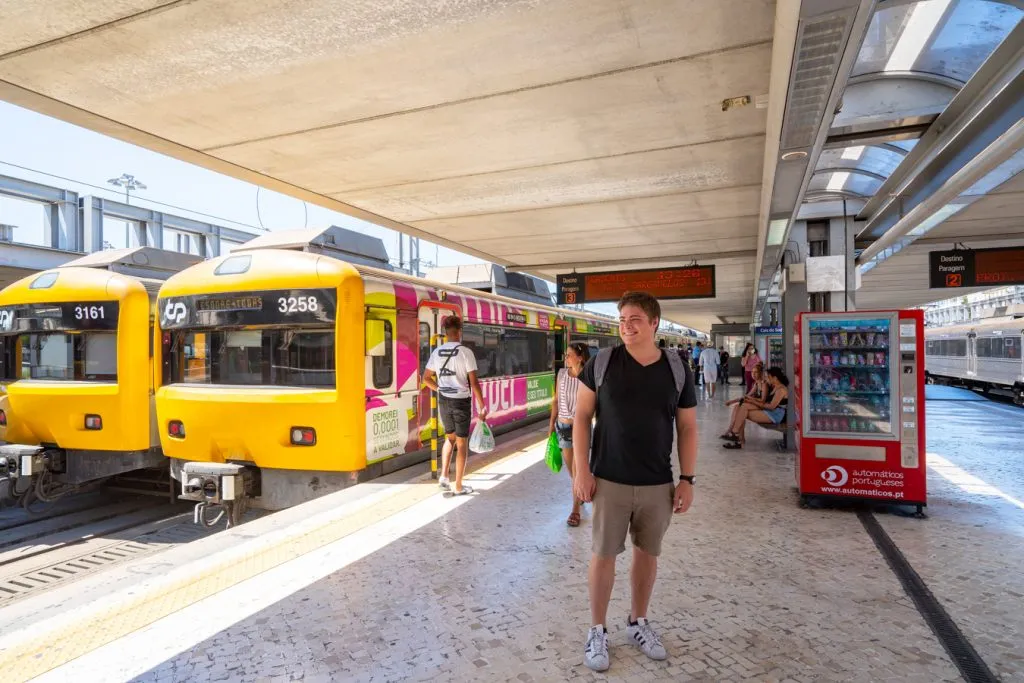
Trains are excellent, but taxis are often faster.
For many of Lisbon’s nearby day trips, a great compromise–especially when traveling with a group–between the comfortable but often slower trains versus the hassle of parking a rental car can be to take taxis.
You’ll spend a bit more, but you’ll often save quite a bit of time, too!
For nearby spots like Cascais and Sintra, we’ll often take the train on the way to our destination, and then call a taxi or Uber to go home when we’re ready.
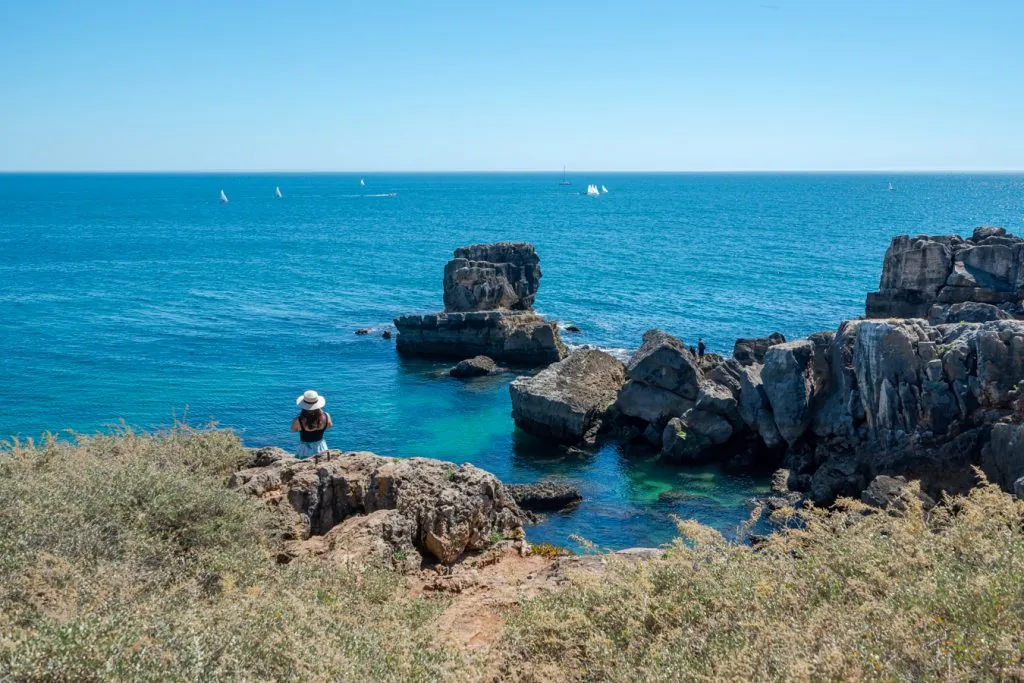
Not all trains have a/c, and they often trap heat.
… and when the trains do have a/c, it isn’t necessarily strong enough to cool the trains down to a comfortable temperature!
Lisbon tends to have fairly mild weather, so this isn’t often a problem, but if you happen to be visiting during a heat spell in the summer, keep it in mind when planning day trips.
On hot, sunny days, it can be hotter inside a running train than it is outside.
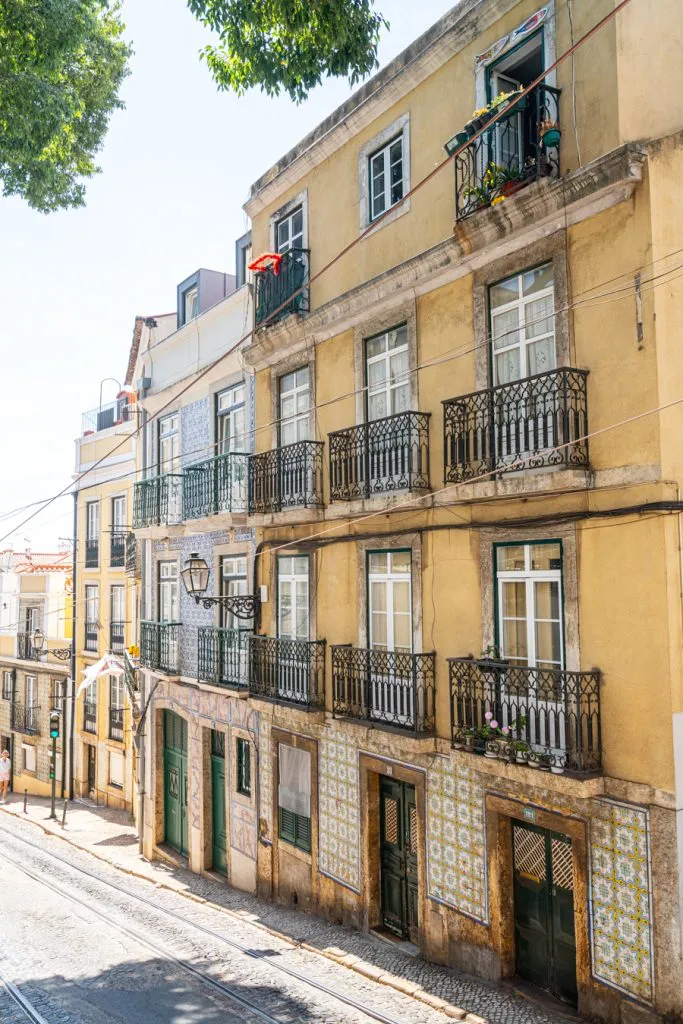
Don’t plan a day trip to Porto.
We know that trying to decide whether to visit Lisbon or Porto is a hard choice–and we love them both.
Resist the temptation to plan a day trip between them, though!
Even on a high-speed train, the 2 cities are simply too far apart to be good day trips from each other, especially because there are dozens of other worthy places to visit within an hour or 2 of each city.
(That being said, we have received enough questions about this that we have put together a guide on how to take a day trip to Porto from Lisbon for travelers who are determined to go!)
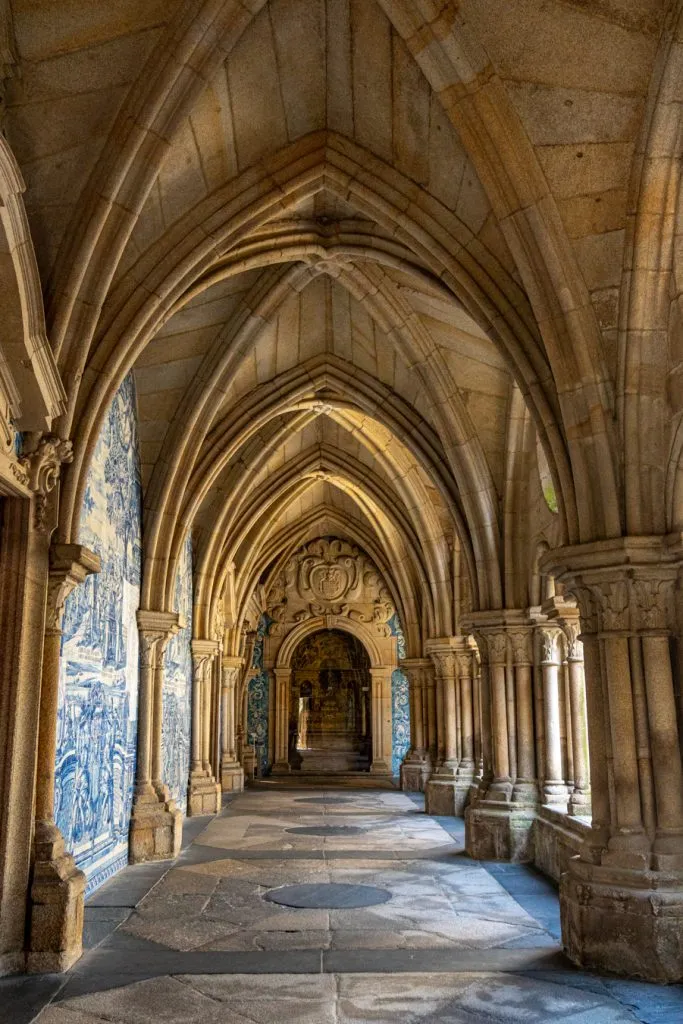
There aren’t beaches within walking distance of Lisbon’s center, but you can reach them.
Despite being located temptingly close to the water, there aren’t beaches in Lisbon’s city center (technically there’s a tiny patch of sand in front of Praça do Comércio at low tide, but it doesn’t really qualify as a beach).
You can reach the many beautiful beaches near Lisbon fairly easily, though!
Costa da Caparica, Estoril, Sintra, and Cascais all have wonderful beaches to choose from.
For a large, tried and true beach very close to Lisbon, Praia de Carcavelos is a local favorite.
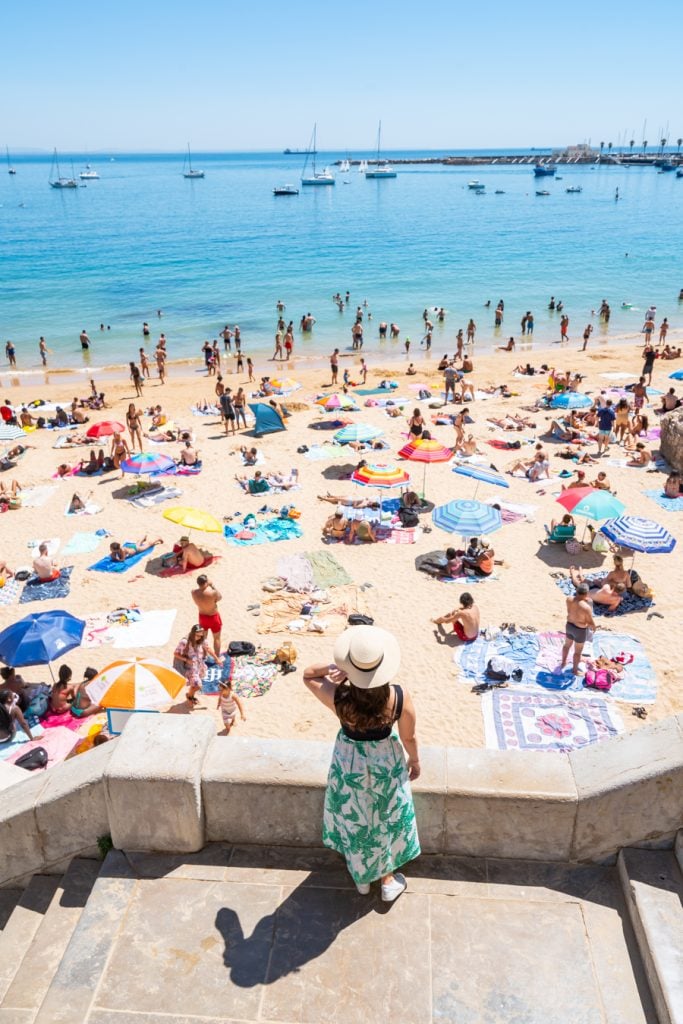
A food tour is absolutely worth the effort when visiting Lisbon.
We’re big proponents of food tours around the world: combining traditional local food with a chance to take a walking tour of a city is a fantastic way to get acquainted with a new place!
We’ve taken a few Lisbon food tours over the years, all wonderful, but on your first trip to Lisbon, there’s none that I recommend more highly than this food and wine tour .
With a convenient starting point that is very close to the Church of São Domingos, this food tour is filling, delicious, and informative.
Best of all, it focuses primarily on introducing you to classic Lisbon cuisine, which will help you with ordering in restaurants for the rest of your time in Portugal.
Perhaps the biggest endorsement we can offer is that we have returned to several of the included establishments since, including bringing our friends and family to some of them when they visit Lisbon!
Book your Lisbon food tour today!
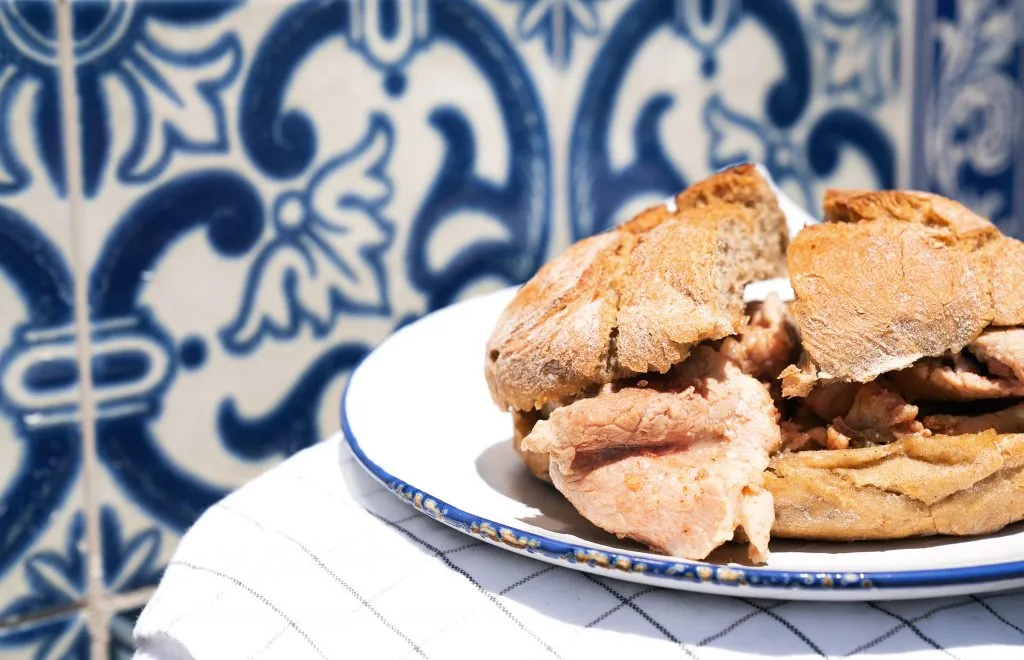
Don’t eat a francesinha in Lisbon if you’re also visiting Porto.
There’s probably no more (in)famous Portuguese sandwich than the francesinha, which is essentially what happens when you take a croque-monseiur and ask “you know, how can we make this dramatically more unhealthy?”
Bread, ham, sausage, steak, more sausage, cheese, more bread, all smothered in a tomato and beer sauce: these are the general ingredients behind the francesinha.
The sandwich is generally served with fries and sometimes topped with a fried egg–and yes, it’s quite gluttonous.
Is it worth trying when in Portugal? Sure, once in a very long while.
If you’re also heading to Porto, though, skip the francesinha while in Lisbon.
While you can find them on menus here, the sandwich was invented and is much more common in Porto–you’ll find plenty of delicious options up there!
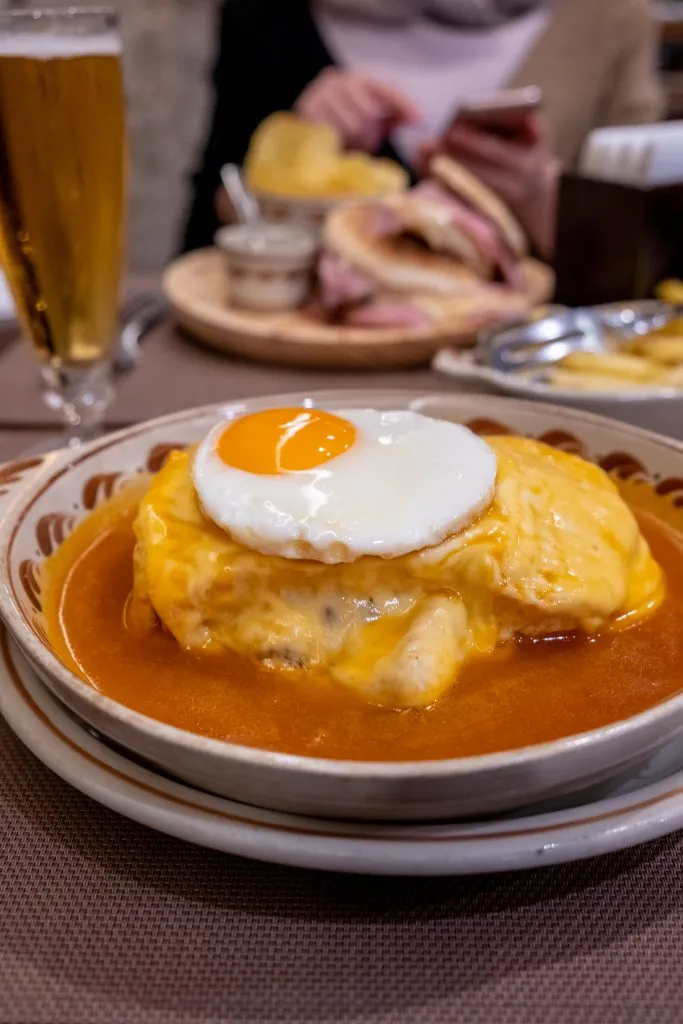
Be cautious with port (and ginjinha ).
Port is delicious, well worth sampling while in Portugal, and very strong.
At 20% alcohol (as opposed to around 12% on standard wine drunk in the USA), it is very easy to overindulge in port’s sweet taste without realizing it, even if you’re used to drinking.
Keep an eye out as you indulge in Portugal!
This goes for ginjinha , too (around 18% alcohol content), but as ginjinha is served in tiny cups and is treated more like a spirit, it’s not quite as easy to overdo as port is.
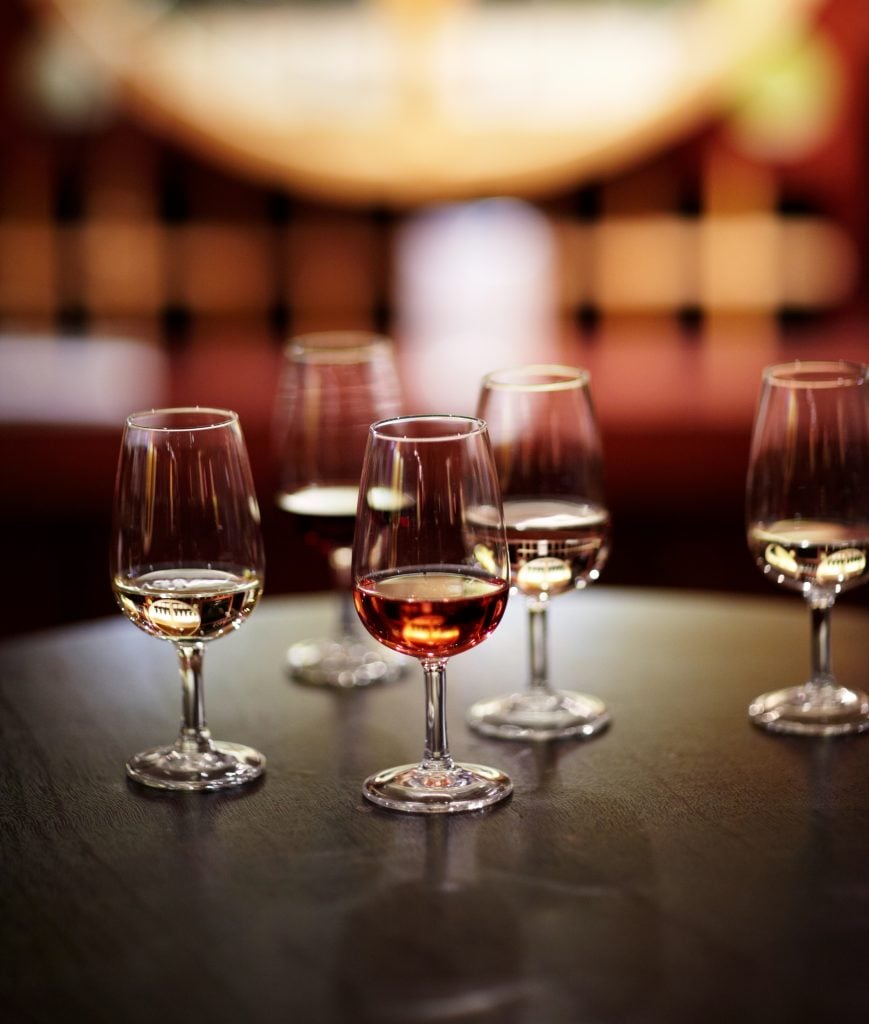
The key to appreciating pastéis de nata is eating them all.
More or less every bakery in Portugal has its own taking on the iconic pastel de nata , and trying a wide variety is a must when visiting Lisbon!
Some of the most popular bakeries include Pastelaria Santo António, Manteigaria, Confeitaria Nacional, Fábrica da Nata, and of course, the iconic and original Pastéis de Belém.
Everyone has their own favorites, and they can change from day to day, but you won’t go wrong with a pastel de nata (or 2, who’s counting?) from any of these spots.
Don’t forget to sprinkle the top with cinnamon and/or powdered sugar at least once!
Everyone has their own opinion on the sprinkling, too, but during your first trip to Lisbon, we’d recommend trying a bite each way.

… but at Pastéis de Belém in particular, consider getting a table.
The iconic Pastéis de Belém is known for its extremely long lines, but here’s the thing: the line for table service is generally much shorter than the one for takeaway orders!
And, as a bonus, it’s more fun to eat in the dining room!
The interior is spacious, allows you to order a drink, and the building itself is also fun to walk through (you may even catch a glimpse of people hard at work in the kitchen cooking up an endless number of pastéis de nata ).
Alternatively, if you are visiting Lisbon for a longer period of time and aren’t squeezing lots of attractions into each day, consider heading to Pastéis de Belém on Mondays, when the nearby Jerónimos Monastery is closed and therefore the Belém neighborhood as a whole is much quieter.
We once waited less than 5 minutes for a box of pastéis de nata to takeaway when visiting on a Monday!

Make reservations for dinner.
When it comes to dinner, Lisbon is a city that loves its reservations.
If you have your eye on eating in a particular place, be sure to make a reservation in advance!
Generally, reserving a table the day before or even during lunch service the day that you plan to eat dinner there is fine.
However, if you have somewhere particularly popular in mind or if you’re heading out on a weekend, consider booking a bit further in advance.
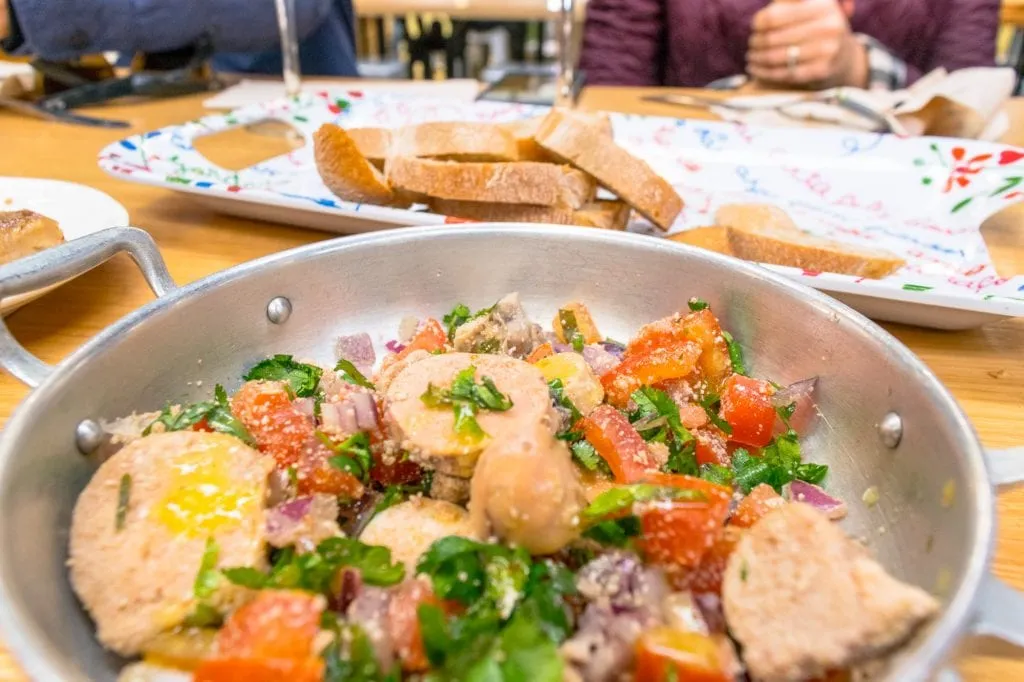
… and don’t plan to eat early.
People in Lisbon don’t eat as late as, say, those in Madrid , but they still tend toward eating on the late side!
Most restaurants open for dinner around 7:00 PM or 7:30 PM, and they won’t really start to fill up until after 8:00 PM.
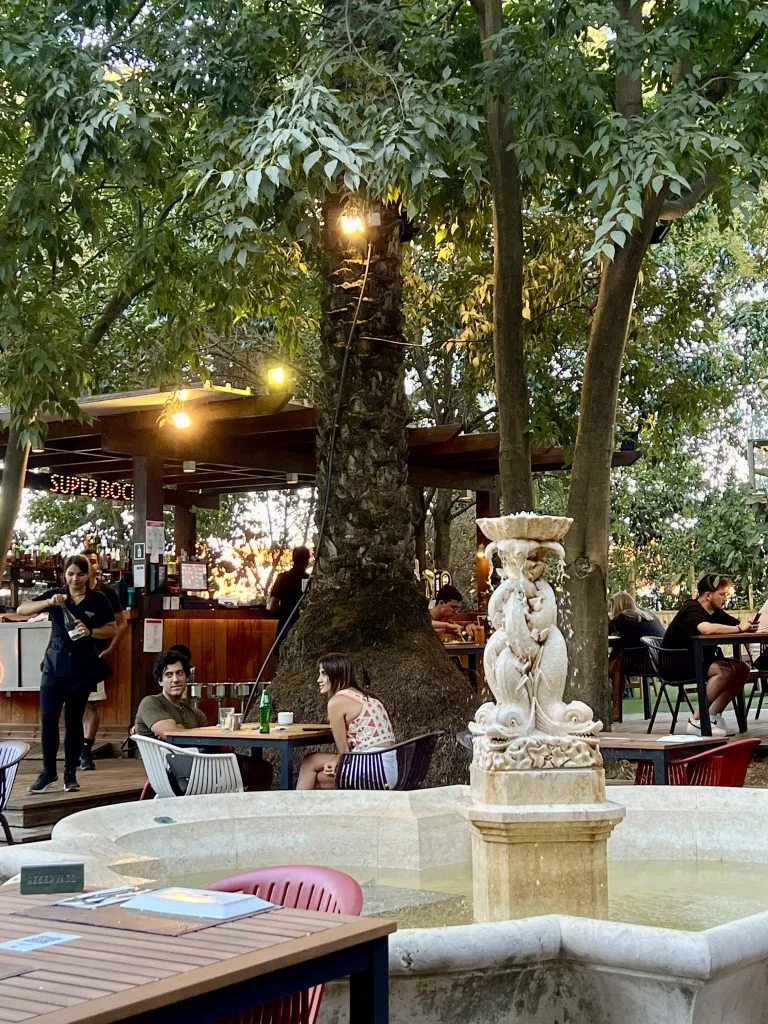
Bring very sturdy shoes.
Not only does walking in Lisbon require climbing lots of hills, but it’s also a bit hard on your feet in other ways.
The distinctive Portuguese pavement (or calçada portuguesa ) that you’ll see throughout the city offers its challenges: these walkways are both beautiful and a bit of a hazard in the rain.
Here’s the thing… they’re incredibly slippery when wet, especially if they happen to have fallen leaves sitting on them.
Watch your step, especially on hills, and opt for shoes with some grip on them!
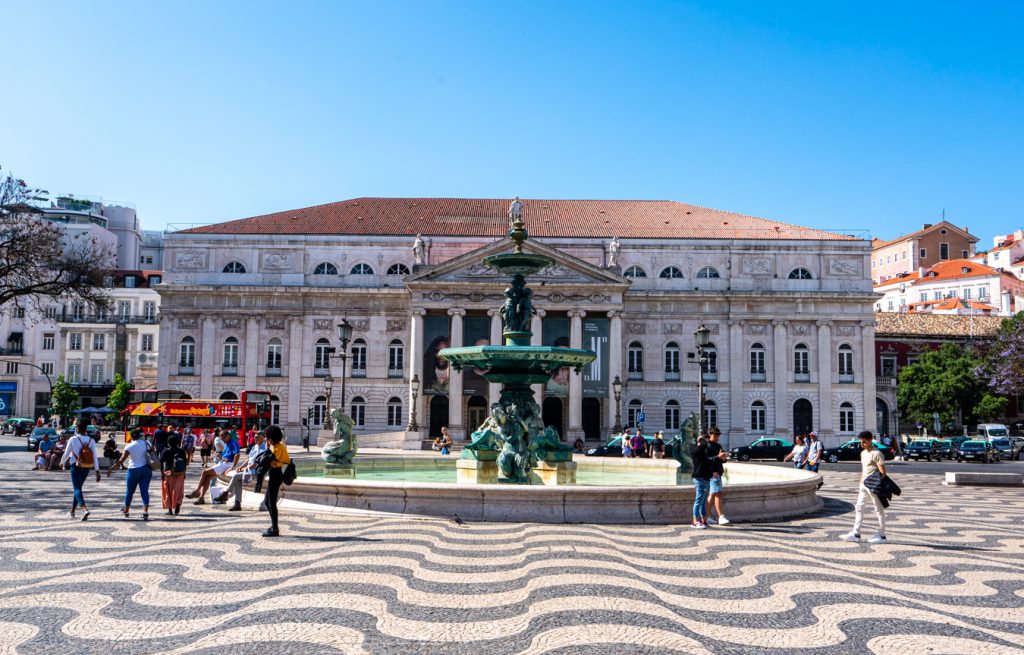
When it doubt, take a ticket.
In Portugal, it’s very common to use a ticket-based system rather than a traditional line/queue in order to serve customers.
If you see several people standing around in a shop, look around for a ticket machine: that’s how you wait your turn.
You’ll see this everywhere from train stations to butcher shops to banks when visiting Lisbon, Portugal.
Don’t stay in Bairro Alto or Cais do Sodré unless you’re looking for nightlife.
Bairro Alto and Cais do Sodré are popular, centrally located neighborhoods with plenty of hotels and hostels… and they’re also the center of much of Lisbon’s nightlife.
If your value peace and quiet after dark, these are not the right neighborhoods for you to stay in!
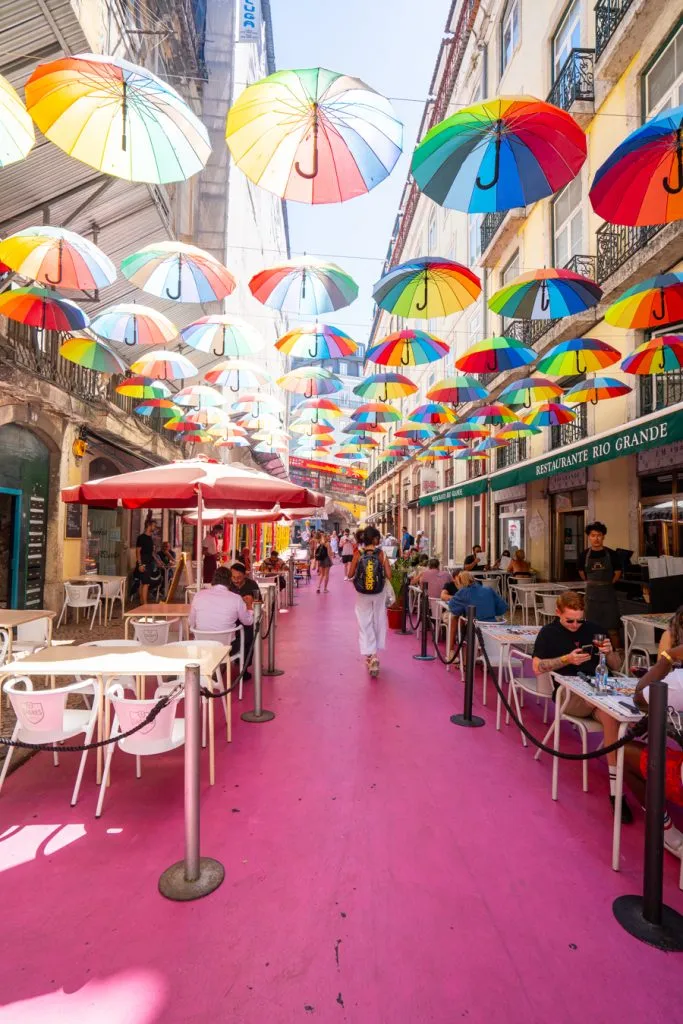
Make note of whether your hotel has air conditioning and/or heat.
Lisbon’s typically mild climate means that not all hotels (especially budget hotels) have air conditioning or heat–but you may want it!
That’s not solely because of temperature control, either.
For example, Lisbon struggles with dampness, mildew, and mold in many of its buildings over the winter months.
It’s not a huge problem for visitors, but if you’re concerned about dampness in your room or you have allergies, it’s best to keep it in mind when deciding where to stay in Lisbon.
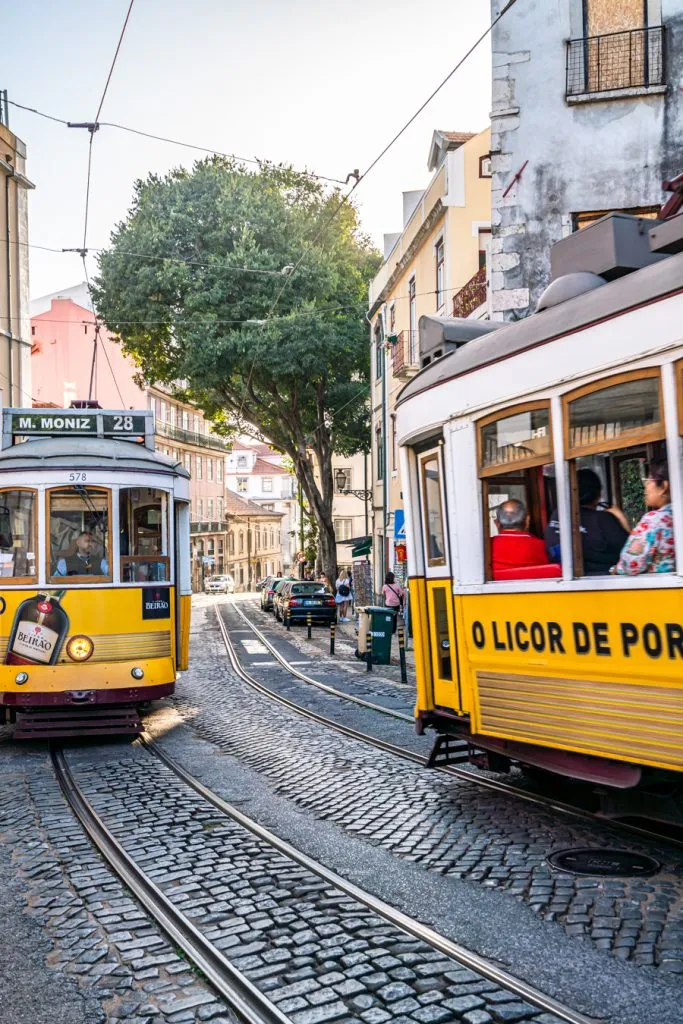
Learn a few Portuguese phrases before visiting Lisbon.
While you’ll find plenty of English speakers in the city, it’s still a good idea to learn a few Portuguese phrases before your trip to Lisbon!
Not only is it polite, but it can also be helpful (in our experience, taxi drivers, for example, rarely speak English in Lisbon).
A simple por favor (please) and obrigado/obrigada (thank you from a male speaker/thank you from a female speaker) can go a long way when visiting Lisbon!

About Kate Storm

In May 2016, I left my suburban life in the USA and became a full-time traveler. Since then, I have visited 50+ countries on 5 continents and lived in Portugal, developing a special love of traveling in Europe (especially Italy) along the way. Today, along with my husband Jeremy and dog Ranger, I’m working toward my eventual goal of splitting my life between Europe and the USA.
8 thoughts on “33+ Important Tips for Visiting Lisbon for the First Time”
Nicely done, I appreciate you have some uniques tips here compared to other blogs (the one about being careful on the Portugese pavement was very helpful). Thanks!
Thanks, Justin! Hope you have a great time in Lisbon. :-)
One of the best blogs out there. Thank you for the wealth of information.
That’s great to hear, thank you! Hope you have a great time in Lisbon :-)
What a wonderful source of information — thank you! My girlfriend and I are planning a trip to Lisbon in March. It’s our first time there and we’re wondering what part of the city is best for our accommodation. We plan to do lots of walking and would like to be pretty central. I spotted something interesting in the old part of the city and wonder if that might be a reasonable location. Any advice would be SO appreciated!
Thanks so much, Susanna!
As far as where to stay, there are lots of good options. We go over the neighborhoods in a bit more detail on the “where to stay” section of our itinerary posts: https://www.ourescapeclause.com/3-days-in-lisbon-itinerary/
Short answer: Baixa is by far the most accessible (central, lots of transport options, easy to get around), but it is also the most unapologetically touristy area. Alfama, the more traditional old town, is beautiful and central but not quite as convenient transport-wise due to the steep hills. Chiado is great if you want something close but not *too* close to the action, and Bairro Alto is best if you’re planning to join in on the nightlife (ie, don’t mind noise).
Hope you guys have a wonderful trip!
Thank you so much for all your helpful articles about Lisbon! By the way, do you know if we can get a bus from Oriente to Fatima? Since we’re going on a holiday, how do we book tickets in advance? Thank you!
As far as I know, buses to Fatima leave from the Sete Rios train station, so you’ll first need to travel from Oriente to Sete Rios before hopping on the bus.
You can book bus tickets in advance here: http://www.rede-expressos.pt (this is the Rede Expressos bus company website, which has an English version).
Hope you have a wonderful trip!
Leave a Comment Cancel reply
7 of the best things to do in Lisbon
Nov 26, 2023 • 6 min read

From riding the city's iconic trams to visiting Unesco-listed sites, here are Lisbon's top experiences © Gabriel Mello / Getty Images
Over the last decade or so, Lisbon has emerged as one of Europe’s top tourist destinations.
With its cobbled alleys, soft color palette, UNESCO-listed heritage sites and white-domed cathedrals, it has also drawn a flux of new residents, all seduced by its beauty and balmy weather. Here's our guide to the best things to do in Portugal 's capital city.
1. Visit Belém and its UNESCO-listed monastery
One of Lisbon’s few must-see sights is Belém 's undisputed architectural showstopper, the Mosteiro dos Jerónimos . You will almost certainly want to photograph the stunning honey-stone Manueline cloisters inside this UNESCO-listed 1495 monastery. On the nearby riverfront, another UNESCO-listed signature sight is the Torre de Belém . This chess-piece-like fortress epitomizes the excess of the Age of Discovery, and the tower top rewards stair-climbers with sublime views over the Tagus. When you're done with sightseeing, cocktails and pomegranate-pink sunsets await down by the river.
Planning tip: Time your visit to Mosterio dos Jerónimos for early or late in the day if you want to avoid the crowds.

2. Soak up all those stunning views from Lisbon's miradouros
Legend has it that Lisbon, like Rome, was built upon seven hills. The city – reputed to be Europe’s second-oldest capital after Athens – has mushroomed since its founding some 2,700 years ago and now covers many more than just seven hills, meaning that there are plenty of vantage points to take in the views. Known as miradouros in Portuguese, these spots dot the historical center, affording stunning vistas of this pastel-hued metropolis and the mighty Tagus River along its southern edge.
Local favorite miradouros include São Pedro de Alcâtara , a postage-stamp-sized garden in the trendy Príncipe Real neighborhood where you can soak in the view while sipping a glass of rosé, and, directly across town, the Miradouro da Graça that looks out over the nearby Castelo de São Jorge , the ruins of an 11th-century Moorish palace.
For picture-perfect panoramic views similar to what’s on offer at the Elevador Santa Justa (a turn-of-the-20th-century public transit project linking the central Baixa neighborhood with its hilltop neighbor, the aptly named Bairro Alto, or "high neighborhood") head to TOPO , a terrace bar on the top floor of a shopping center off the fast-gentrifying Martim Moniz Square.
Planning tip: The best time to visit is sunset, when Lisbon’s hallmark golden light illuminates the city.
Explore Miradouro da Graça effortlessly with GetYourGuide. Book your tour today .

3. Tour the city's best art museums
Get a sense of Portugal’s once-global presence at the Museu Nacional de Arte Antiga , the country’s answer to the Louvre. It contains treasures of Portuguese and European art, but also pieces that were taken from formerly colonized regions that once stretched from West Africa to India to Japan. Housed in a 17th-century palace in the Lapa neighborhood, the museum also has a manicured garden that boasts an enviable view over the Tagus.
Across town, the Museu Calouste Gulbenkian offers visitors a whirlwind overview of the history of art, from ancient Egypt to the present day. Amassed by the Turkish-born British financier Calouste Gulbenkian, the eclectic collection is widely acknowledged as among the premier private collections in the world.
Transform your visit to Museu Nacional de Arte Antiga by booking with GetYourGuide.

4. Don't miss a live fado performance
The Portuguese word saudade , which loosely translates in English as longing, nostalgia or wistful yearning, is widely considered a defining quality of the Portuguese national character. It’s also at the heart of Portugal’s national music, fado, which is tinged with melancholy even at its most upbeat and is often nothing short of a heart-wrenching cri de coeur , set to a pithy classical guitar. Thought to have originated in Lisbon in the early 19th century among sailors and dock workers, the soulful musical style has become so deep a part of the national culture here that when its most famous singer, Amália Rodrigues, died in 1999, the government declared three days of official mourning.
To leave Lisbon without seeing fado performed live would, then, verge on the criminal. Luckily, restaurants known for their live fado shows abound in Lisbon, particularly in the popular Alfama neighborhood where the style got its start. The Mesa de Frades , a cozy, intimate space known for its top-notch performers, is among the top venues, attracting such fans as Madonna, who frequented the restaurant while she was living in Lisbon. The Alfama is also home to the Museu do Fado , a small museum showcasing all manner of fado-related artifacts from the first recordings of the genre to its hallmark pear-shaped guitars.
5. Taste fresh seafood dishes
Half an hour from the Atlantic, Lisbon is a seafood lover's paradise. You’ll get top-notch seafood at any price point – from humble holes-in-the-wall food stands to fine dining. Founded in the 1950s, Cervejaria Ramiro is a perennial classic, serving up lobster, shellfish, giant tiger shrimp, prawns and more to a lively crowd. A line generally starts to form before the place even opens. Água Pela Barba , in the Chiado neighborhood, offers up a smaller but no less mouthwatering seafood selection in a more intimate space.
Planning tip: If you’re hankering for something truly special, you can’t go wrong with the Restaurante 100 Maneiras , one of Lisbon’s most acclaimed dining experiences. Reservations are a must.

6. Ride the historic tram 28E
Few Lisbon images are as iconic as those of the city's vintage electric trams. These adorable yellow-and-white elétricos have been shaking, rattling and rolling around the city since 1901 (they were horse-pulled before that). And none of the system's five lines are coveted more than tram 28E , which crisscrosses the city center between the westside's Campo de Ourique and Martim Moniz, passing many of Lisbon's key sights, astonishing lookouts and symbolic neighborhoods along the way.
Planning tip: Other old tram routes offer a similarly rewarding experience. However, these characterful carriages aren't particularly comfortable and don't cover a lot of the city, so if you're looking for an efficient way to get around in Lisbon , you may find the metro or the bus networks are better choices.

7. Cycle to the coast
Technically, Lisbon is not a beach town, but its laid-back vibe and the palm trees that dot the pastel-colored cityscape give it a distinctly ocean-front feeling. In fact, it’s a short car, train or ferry ride from scores of proper beaches . To make a day of it, rent a bike in the far western Lisbon neighborhood of Belém. There, hop on the ferry to Trafaria on the southern bank of the Tagus River, a low-key fishing village that feels worlds away from bustling Lisbon. Now take the bike path due west, and you’ll hit the start of the Caparica Coast, a 24km-long (14-mile-long) stretch of golden sandy beaches. But beware, the North Atlantic waters are pretty cold year-round.
This article was first published Mar 2, 2020 and updated Nov 26, 2023.
Explore related stories

Art and Culture
Feb 28, 2023 • 5 min read
Need help planning your Portugal itinerary? We've got all the advice you need from a local guide form Elsewhere by Lonely Planet.

Aug 15, 2024 • 6 min read

Aug 14, 2024 • 8 min read

Aug 13, 2024 • 10 min read

Aug 15, 2024 • 11 min read

Aug 15, 2024 • 8 min read

Aug 15, 2024 • 7 min read

Aug 14, 2024 • 5 min read

- Search Please fill out this field.
- Manage Your Subscription
- Give a Gift Subscription
- Newsletters
- Sweepstakes
We independently evaluate all of our recommendations. If you click on links we provide, we may receive compensation.
- Destinations
Lisbon Travel Guide
Lisbon is arguably Western Europe's most underrated capital city. It's also one of the continent's oldest. First founded as a trading port city in 1200 B.C., Lisbon pre-dates Rome. Most of the old city was destroyed in an earthquake in 1755. But today, the "City of Light" is thriving. In the last 50 years its population and annual visitors have more than doubled as the rest of the world discovers what this second city on seven hills has to offer.Indeed, Lisbon checks all the boxes. It's home to colonial architecture, destination museums, and even its own genre of music. Hop on an iconic yellow tram and explore a fortified castle, a bustling waterfront, or a colorful maze of cobblestone streets. There's fun food – think themed trucks and even cereal bars – and fine food – five Michelin-star restaurants. At night, retire to a funky hostel, beautiful boutique property, or a 16th Century five-star hotel.
GMT during the winter (last Sunday in October – last Sunday in March)
GMT+1 during the summer (last Sunday in March – last Sunday in October)
Best Time to Go
Lisbon is a shoulder season destination. The best time to visit is in the spring, March to May, or fall, September to November, when the weather is pleasant. During the winter months, it's often cloudy or raining, and the city can feel like a ghost town. During the summer, peak tourist season, temperatures can be uncomfortably hot, crowds are common, and it can be hard to find accommodations (plus rates are higher).
However, you'll definitely want to visit mid-June if festivals are your thing. Sunday, June 13 is St. Anthony's Day – Lisbon's most beloved holiday and an entire night filled with parades, dancing, and plenty of grilled sardines.
Things to Know
Currency: Euro
($1 USD = .83 EUR; Check the current exchange rate )
Language: Portuguese
I don't speak Portuguese: Nao falo portugues
Where is the…: Onde está
Thank you: Obrigada
Learn more Portuguese phrases
Calling Code: +351 21
Outlets: Portugal uses type F and type C plugs. The U.S. uses type A and B. So, pack an adapter or be prepared to buy one at the airport. Since the voltage in Portugal is 230V you may also need to bring a converter if you're using an appliance that isn't compatible with 230V.
How to Get Around
Trains: Lisbon's trains (CP) which connect to major cities and surrounding towns, are frequent, reliable, and affordable. Tickets can be purchased at stations, online, or on the Comboios de Portugal app. The metro (Metro Lisboa) is just as user-friendly. There are four colored lines. The red line goes all the way to the airport, and single rides cost less than €2. Don't forget to validate your tickets before boarding and hold on to them until your ride is over.
Buses: Lisbon's bus system (Carris) runs 24/7 and includes two electric trams (including the historic yellow trolleys) and a funicular. Single rides are €2.
Taxis: Lisbon's taxis are abundant and certainly affordable, unless you use them during rush hour. Fares depend on where you're going, what time of day you're going, and how much luggage you have with you. Coop Taxis tend to be the most trusted. Always have cash available as credit cards aren't always accepted. Rideshare: Uber and Cabify, a Spanish rideshare company often cheaper than Uber, are both available here. Upon arriving at the airport, follow signs for the Uber pickup location.
Best Hotels
The one palácio da anunciada.
Address: Rua das Portas de Santo Antão, 112-134, 1150-268 Av. Liberdade / Restauradores Lisbon, Portugal Phone: (351) 21-041-2300 Book Now
Lisbon's newest five-star property, The One Palácio da Anunciada, is housed in a 16th-century palace located in Lisbon's most exclusive neighborhood. After a soft opening in 2019, it's now up and running with 83 well-appointed rooms surrounded by manicured French gardens housing a spa, an outdoor pool, and even a solarium.
Tivoli Avenida Liberdade Lisboa
Address: Av. da Liberdade, 185, 1269-050, Lisbon, Portugal Phone: (351) 21-319-8950 Book Now
Highlights at this five-star hotel located on one of the most expensive avenues in the world include an outdoor pool surrounded by a tropical garden and a chic rooftop bar with city views. The property also has an award-winning seafood restaurant and a luxury spa complete with 24-hour fitness center. Deluxe rooms start at $280/night while the Diplomatic Suite, decorated with pieces that once belonged to the late Portuguese actress Beatriz Costa, starts at $1200/night.
Hotel Britania
Address: Rua Rodrigues Sampaio, 17, 1150-278, Lisbon, Portugal Phone: (351) 21-315-5016 Book Now
Billing itself as the only surviving original Art Deco hotel in Lisbon, Hotel Britania is a design-forward boutique property straight out of the 1940s. It's located just off of Avenida Liberdade on a quiet street. There are only 33 rooms but all have private marble bathrooms and powerful AC (a real luxury in Lisbon). Rates start around $100/night.
Tesouro da Baixa by Shiadu
Address: R. Dom Duarte 3, 1100-240, Lisbon, Portugal Phone: (351) 91-417-6969 Book Now
An ideal home base for exploring Barrio Alto and Chiado, the tried-and-true Tesouro da Baixa by Shiadu is just a five-minute walk from the main train station, Rossio. Like every Shiadu property in Lisbon (and there are six) accommodations are modern, yet classic, and minimalistic, yet comfortable. Guest reviews are always stellar, if not perfect, and rates start at just $80/night, including breakfast.
Dare Lisbon
Address: R. dos Sapateiros 135, 1100-422, Lisbon, Portugal Phone: (351) 21-346-1407 Book Now
Dare Lisbon specializes in rooms that feel like home, not hotels. This hospitality company prides itself on its 23 mini apartments each outfitted with a well-equipped kitchenette. Think coffee maker, fridge, microwave, electric cooktop, stick blender, and even a dishwasher. Rooms also include AC; rates start at $120/night (long term rates are available).
The Lumiares Hotel & Spa
Address: 142 Rua do Diário de Notícias 1200-146, Lisbon, Portugal Phone: (351) 21-116-0200 Book Now
This high-end hotel and spa with luxury apartment vibes is perched on a hill in Barrio Alto. The rooftop restaurant and bar have sweeping views of the city's skyline and serve seasonal, locally-sourced fare. Rooms have high ceilings and are spacious, by European standards. They include kitchenettes or full kitchens and living areas. Rates start at $195/night.
My Story Hotels
Address: Rua dos Condes de Monsanto, 2, 1100-159, Lisbon, Portugal Phone: (351) 21-886-6182 Book Now
All four My Story Hotels in Lisbon are contemporary, budget-friendly properties housed in recently renovated historic buildings. They're popular with younger crowds who want to be within walking distance of nightlife but not on top of it. Rates start at $80/night, and rooms are mostly singles and doubles.
Best Restaurants
Time out market (upscale food court).
Address: Av. 24 de Julho 49, 1200-479 Lisboa, Portugal Phone: (351) 21-395-1274 Website
Time Out Market is Lisbon's answer to New York City's Eataly. Located in a historic market hall just a stone's throw from the waterfront, it features more than two dozen popup versions of the city's best restaurants and bars. It also hosts special events including cooking classes and is home to an exciting fish, meat, and produce market featuring the freshest ingredients around.
Pasteis de Belem (Portuguese)
Address: R. de Belém 84 92, 1300-085 Lisbon, Portugal Phone: (351) 21-363-7423 Website
Since 1837 people have been lining up at this beloved Lisbon institution selling baked goods faster than they can bake them. Legend has it the secret recipe for Pasteis de Belem's best-selling sweet custard tarts came from within the Jerónimos Monastery. There's usually a massive line, and sometimes it can take a while to get a table inside. But it's always worth the wait.
Tapa Bucho (Portuguese)
Address: Rua Diário de Noticias n 122 1200-281 Lisbon, Portugal Phone: (351) 91-456-6392 Website
It's hard not to go to town at this tapas bar where there are at least four kinds of croquettes centered around proteins like oxtail and alheira (all served with amazing aolis) and pisco sours so good they deserve a cult following. Reservations are highly recommended because the terrace is small and tables go fast. Portions are quite generous, for the low prices, so keep that in mind as you order.
Barrio Do Avillez (Portuguese, Pizza)
Address: R. Nova da Trindade 18, 1200-303 Lisbon, Portugal Phone: (351) 21-583-0290 Website
The brainchild of Chef José Avillez, Barrio Do Avillez is a great way to experience food created by the first chef to bring two Michelin stars to a restaurant in Portugal. This culinary complex includes: Taberna, which serves elevated traditional Portuguese fare and the perfect lunch spot; Páteo which specializes in specialty fish and seafood; and Mini Bar, a gourmet gastro bar with bold flavors in small bites. Finally, there's Pizzaria Lisboa, which offers a family-friendly atmosphere and pizzas prepared with 00 flour, San Marzano tomatoes, and mozzarella Fior di Latte.
Augusto Lisboa (Breakfast and Brunch)
Address: Rua Santa Marinha, 26 1100491 Lisbon, Portugal Phone: (351) 21-887-2746 Website
With its bubblegum pink façade and the line out the door on the weekends, it's hard to miss Augusto Lisboa. This dreamy, details-forward restaurant may only serve breakfast and brunch but it's ranked #2 out of more than 5,000 Lisbon restaurants on TripAdvisor. The complete opposite of a greasy spoon, it serves the freshest ingredients and specializes in an avocado toast you've probably already drooled over on Instagram.
Restaurante Feitoria (International)
Address: Doca do Bom Sucesso 1400-038 Lisbon, Portugal Phone: (351) 21-040-0208 Website
Restaurante Feitoria, Chef João Rodrigues's ode to Portugal, is located in the Altis Belem Hotel & Spa. Just one look at its inventive "material-themed" menu and it's easy to see why this Michelin-star restaurant is so renowned in the industry. Courses are small (but there are at least eight), and don't expect to walk out without spending at least $150 per person, especially if you partake in the extensive wine list. Reservations are required.
Things to Do
Address: R. do Diário de Notícias 39, 1200-141 Lisbon, Portugal Phone: (351) 96-133-9696 Website
Portugal's signature style of music, fado, is where country meets the blues before colliding with opera. Songs are tragic and haunting, but they're not just played, they're performed. Since its birth in the 1830s, watching fado – which takes place in traditional bars and restaurants like Tasca Do Chico – has become the quintessential Portuguese pastime.
Try ginjinha
Address: Largo de Sao Domingos 8 Rossio, Lisbon 1150-320 Portugal Phone: (351) 21-814-5374 Website
Ginjinha is a sweet cherry liquor invented in Lisbon where today it's practically a staple, like sardines. The most popular place to get a shot is A Ginjinha bar , a walk-up hole-in-the-wall bar next to the bustling Rossio train station. There are no seats, just a small crowd of locals getting their daily dose mingling with curious tourists ready for their first taste.
Mosteiro dos Jeronimos
Gautier Houba/Travel + Leisure
Address: Praça do Império 1400-206 Lisbon, Portugal Phone: (351) 21-362-0034 Website
Recognized by UNESCO, this World Heritage site is as magnificent as monasteries come. It's hard to picture monks taking a vow of poverty in this palatial complex dating back to the 16th century. With its delicate ornate stonework, it's even harder to imagine it surviving the 1755 earthquake, but it did. Several tombs of Portugal's historical elite – from poets to explorers – are found here.
Oceanário de Lisboa
Address: Esplanada Dom Carlos I s/nº, 1990-005 Lisbna, Portugal Phone: (351) 21-891-7000 Website
Although it's not within walking distance of downtown, Lisbon's award-winning aquarium is a must for families and anyone with a remote interest in marine biology. More than 8,000 animals live in its 7 million-liter saltwater tank. Temporary exhibits, including submerged forests by Takashi Amano (the foremost "aquascaper" in the world) are just as memorable.
Best Shopping
Address: Praça do Príncipe Real, 26, 1250-184 Lisbon, Portugal Phone: (351) 96-530-9154 Website
A former 19th-century Arabian palace, EmbaiXada (meaning embassy in Portuguese) is now an elegant mall of sorts committed to selling goods designed by Portuguese artists and artisans. From children's clothing to gourmet gin and organic cosmetics, if it's quality and made with love in Portugal, it can probably be found here.
A Vida Portuguesa
Address: Rua Anchieta 11, 1200-023 Chiado, Lisbon, Portugal Phone: 351-21-346-5073 Website
Specializing in products that have "crossed generations and touched hearts" A Vida Portuguesa is where to go for timeless gifts and souvenirs. Shop for stationary, linens, perfumes, and well-curated kits all sourced in Portugal and sold in packaging so pretty it's a shame to toss it.
Livraria Bertrand
Address: R. Garrett 73 75, 1200-203 Lisbon, Portugal Phone: (351) 21-347-6122 Website
When it opened in 1732, Libraria Bertrand was just another bookstore. Today, it's the world's oldest operating bookstore according to the Guinness World Records. While there are several Bertrand branches in Lisbon, the original is open seven days a week. It's the perfect place to seek refuge from a rainstorm or to find a large selection of books in English.
Address: Rua Rodrigues Faria, 103, 1300 – 501, Lisbon, Portugal Phone: (351) 21-314-3399 Website
LX Factory is Lisbon's answer to DUMBO. Once an industrial site in the shadow of Lisbon's iconic suspension bridge, it's now a hip district home to eclectic stores, galleries, and restaurants. Think food trucks, street art, and cool concept shops selling everything from chocolate salami to funky reversible lamp shades.
Neighborhoods to Know
Alfama : Boasting some of the best views of the Tagus River, this medieval village (it survived the 1755 earthquake) is perched on Lisbon's highest hill. It's home to Saint George's castle, and is arguably one of the city's most photogenic neighborhoods. Streets are narrow, but not too narrow for the historic 28 Tram which ferries tourists who don't want to deal with cobblestones or stairs.
Bairro Alto : Dating back to the 15th century when artists and authors flocked here in high numbers, this bohemian borough is now a happening scene. But for the most part, the magic only takes place at night. Come during the day to see the Insta-worthy street art. Return after dark for the city's best nightlife, bar-hopping, and dancing.
Chiado : It's hard not to compare this sophisticated neighborhood in the center of Lisbon with one you'd find in Paris or on the Upper East Side. It's far more contemporary than its surrounding districts and home to luxury retailers, elegant theaters, and the city's finest reservation-only restaurants. It also boasts Livraria Bertrand, founded in 1732 and thought to be the oldest operating bookstore in the world.
Belem : Lisbon's most impressive buildings and stateliest parks aren't downtown; they're in Belem. This historic waterfront with an extensive riverside trail was where 15th-century explorers, including Ferdinand Magellan, departed Lisbon to discover the world. The city's most photographed structure, the Tower of Belem, rises out of the river and is only accessible by pedestrian bridge. The neighborhood is also home to beautifully landscaped green spaces, the ornate Jerónimos Monastery and several museums.
Lisbon has four seasons and with the exception of summer, a pretty mild climate. It can be compared to central California's. Temperatures rarely dip below 45°F and typically only climb up to the mid-90s°F in July or August. These months are also the driest. With an average of 13 days of precipitation, November is usually the wettest month. And don't count on seeing snow. It's not uncommon for Lisbon to go half a century or longer without receiving any.
Apps to Download
Lisboa Cool : City guides, maps, planning, scheduling tours iOs | Android
Uber : Ridesharing, food delivery iOs | Android
Google Translate : Translation, phrasebook, transcription iOs | Android
Related Articles
Day Trips From Lisbon
Top Things to Do
Free Things to Do
Beaches Near Lisbon
Lisbon's Coolest Architecture
Where to Drink Port Wine
Top Restaurants
Nightlife Guide
Best Time to Visit
Neighborhoods to Know
Public Transportation Guide
48-Hour Itinerary
48 Hours in Lisbon: The Ultimate Itinerary
:max_bytes(150000):strip_icc():format(webp)/Marlaonbeachwaikiki-560d420707834c9dabfd17c07edb68d3.jpg)
Stephen Knowles Photography / Getty Images
The city of Lisbon is one of Europe’s most incredibly picturesque destinations, with an intriguing history, world-class restaurants, lovely outdoor spaces, fascinating sights, and stunning views at every turn. With hilly, cobblestone streets, this charming, compact town is ideal for weekend visits, as it’s a walkable city and easy to move around town. Many of the main sights and museums are within a short distance of each other, as well. Overall, it’s an optimal city for those who wish to enjoy culture as well as delectable food options and a fun nightlife .
Day 1: Morning
10 a.m.: After arriving at the Lisbon airport , check-in at your centrally-located hotel, Pousada de Lisboa . This stylish boutique property on the waterfront is situated in a historic building that’s been transformed into a modern hotel with an indoor swimming pool. The lobby itself is striking and worth a look. If your room isn’t ready yet, no worries! Just and drop your bags at the front desk and wander across the street for a stroll around the banks of the beautiful Tagus river and spend a few hours exploring the sunny city on foot.
11 a.m.: The Alfama neighborhood, where the hotel is located, is the city’s oldest and is filled with beautiful fountains and historical monuments, such as the bright yellow Praça do Comércio, which is the historical commercial hub of the city. You’ll see a multitude of tourists photographing the Arco da Rua Augusta—the magnificent arch that stretches from the Praça do Comércio to central Lisbon. Journey to the top of the monument for wonderful panoramic views. A few streets away, take a ride on the Elevador de Santa Justa, an industrial-age lift, that will transport you to the top of one of city’s steepest hills.
Day 1: Afternoon
Alex Treadway / Getty Images
1 p.m.: For a traditional seafood lunch, head to Cervejaria Ramiro, a two-story casual restaurant that serves up delectable dishes featuring local, fresh-caught fish prepared with house-made seasonings. Here you will enjoy an array of specialties such as clams, sardines, and octopus. Depending on the size, some of the plates are certainly shareable. Be sure to arrive early, as there is often a line of hungry locals and tourists waiting for a table at this busy eatery. (Note: they are closed on Mondays).
3 p.m.: By now, you’ve probably noticed and admired the city’s stunning architecture and the colorful ceramic tiles that cover many of the area’s homes and commercial buildings. To learn more about these exquisitely-designed tiles, visit the National Azulejo Museum , which showcases over five centuries of this type of decorative artwork. Here you can learn about the history of these tiles that are unique to Lisbon and find a new appreciation for this style of art. Be sure to leave time to peruse the museum’s noteworthy gift shop, and stock up on locally-made souvenirs.
Day 1: Evening
joe daniel price / Getty Images
7 p.m.: Head to the Skybar for a cocktail and dinner with beautiful sunset views. Located in the Tivoli Avenida Liberdade Hotel in the city center, this sprawling, multi-level restaurant and bar is the place to enjoy a few drinks, snacks, or a great dinner. They have a wide selection of modern specialties, including steaks, pasta, seafood dishes, and even sushi. This indoor-outdoor venue is spacious, with several bars, plenty of comfortable seating, cool views and often features a DJ or live music. This chic bar is truly a hotspot, so it’s best to have a reservation during busy times.
9 p.m.: Afterward, check out some traditional Fado music that’s performed at small bars and restaurants around town. Fado is a musical style that’s slow, melancholic, and unique to Portugal, so it’s an exceptional experience that’s unique to this country. Although you can find fado music being performed in a variety of venues, a fan favorite is O Povo , which has free weeknight shows featuring a number of up-and-coming performers late into the evening. Depending on where you go, drinks and food are often offered as well.
Day 2: Morning
RK Studio / Kevin Lanthier / Getty Images
9 a.m.: Wake up early and head to the ancient São Jorge castle that overlooks the city. It’s close by, but it’s situated on a hilltop. Depending on your energy level, you can either walk (wear flat, comfortable shoes), take a taxi (there are stations across the street from the hotel), or jump on the #28 tram car to experience an authentic Lisbon mode of transportation. São Jorge castle is situated in a pedestrian-only area, so even if you ride in a taxi or tram, you'll still have a short uphill walk to reach the entrance. The castle dates back to the 10th century and its history is fascinating, but it’s also a tourist attraction, so it’s best to arrive early in the day or you might find yourself in a long ticket line. The area around the castle is lovely, and ideal for enjoying wonderful panoramic views and taking advantage of photo opportunities.
11 a.m.: Afterward, take some time to enjoy this part of the lovely Alfama neighborhood, which also offers jaw-dropping views from terraces adjacent to the main streets. It’s a fun area for shopping and people-watching, too. As you make your way back downhill, simply meander around this busy area’s eclectic boutiques and purchase locally-made cork or other crafts. There are also a number of shops selling items such as clothing, local specialties and souvenirs, sardines, and other tinned foods.
Day 2: Afternoon
TripSavvy / Jamie Ditaranto
Noon: Lisbon offers a multitude of casual restaurants from lunch but we especially enjoy the ambiance at Café No Chiado . This historic dining spot happens to be owned by the National Centre of Culture and is considered by locals to be one of Lisbon's most picturesque cafes. The interior features a stone ceiling with high bookshelves bursting with classics. With a spacious outdoor terrace and a robust menu of Portuguese classics featuring seafood and meat specialties, the restaurant is a local favorite. Keep in mind this cafe may be busy at lunch, but it’s worth it to show up a bit early to score a table outside if the weather is warm.
3 p.m.: So you’re seeking an added dose of culture while visiting Lisbon? No problem! Visit the world-class Calouste Gulbenkian art museum that showcases a permanent collection with thousands of paintings, artifacts, and sculptures. Here you will find everything from Islamic art and ancient Egyptian works as well as modern-day masterpieces at one of the best museums in Portugal.
Or, if you prefer to learn more about music, check out the Fado Museum in the Alfama neighborhood and immerse yourself in the history of this unique soulful sound.
Day 2: Evening
Henglein and Steets / Getty Images
8 p.m.: If you’re a foodie, then you're in luck. Award-winning chef Jose Avillez owns a number of stylish, exceptional restaurants, including the Michelin-starred Belcanto , which features a gastronomic odyssey and requires an advance reservation. For something less formal, check out a few of Avillez’s other restaurants, including Café Lisboa and Mini Bar .
Each one of his dining destinations offers a unique menu, impressive (and often whimsical) design and unexpected culinary concepts celebrating traditional Portuguese recipes that are blended with the modern European styles. And when dining in any of chef Avillez's restaurants, be sure to expect the unexpected. His eateries are known for their secret rooms, unique decor, and surprising menu items.
10 p.m.: Stroll around the lively Bairro Alto neighborhood, home of many trendy bars, cool cafes, and traditional live music spots. When the sun goes down, it's a fun area to bar hop and check out the local nightlife scene. Weekends tend to get crowded in this area, with tourists and locals checking out the many venues—so be prepared to hang out with the enthusiastic revelers who are ready for some late-night partying. It's also enjoyable to walk around the city's Alfama area, which is also very lively in the evening. Especially in warmer weather, locals spend the evenings congregating in the main square and soaking in the ambiance. After all, it's an ideal spot to reminisce about your adventures over the last two days and plan your return visit to this magical city.
Getting Around Lisbon: Guide to Public Transportation
Best Places to Try Port in Lisbon
Your Trip to Lisbon: The Complete Guide
How to Travel From Lisbon to Porto by Train, Bus, Plane, and Car
15 Top Things to Do in Lisbon, Portugal
The Best Time to Visit Lisbon
Best Day Trips From Lisbon
How to Travel from Lisbon to Seville by Train, Bus, Car, and Plane
The Top 9 Attractions in Lisbon's Alfama Neighborhood
Alentejo Wines and Wine Route Tours
Lisbon Travel Guide
Lisbon's Belém Tower: The Complete Guide
Tours of Spain and Portugal from Lisbon
How to Travel from Lisbon to Coimbra by Train, Bus, and Car
The Top 15 Restaurants in Lisbon
How to Travel From Lisbon to Madrid by Train, Bus, Plane, and Car
- Share full article
Advertisement
Supported by
What to Pack for a Trip to Lisbon
A blend of Old World Europe and 21st century style, Lisbon is worth a spot on your travel bucket list. Before you visit, check out our local guide to plan your trip, and pack these essentials.

By Alan Henry
Lisbon has it all: world-class cuisine for the gastronomically inclined, ancient fortresses, art and architecture for the cultured traveler, and a vibrant local bar, music and night life scene for everyone in between. We have tips to help you explore everything Lisbon has to offer in our local guide . Before you go though, pack these essentials to make the most of your trip.
We’ve shared packing essentials for any 36-hour trip in previous lists , so we talked to Ria Misra, an editor at Wirecutter , about some of the things you might want specifically for a trip to Lisbon, and her thoughts on the best products to fill those needs. Here are her picks.
Don’t Forget Your:
A good camera and a travel tripod. With gorgeous hilltop views and sweeping overlooks of both the city and the sea, you’ll want a great camera to capture the scene. The Olympus OM-D EM-10 Mark II delivers crisp, clear images, but also is compact enough that you can comfortably transport it around the city. A travel tripod will help you set up those shots (or just give yourself time to jump in-frame after setting a timer!)—but walking up Lisbon’s hilly terrain will make you glad to shed any unnecessary weight. The MeFoto Roadtrip Travel Tripod packs down comfortably small for easy carrying. Ms. Misra reminded us to secure that camera, too — especially before a hilly walk. The BlackRapid Sport Breathe was the most comfortable camera strap Wirecutter tested, and also leaves your camera easily accessible for quick snapshots while you walk around town.
A sheddable, lightweight outer layer. With nighttime drinks in Lisbon’s gorgeous rooftop bars and cafes, and afternoon walks by the waterfront, you’ll want a layer that you can slip on easily when the wind off the water kicks up, but that disappears inconspicuously when you head into a local bar for a glass of port and today’s market specials. Outdoor Research’s Tantrum Hooded Jacket packs down tiny, but is easy and comfortable to layer over an outfit when you want to.
A bag for all your souvenirs, and then some. If you pick up some of the cork souvenirs that the city is known for (over a third of the world’s cork forests are in Portugal) along the way, you’ll need a place to hold it — and Baggu’s Duck Bag is roomy and durable enough to give you a place to stash it (plus a few of your other essentials as you move around the city). This canvas bag has a long strap in addition to its handles, so you can sling it around your shoulder when wandering through museums and shops.
An ebook reader. If you have one, you probably already take it with you everywhere, but stick with us here. An Amazon Kindle Paperwhite in your tote will keep you entertained through an afternoon coffee break at one of Lisbon’s world-class coffee bars (like Fábrica Coffee Roasters , for example) or just while people watching in the square. Both of those are activities we heartily recommend. Another virtue, though, is that you can also flip through a travel guide as you move around the city, without looking like you’re flipping through a travel guide — great for the tourist who wants to blend into the crowd. (Don’t forget to protect your Kindle with a cover — Wirecutter likes this one from Omoton — before you tuck it into your bag, too.)
Sunglasses. Like any city on the sea, a pair of sunglasses is a must to protect your eyes from glare off the water and bright, direct sun. This pair of keyhole sunglasses from Kent Wang is polarized to protect your eyes, sprucely put together, and lightweight enough for me to wear comfortably all day long. Be prepared for an occasional turn of weather the other way, too, with a good, compact umbrella .
Alan Henry is the editor of Smarter Living , a section that aims to help readers live better, healthier, happier lives. Before joining The Times, he was editor-in-chief of Lifehacker. He is based in New York. More about Alan Henry
Every product is independently selected by (obsessive) editors. Things you buy through our links may earn us a commission.
The Argument for an Off-Season Portugal Trip
Seafood platters, coastal towns, and cave tours..
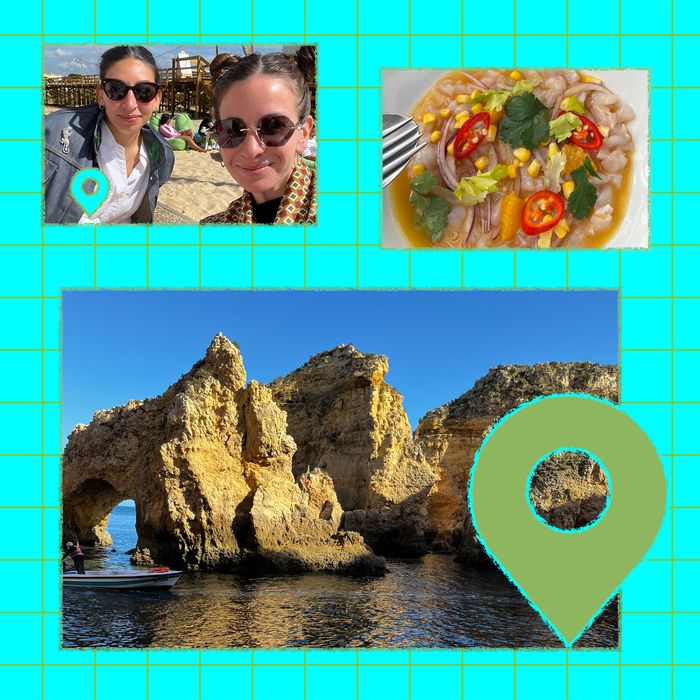
Everyone knows that person who spends weeks sniffing around travel blogs, going deep into Tripadvisor rabbit holes, collecting Google docs from friends of friends, and creating A Beautiful Mind– style spreadsheets to come up with the best vacations and itineraries possible. In this recurring series, we find those people who’ve done all the work for you and have them walk us through a particularly wonderful, especially well-thought-out vacation they took that you can actually steal.
Ariel Arce , owner of Tokyo Record Bar and Niche Niche, prefers to visit southern Europe during the off-season. She and her best friend (and partner in the founding of CaviAIR), Michelle Double, like to take easygoing road trips through seaside towns when they’re not mobbed by tourists. This past March, the pair headed to Portugal, during which they slowly meandered from Lisbon to the southern reaches of the country. Arce admits that her vacations “end up being these crazy drudges” of nonstop activities — filled with cave exploring, cliffside rock scrambling, and scootering around — which is why she highly recommends renting a boat for a day in the Algarve.
11 a.m.: Scoot around Lisbon
We flew on a red-eye from New York and upon landing in Lisbon headed straight to the Hertz counter to pick up our car rental for the week: a gunmetal Mercedes convertible. Michelle and I love driving. Give us a fast luxury car, throw us the keys, and see ya! But because it was still quite early in the day, we decided to explore Lisbon for a few hours before our drive south. We hit up the legendary seafood restaurant Ramiro ( Av. Alm. Reis 1 H, 1150-007 ) and ordered a massive plate of prawns, some crusty bread to dip into the garlicky sauce they’re cooked in, and a couple of beers.

We wanted to work off the beer so we rented scooters from the Uber app and giggled our way around Lisbon. We toured along the water promenade all the way out to the western district of Alcantara to check out LxFactory ( R. Rodrigues de Faria 103, 1300-501 ), a modern outdoor food and shopping complex under one of the city’s many bridges. And then for absolutely conflicting vibes, we zoomed our way back into downtown Lisbon and up the steep cobblestone streets of Alfama, where we grabbed a caffeine pick-me-up at Copenhagen Coffee Lab ( Escolas Gerais 34, 1100-213 ).
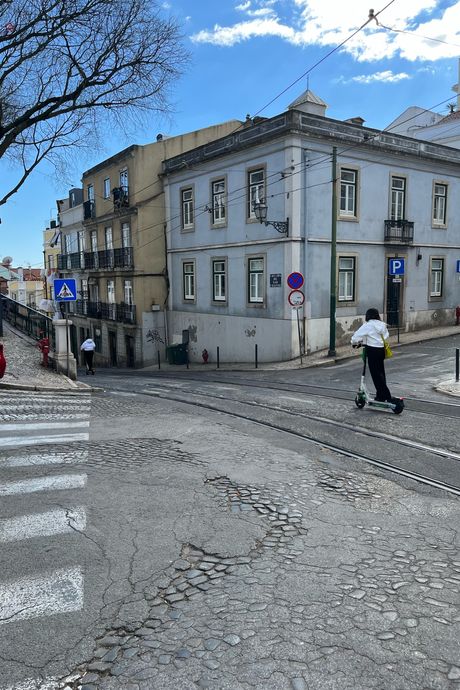
5 p.m.: Settle into your eco villa and order pizza
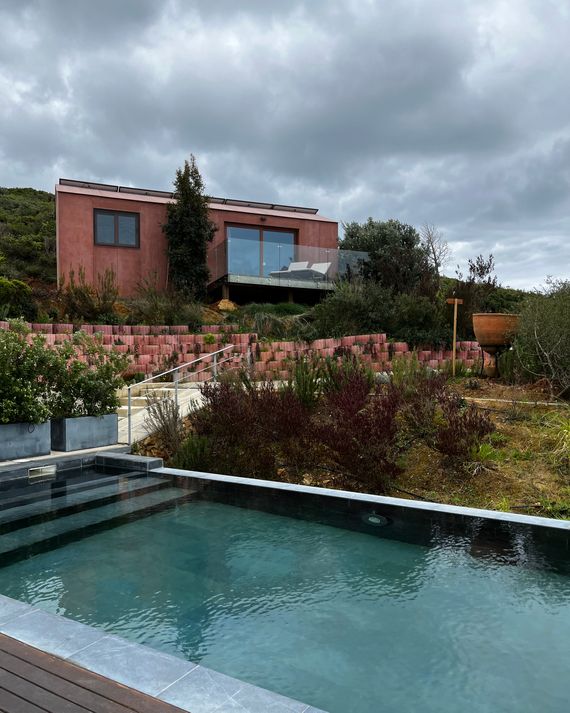
By the time we reached our hotel for the night, it had been a long day so we decided to take it easy, and Villa Epicurea ( R. do Casalinho 5A, 2970-052 ) — a 45-minute drive south of Lisbon — was the ideal place to do that. The property is tucked away into a forest that overlooks the water, and we stayed in one of their minimally decorated one-bedroom houses. We aren’t really “shared space” gals, but it was nice to see like-minded travelers at the pool or in the main house where you can cook a meal together. If you don’t want to make your own food (we didn’t), what’s cool about the Villa Epicurea is they have a board filled with places you can get delivery from. We ordered two pies from a local pizza place: Both had a super crispy thin crust, but one was a margherita and the other was a white pie with arugula and pistachio, which was pretty incredible.
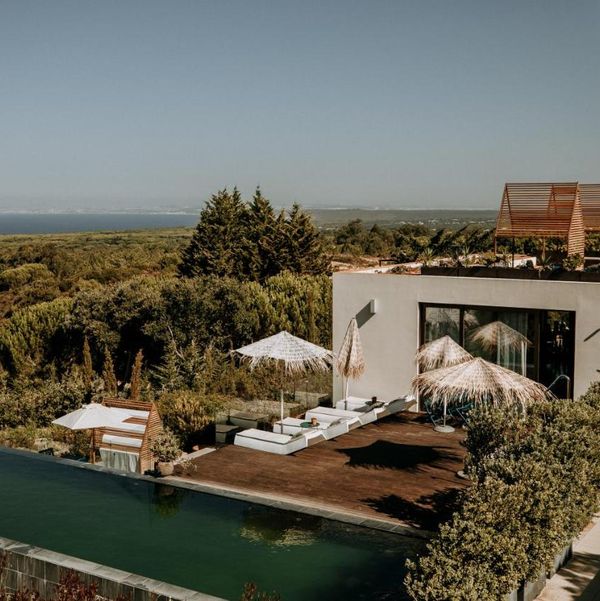
12 p.m.: Eat ceviche at a beach club in Comporta
Before we set off for the Algarve, we stopped by Comporta, a chic little beach town with waterfront restaurants and hotels, and an adorable downtown. It’s got a rustic vibe, too, because of the rice fields that surround all the development.
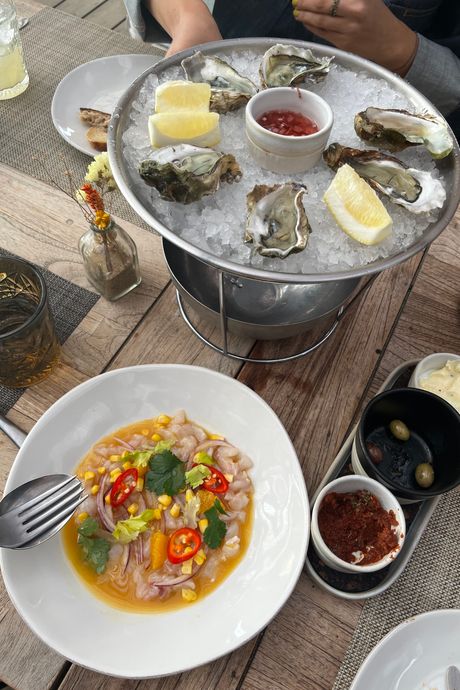
We had lunch at Sublime Comporta Beach Club ( Praia do Carvalhal, 7570-782 ). The seafood on the menu was just exquisite. We gorged ourselves on ruby red tiger shrimp, oysters, and whatever ceviche they were serving at the time (with fish sourced from the Azores). In between dishes, we would walk around the sand and dip our toes in the water. (It was cold Atlantic water, but a few moments doesn’t hurt.) Everyone here is an angel. As soon as our waiter found out that I love spicy things, I had three different hot sauces in front of me, including the chef’s personal stash from Nepal.
3 p.m.: Take coastal routes to the Algarve
The drive down to our resort in the Algarve should have taken about two hours if we stuck to the most straightforward route per Google Maps, but we tried to take as many coastal roads as possible, avoiding highways whenever we could so it took closer to three hours. But we also found ourselves driving through these stunning, dense forest roads that feel the way islands do when they’re by the water; there’s lots of sand, very tropical-esque foliage, and a quickly changing terrain. Everything looked wild and beautiful. It was definitely more of a casual drive. We were in no rush.
6 p.m.: Check into a massive resort
Vila Vita Parc Resort & Spa ( R. Anneliese Pohl, 8400-450 ) is a sprawling compound centered around a private beach, pools, a few restaurants, sports complexes, and a wellness center. For girls from a big city, a resort vacation wasn’t what we came for, but frankly, we didn’t want to leave. It was pretty stunning. We booked an apartment-style condo, which is a bit farther away from the main hub of the resort. This was the first time on our trip — after flying, driving, exploring — when we really started to relax.
To close out the day, we didn’t want to have a crazy dinner, but we did go to the main bar of the resort to indulge in a few too many gin-and-tonics by the fireplace.

12 p.m.: Explore the seaside towns of the Algarve
We had a late start to the day, but that’s just the vibe down here in the Algarve, which isn’t very big so you can accomplish a lot of sightseeing in a short amount of time. Our first stop was Sagres, which is stuffed into the southwest corner of Portugal. It’s a very windy area and known for some of the best surfing in the world. We drove to Fortaleza de Sagres , which really feels like the end of the earth. All you see is water. We walked the coastline watching a bunch of people hit the waves.
There is a killer restaurant on the ocean called Boia Bar ( R. dos Pescadores 101, 8650-199 ), in the tiny town of Budens, which is just 15 minutes east of Sagres. We ordered a massive bowl of razor clams and their famed Portuguese shrimp, cooked in chili, garlic, and olive oil galore (kind of like a piri-piri sauce).
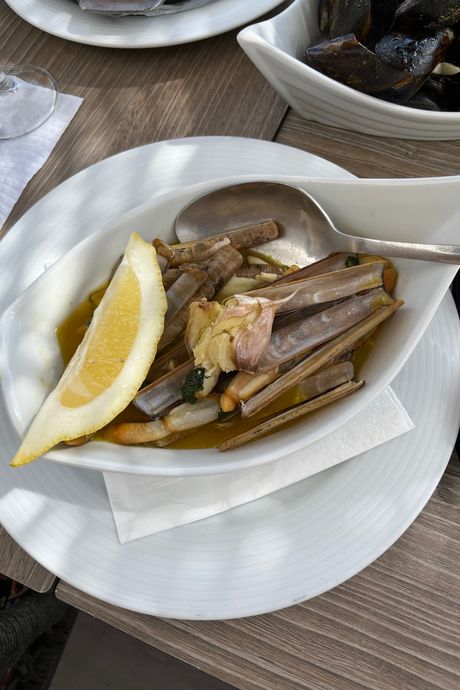
3 p.m.: Pick up ceramics and straw bags in Lagos
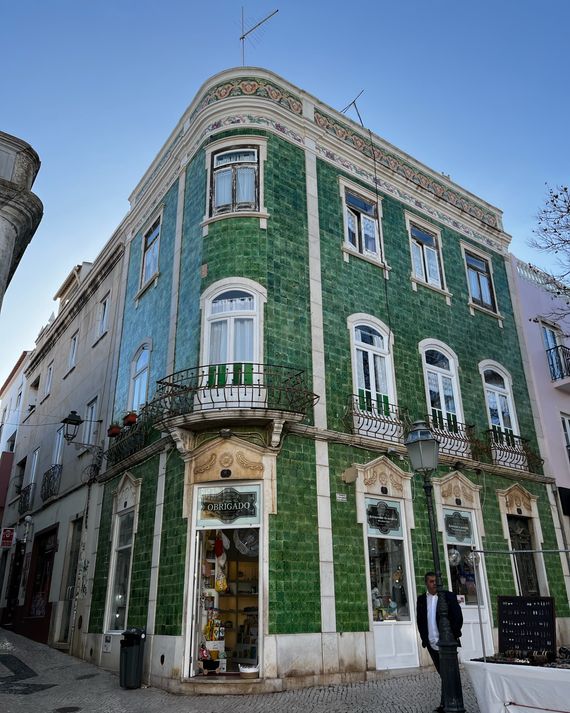
Lagos is one of the larger small towns and is far less sleepy than most of the other spots we hit on this adventure. It was great to walk around and get a taste for the colorful tile buildings that you won’t ever tire of when you’re in Portugal.
There’s some shopping to be had, too, and I ended up getting seduced into buying what looked like Ugg knockoffs at this cute store called Tamar ( R. António Barbosa Viana 14 16, 8600-677 ), which stocks a ton of locally made merch like straw bags and ceramic housewares. Then, our next stop was just outside town: Ponta de Piedade, these golden rock formations jutting out of the water. We did attempt to scamper around some of them. It got a bit wild so I would suggest wearing sturdy, comfortable shoes.
If you don’t want to stay at a big resort like we did, I would recommend the stylish Casa Māe ( R. do Jogo da Bola 41, 8600-712 ) here in Lagos.
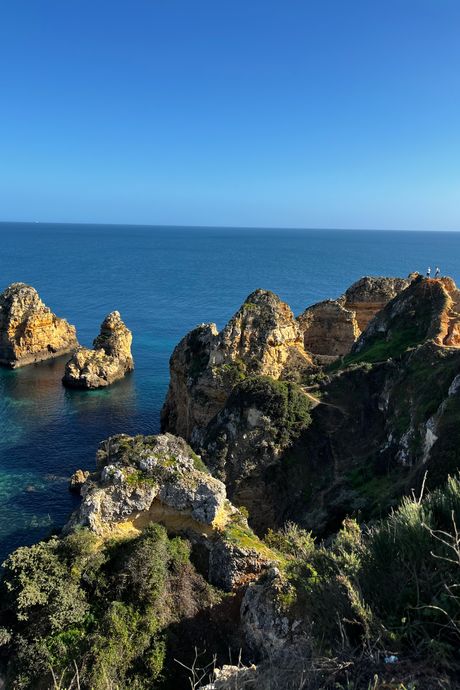
8 p.m.: Order a local fish platter
Vila Vita’s Japanese restaurant had a platter of different types of local fish, most of it was white fish, but they also had salmon and tuna that were sourced from the Azores. The chef even showed us the tags of the fish. We tossed these back with vodka martinis.
10 a.m.: Sail around the Algarve
When we were figuring out what we wanted to do on this trip, we knew we really wanted to rent a boat, and that’s one of the main reasons we booked Vila Vita; they have a yacht . The rate is around $1,000 for a full day, and you can have up to 8 people on the boat.
Our captains were spectacular. They’ve been doing this for 30 years. But in addition to all that experience, they had such a great sense of humor. They were telling us all these crazy stories about the people they’ve taken on tours — including some pretty famous names. We had a couple of bottles of white wine, some grilled veggies, and, of course, pasteis de nata , the iconic egg custards. And then for several hours, we sailed around the coast visiting some of the Algarve’s most jaw-dropping spots.

We stopped at a bunch of different places: Praia de Carvoeiro, Marinha Beach, Arco Natural. But the best part was touring the 50-odd caves that are just outside the fishing village of Benagil . Our captains threw us into this dingy, and from there we just went exploring. It was kind of intense to see them maneuver this little thing in and out of tiny spaces as the tide was coming up and down, and you really think you’re going to run into these caves. And some of the caves would be totally pitch black while others would be bright and blue and there was one with a giant hole that looked up to the sky.
You can drive to all these different sights, of course, but the perspective you get from the water is just unbelievable. It was one of the highlights of our trip. I’ll never forget it.


5 p.m.: Arrive at a fancy farm hotel
After a full day out at sea, we couldn’t wait to retreat to our next hotel, Vila Monte Farm House ( Calicos Site, 8700-069 ), which is located in the eastern half of the Algarve. Very close to the border with Spain, this part of the country is entirely less manicured than the western side, which is where a lot of the big luxury resorts are. But Vila Monte is just fabulous. The property, which is surrounded by fragrant olive groves, citrus trees, and the shocking pink of bougainvillea, is mostly white with these stunning pops of blues and greens. It’s very serene and rustic-chic. The pools were beautiful, too. It really looked like it was plucked out of Ojai.
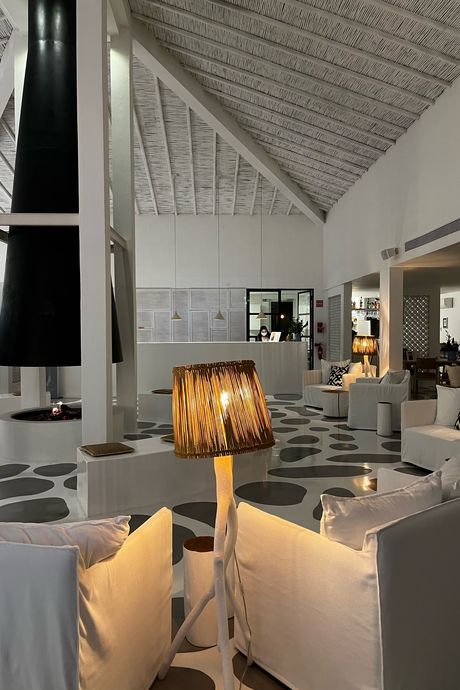
For dinner, we decided to stay at the hotel. We ordered some beautifully grilled fish, and they also had fantastic pizza. Plus, you can drink your cocktails out on the lawn — paradise for two New Yorkers.

9 a.m.: Stretch before breakfast
The hotel offers a lot of daily activities. So we woke up early to take Pilates and then enjoyed a lovely breakfast of local Portuguese fruits, charcuterie, some fantastic bread, and every nut milk you can imagine.
1 p.m.: People-watch in the plaza
It takes less than two hours to drive the entire width of Portugal’s southern coast, but there are so many adorable places to visit. We started as far east as possible in Vila Real de Santo António , which is right on the border of Spain. It’s designed like a mini Lisbon and has this beautiful plaza that’s perfect for people-watching. We strolled around, marveling at the collection of buildings covered in gorgeous tiles of blues and greens. We popped into A Loja da Maria ( Rua Jornal do Algarve 63 ), a home decor shop where we found ceramics that looked almost spotted in a cool tie-dye way. Then we drove to Altura, which reminded us a bit of a sleepy Jersey Shore town: It’s a very chill place, great for walking along the beach picking up seashells along the way.
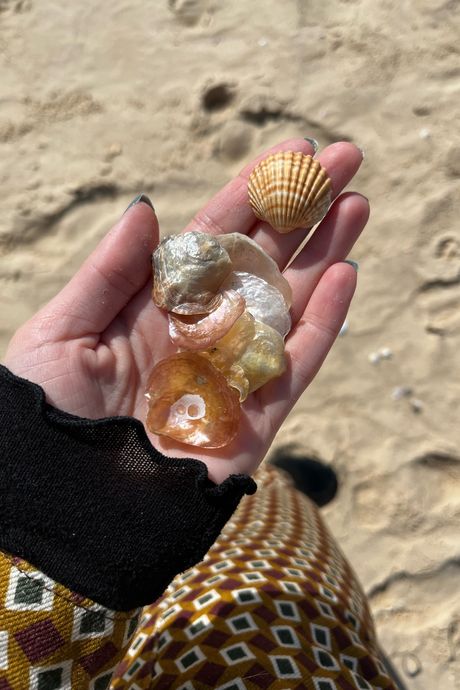
4 p.m.: Snack on French cheese and Portuguese wine
Our last stop was Tavira , which is one of the more popular towns in eastern Algarve. The waterside promenade and beautifully manicured gardens make Tavira stand out from neighboring towns; they make it feel bigger, grander than a beach town, like you’re in a small-but-historic European city.
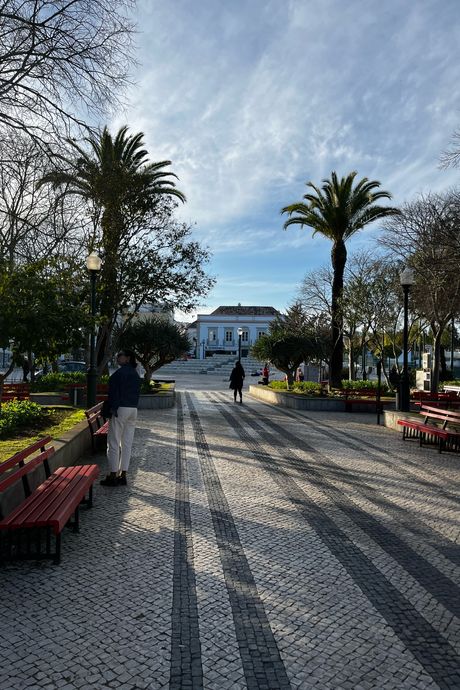
We were just scoping out the scene on foot, and Tchin-Cheese ( R. da Liberdade 24, 8800-329 ) caught our eye. It’s a cute little wine-and-cheese shop (maybe four tables) from a French expat. It felt so different from any other restaurant that we had eaten at in Portugal up to that point. We got to chatting with the owner, who picked out a cheese platter and some natural local wines for us to try. Yes, a cheese-and-wine pairing is so trite, but it’s my favorite thing in the world, and we really vibed with the owner, whose taste is out of this world. We sat with him outside for longer than we expected. But when he recommended O Tonel ( R. Dr. Augusto da Silva Carvalho 6, 8800-650 ) for a dinner of simply prepared octopus and more Portuguese white wine, we happily obliged.
Ariel’s Portugal packing list

Even though the day we went out on the boat was overcast and a cool 60 degrees, we could still have gotten sunburned. It’s better to be safe than sorry. Supergoop’s Unseen Sunscreen is so weightless that you don’t even know you’re wearing it.

In this modern day, you can wear a pair of white Air Force 1s to dinner or when you’re out scaling rock formations in southern Portugal. And if you get them dirty, just wash them when you get home. I never travel without a pair.

A lightly scented deodorant does wonders when out exploring all day. Or when you don’t feel like taking a shower after taking a Pilates class.

You never know what the weather will be like during the off-season. My lightweight puffer jacket from Bacon came in handy the night we were in Tavira. It was a gorgeous day but as the sun set, and it got chilly, I just pulled it out of my bag. It rolls up without wrinkling.
Some rolling luggage we've written about

The Strategist is designed to surface the most useful, expert recommendations for things to buy across the vast e-commerce landscape. Some of our latest conquests include the best acne treatments , rolling luggage , pillows for side sleepers , natural anxiety remedies , and bath towels . We update links when possible, but note that deals can expire and all prices are subject to change.
- the strategist
- steal my vacation
Every product is independently selected by (obsessive) editors. Things you buy through our links may earn us a commission.
Deal of the Day
Micro sales, greatest hits, most viewed stories.
- On My Mind: Loose-Fit Tees and Not-Too-Loose Pants
- A Very Good Gap Sale: Linen, Denim Skirts, and Tank Tops Galore
- This Perfectly Proportioned Linen Button-Down Is 35 Percent Off
- The 18 Very Best Sunscreens for Your Face
- The 10 Best Carry-on Backpacks
- My Big 40th-Birthday Trip to Greece
Shop with Google

Lisbon Travel Guide

Courtesy of Westend61 | Getty Images

Why Go To Lisbon
Often overlooked for its popular European cousins, Lisbon specializes in lulling tourists into its laid-back charm. Perched atop seven hills, its alleyways wind between colorful, centuries-old buildings. Fanciful St. George's Castle peeks out to the skyline, lending an Old World-mystery to the burgeoning cosmopolitan city. And despite the modern sleek buildings that are slowly rising throughout the city, village life holds strong.
But there's more to Lisbon than lazing about in coffee shops nibbling pastéis de nata (custard tarts) all day: From exploring the Fado clubs in Bairro Alto to taking in the view at the top of the Santa Justa Elevator ; from laying out at the Cascais beaches to treasure hunting at the historic Feira da Ladra flea market; from gazing at the gargantuan displays at the Oceanarium to gorging on bacalhau (salted cod); Portugal's coastal capital is rich with opportunity.
Find Flight and Hotel Deals
Navigate forward to interact with the calendar and select a date. Press the question mark key to get the keyboard shortcuts for changing dates.
Navigate backward to interact with the calendar and select a date. Press the question mark key to get the keyboard shortcuts for changing dates.
- # 1 in Best Places to Visit in November 2024
- # 8 in Best Cheap European Vacations for 2023-2024
- # 20 in Best Places to Visit in Europe for 2023-2024
See All 4 Rankings
Best of Lisbon
Best hotels in lisbon.
- # 2 in Four Seasons Hotel Ritz Lisbon
- # 3 in Bairro Alto Hotel
- # 4 in Olissippo Lapa Palace
Best Things to Do in Lisbon
- # 1 in Tram 28
- # 2 in Belém
- # 3 in Cabo da Roca

Popular Tours

Sintra and Cascais Small-Group Day Trip from Lisbon
(4640 reviews)
from $ 106.58

True 4Hour / Half Day Tuk Tuk Tour of Lisbon - Local Overview
(3281 reviews)
from $ 145.84

Lisbon: Half Day Sightseeing Tour on a Private Electric Tuk Tuk
(2717 reviews)
from $ 94.80
Lisbon Travel Tips
Best months to visit.
The best time to visit Lisbon is either from March to May or September to October, because the weather is still warm, hotel rates are cheaper and there are fewer crowds than in summer. In those seasons, you might also be able to squeeze in a few beach days. The summer sees hot temperatures and crowded shores. Winters in Lisbon are warm for Europe, with the lows dipping into the mid-40s.
Weather in Lisbon
Data sourced from the National Climatic Data Center
What You Need to Know
Prepare your greeting Lisboetas are known to be quite open, and they often greet people with a kiss on each cheek. But if you're feeling shy, offer your hand for a shake and they'll understand.
Procrastinate on supper Meals are served later here than in northern Europe. Lunch typically starts after 1 p.m. and dinner after 8 p.m. Eating dinner at 7 p.m. is a sure way to meet only tourists.
Lisbon is a workout The city is very hilly, making it not as easily walkable as its flatter, European counterparts like London or Paris . Even if you like walking, have a transportation backup plan just in case you tire out.
How to Save Money in Lisbon
Get a Lisboa Card These cards offer free use of all the city's public transport and free or reduced ticket prices to many of the major attractions . They can be purchased at tourist information outlets or on the Lisboa Card website for 24-, 48- and 72-hour increments.
Stay in a pension A pensão (pension) is like a guest house, with separate rooms and sometimes an adjoining bathroom to share with your neighbors. Rates are more than reasonable, especially since guest houses are usually located close to the attractions without the pricey hotel rates.
Sightsee on Sundays Museums and many other attractions , including the Belem Tower and Monastery of St. Jerome , are free the first Sunday of each month. Additionally, many museums are closed on Mondays, so keep that in mind when planning your itinerary.
Culture & Customs
Lisbon is a popular travel destination, but it's far less overrun than European tourist meccas in Italy, France and neighboring Spain. This makes it easier to find yourself among residents – even in popular tourist neighborhoods. Your neighbor in the cafe is more likely to be reading a Diario de Noticias (a popular local newspaper) than a Lonely Planet guide. If you're comfortable speaking Portuguese or have at least packed a phrasebook, feel free to strike up a conversation or two. Those who do will quickly see the overall hospitality instilled within the Portuguese people, and find their kindness just as unique as any neighborhood or monument in the city.
Lisboetas follow the Mediterranean clock: Meals are later than in northern Europe, but not necessarily as late as in Spain. Lunch typically starts after 1 p.m. and dinner after 8 p.m. Landing a 7 p.m. dinner reservation is a sure way to meet only tourists. The official currency is the euro (EUR). Since the euro to U.S. dollar exchange rate fluctuates, be sure to check what the current exchange rate is before you go. Major credit cards are accepted at most restaurants and shops. Like the rest of Europe, tipping isn't standard and depending on where you go, may yield strange looks.
What to Eat
Lisbon is among the easiest cities in Europe to find a good, affordable meal. This is true for breakfast, lunch, dinner and any meal in between – even in many tourist districts. If you're on a budget, it's possible to experience the best of traditional Portuguese food for less than 30 euros per day, per person. For a veritable smorgasbord of all the city's cuisines, head to Time Out Market . Located in the Mercado da Ribeira at Cais do Sodre, the food hall is filled to the brim with a variety of vendors selling everything from sushi to wine to Iberico ham. You'll encounter crowds anytime you go, but past visitors said it's worth it.
Lisbon also has a cosmopolitan restaurant scene, and you can find just about any type of cuisine around town. For Portuguese haute cuisine accompanied by two Michelin stars, try Belcanto ; for a family-run seafood joint, try Cervejaria Ramiro . The Portuguese have cultivated a rich seafood diet, and you can find fish and shellfish on most lunch and dinner menus. Bacalhau (salted cod) is an especially popular traditional Portuguese dish. But it's an acquired taste, so you might want to consider a backup option if you're not feeling adventurous.
Another Lisbon specialty to try? Pasteis de nata . These tasty custard-filled pastries are everywhere in Lisbon. Eaten for breakfast, an afternoon snack, or both, pasteis de nata are full of sugar and satisfaction. The most famous ones can be found at the Pasteis de Belém (in the district of the same name ), which began selling them 200 years ago. Lisbon also has its own alcoholic drink – ginjinha – a fortified wine made with cherries and sugar. For short, you can call it "ginja," and you should try it at the hole-in-the-wall A Ginjinha near the Rossio metro station.
Discerning foodies in the know also rave about the city's Chinese food. Called Chinês clandestinos , these restaurants are mostly family-run outposts that are set up in the homes of local Chinese residents. You'll find them stowed within apartments in Mouraria, the city's immigrant enclave. Most don't have names and are only identifiable by their addresses. Keep your eyes peeled if you're in the area of Rua do Benformoso, Rua da Guia or and Rua do Capelão.
When it comes to coffee, the Portuguese know how to enjoy it more than just about anyone else. Whether in the morning or afternoon, you can find Lisboetas packed into cafes. Don't assume cafes or "coffee shops" are necessarily limited to coffee, however: Affordable wine, beer, pastries and even full meals are available. It's pretty easy to find a beer for less than 1 euro, for example, even in some touristy cafes.
Crime against tourists has gone beyond pickpocketing to violent muggings. Some also report the existence of violent gangs and lackadaisical police. Be on your guard when traveling at night, especially around some of the top attractions and in Lisbon's outskirts. You should also be wary of pulling money out of ATMs; if you can avoid it, refrain from visiting ATMs at night.
Be wary of northern Lisbon at night, especially around Intendente and Martin Moniz. These areas are well-known for hosting a rougher crowd along with some brothels.
Getting Around Lisbon
The best way to get around Lisbon is on foot and by public transport. Your own two feet are a great way to see the sights – just keep in mind that climbing this city's hilly streets on foot can be quite the workout. For a change of pace (and to catch your breath), consider using buses, trams, the metro and elevators. One word of caution: Lisbon's Tram 28 and the Santa Justa Elevator double as attractions, so expect crowds. For a quicker journey, consider a taxi. Just know that during rush hour, you'll be sitting in your cab for a while thanks to all the traffic. Taxis are especially abundant at the Lisbon Portela Airport (LIS), located about 3 miles north of the downtown tourist districts. Rides between the airport and the city center generally cost 10 to 15 euros (about $12 to $19). There is also a subway station at the airport with a direct line to the city center. The Aeroporto – Saldanha line will transport you to downtown Lisbon in about 20 minutes.
Entry & Exit Requirements
A passport with at least three months remaining validity is required for entry into Portugal. Tourists from the United States can stay for up to 90 days without a tourist visa. For more information on entry and exit requirements, visit the U.S. Department of State's website .
Recent travelers said that although Tram 28 is a must-do while in Lisbon, visitors should be prepared for thick crowds.
Explore More of Lisbon

Things To Do
Best hotels.

You might also like

# 2 in Best Places to Visit in Spain

# 3 in Best Places to Visit in Spain

# 1 in Best Cheap European Vacations for 2023-2024
If you make a purchase from our site, we may earn a commission. This does not affect the quality or independence of our editorial content.
Recommended
The 28 Best Water Parks in the U.S. for 2024
Holly Johnson|Timothy J. Forster May 8, 2024

The 18 Best Napa Valley Wineries to Visit in 2024
Lyn Mettler|Sharael Kolberg April 23, 2024

The 25 Best Beaches on the East Coast for 2024
Timothy J. Forster|Sharael Kolberg April 19, 2024

The 50 Best Hotels in the USA 2024
Christina Maggitas February 6, 2024

The 32 Most Famous Landmarks in the World
Gwen Pratesi|Timothy J. Forster February 1, 2024

9 Top All-Inclusive Resorts in Florida for 2024
Gwen Pratesi|Amanda Norcross January 5, 2024

24 Top All-Inclusive Resorts in the U.S. for 2024
Erin Evans January 4, 2024

26 Top Adults-Only All-Inclusive Resorts for 2024
Zach Watson December 28, 2023

Solo Vacations: The 36 Best Places to Travel Alone in 2024
Lyn Mettler|Erin Vasta December 22, 2023

26 Cheap Beach Vacations for Travelers on a Budget
Kyle McCarthy|Sharael Kolberg December 4, 2023

Home > What to See and Do > Top 10 Must-See Attractions
Top 10 Attractions and 50 Things to Do in Lisbon
The most extraordinary sights and the most memorable experiences.
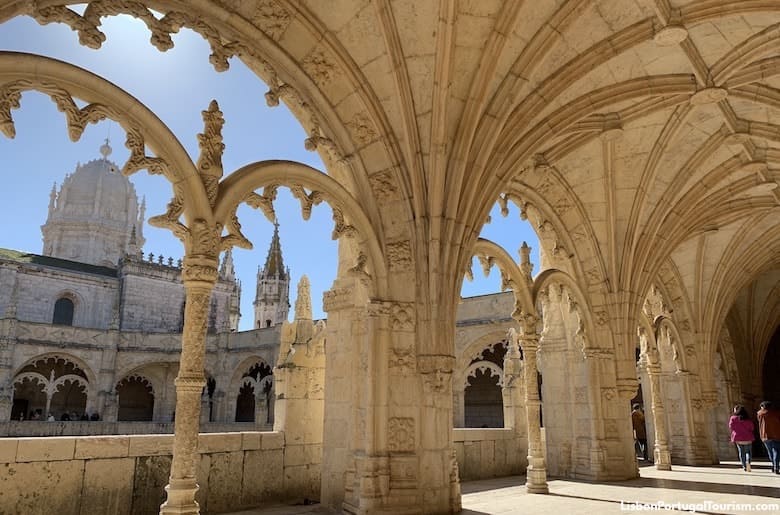
1. Jerónimos Monastery
This World Heritage monument is a marvel of Manueline (Portuguese Gothic) architecture. It was built in 1502, and features magnificent stonework inspired by the sea and the East, particularly in the cloisters. Paid for with the profits from the spice trade, it’s the resting place of explorer Vasco da Gama, whose tomb is found at the entrance of the church.
See the Jerónimos Monastery Visitor's Guide .
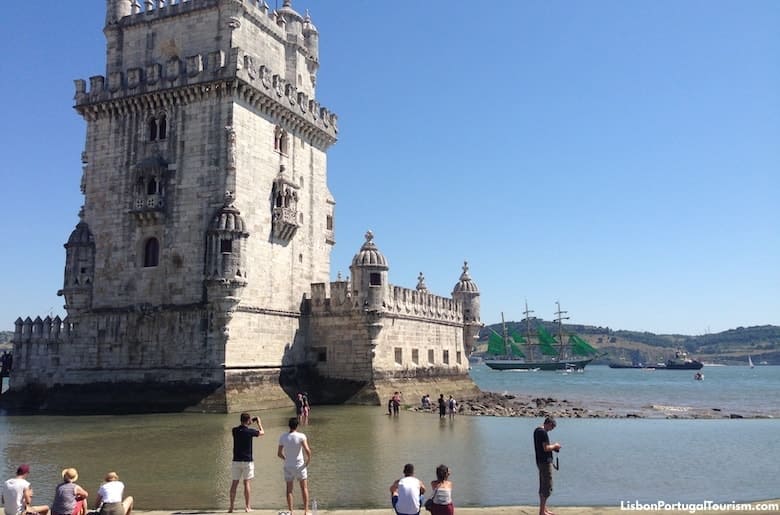
2. Belém Tower
Lisbon’s most iconic monument rises from the river, where it served as a beacon to the many explorers who departed from this site in the 15th and 16th centuries. Also protected as World Heritage , it looks like a small castle out of a fairy tale, and is a symbol of the Age of Discovery .
See the Belém Tower Visitor's Guide .
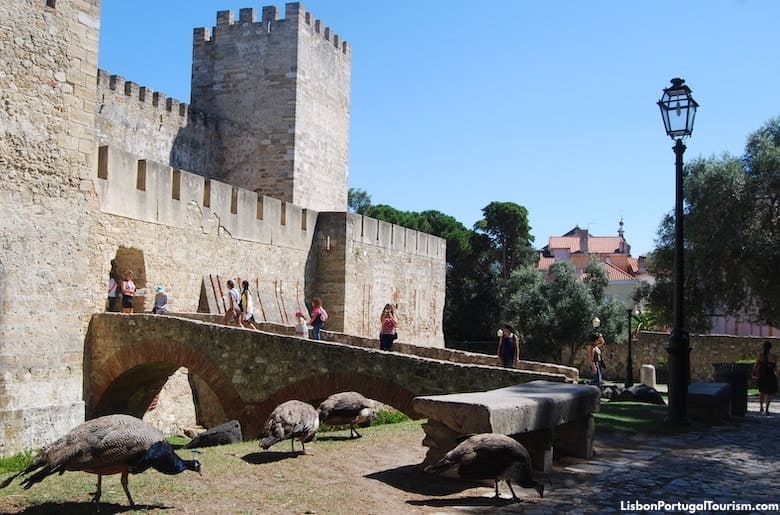
3. St. George's Castle
Lisbon’s highest hill has been crowned by fortifications for literally thousands of years. The first ones were built by the Visigoths in the 5th century, then the Moors expanded them in the 9th century, and Portugal’s first king remodelled them in the 12th century. The medieval castle became a royal residence until the 1500s, and what stands today is the restored version of the Moorish and medieval construction. It houses a small archaeological museum, but is mostly visited for the breathtaking panoramic view of the city.
See the St. George's Castle Visitor's Guide .
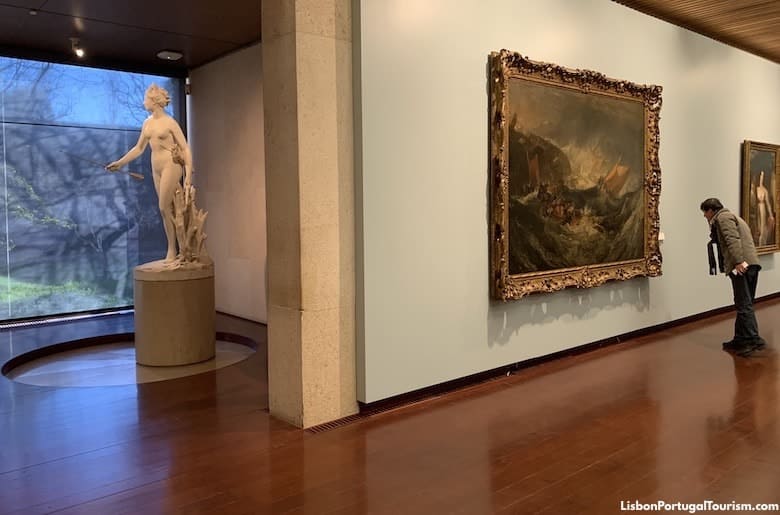
4. Calouste Gulbenkian Museum
Businessman and philanthropist Calouste Gulbenkian was one of the world’s wealthiest men in the mid-20th century, and created a foundation in Lisbon to promote the arts and education around the globe. He put together one of the world’s greatest private art collections , and a museum was built next to the foundation’s headquarters. He only acquired masterpieces, so everything on display is outstanding, from paintings by old masters such as Rembrandt and Rubens, to Egyptian antiquities and unique pieces of Lalique jewelry.
See the Calouste Gulbenkian Museum Visitor's Guide .
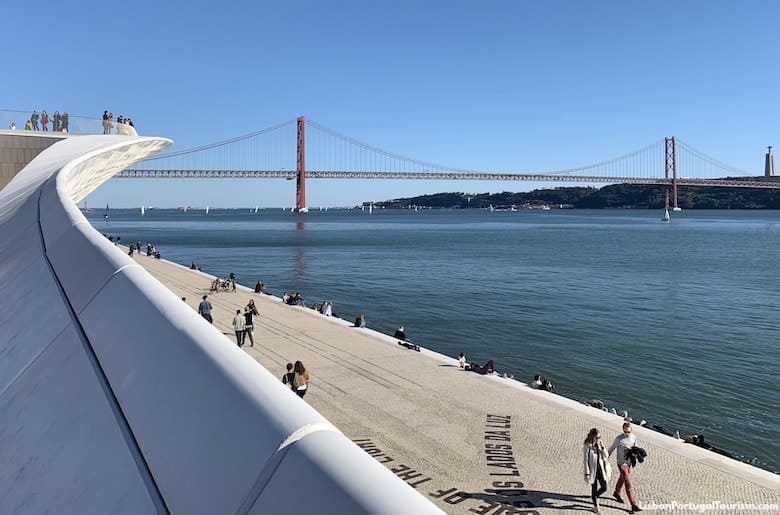
Exhibitions related to modern art, architecture and technology are presented in an iconic building of curved lines that descends into the river. Even if you don’t visit the art inside, you may walk around, and even on top of, this waterfront landmark, as it serves as a viewpoint, looking out to 25 de Abril Bridge.
See the MAAT Visitor's Guide .

6. Coaches Museum
Lisbon’s most popular museum became even more so when it moved to a bigger building across the street from its original home. Its collection of magnificent carriages (unique in the world) is now displayed in a modern building designed by Pritzker Prize architect Paulo Mendes da Rocha, and includes vehicles dating back to the 16th century, ridden by Portuguese and other European royals.
See the Coaches Museum Visitor's Guide .
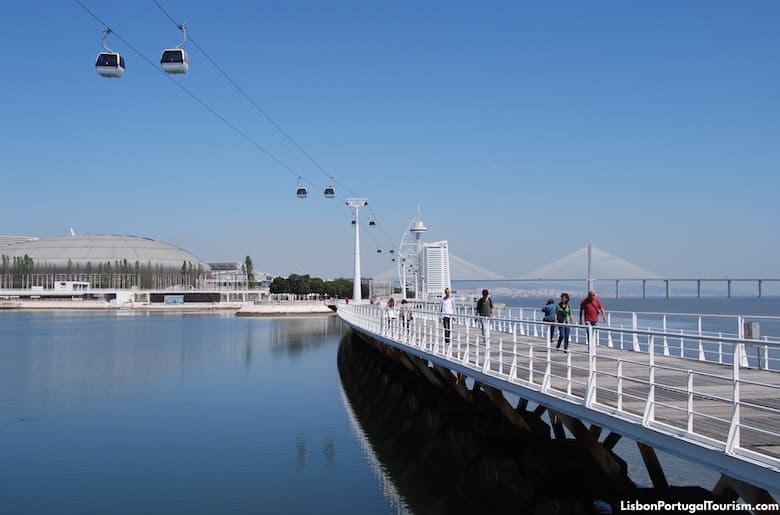
7. Parque das Nações
Eastern Lisbon was transformed into a futuristic ocean-themed neighborhood when it was chosen as the site of 1998’s World Fair. It’s now home to office and apartment buildings, but also to one of the city’s greatest attractions, the Oceanarium, which puts all of the world’s ocean habitats under one roof. From there, visitors walk along the pleasant waterfront promenade towards Vasco da Gama Bridge (Europe’s longest) and the Vasco da Gama Tower (the city’s tallest building).
See the Parque das Nações Visitor's Guide .

8. Tile Museum
Ceramic tile art dates back to ancient Egypt and is found all over the Mediterranean, but nowhere else in the world did it evolve as much or as imaginatively as in Portugal. Here, tiles became more than just geometric figures decorating walls, they also depicted historical and cultural scenes to cover palaces, street signs and shops. There is only one place on the planet where you can follow the history and evolution of this art form, and that’s Lisbon’s Tile Museum. Set in a magnificent 16th-century convent , this is the city’s most beautiful museum . It’s a unique gallery with a collection of tilework that ranges from Moorish-influenced pieces from Seville to modern examples by contemporary artists. In the splendid church dripping with gold is also a series of Dutch panels, from a time when Europe started imitating Chinese ceramics.
See the Tile Museum Visitor's Guide .
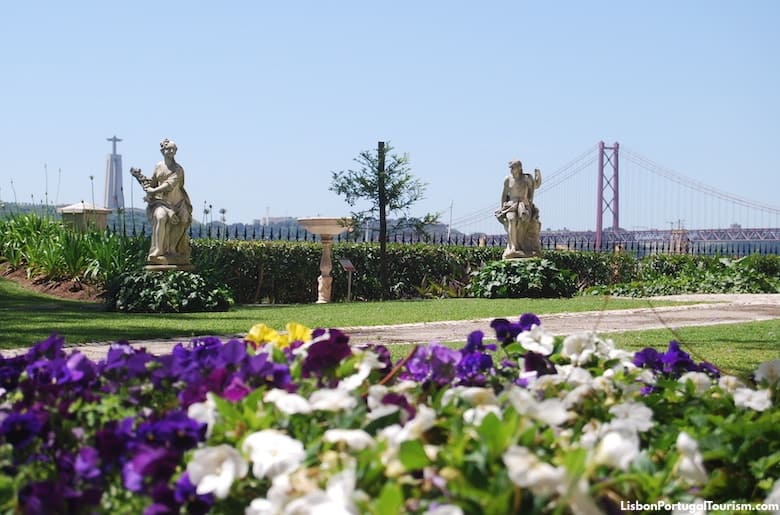
9. Ancient Art Museum
It has paintings by masters like Bosch and Dürer, but the main reason to head to this museum is for a lesson in how the East and the West influenced each other , thanks to the Portuguese “Age of Discovery.” Highlights include Japanese screens illustrating Japan’s first encounter with Europeans as the Portuguese arrived on their ships, a monstrance made with gems brought back by Vasco da Gama, and the 15th-century masterpiece “Panels of St. Vincent” depicting Prince Henry the Navigator and other personalities of the time.
See the Ancient Art Museum Visitor's Guide .

10. MAC/CCB
Located next to Jerónimos Monastery, this museum (formerly named Berardo Collection Museum) presents a world-class collection of modern and contemporary art . Most of it belongs to Portuguese businessman Joe Berardo, who collected works by major European and American artists like Picasso, Magritte, Paula Rego, Andy Warhol and Roy Lichtenstein.
See the MAC/CCB Visitor's Guide .
40 OTHER MAJOR ATTRACTIONS
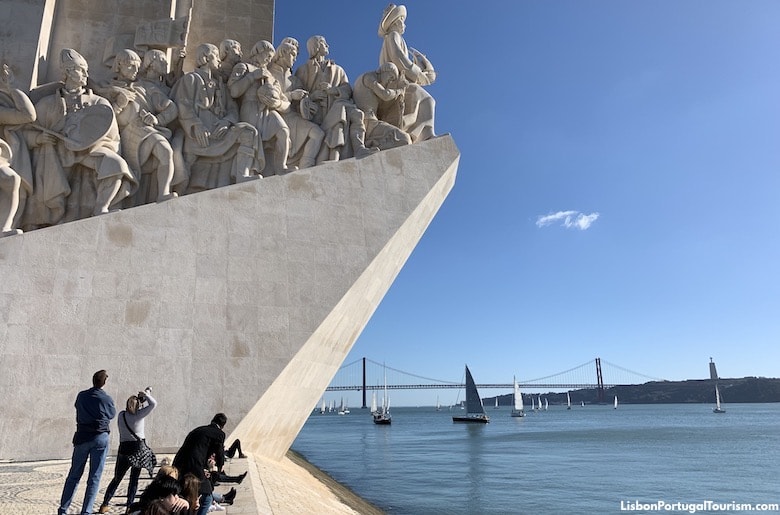
Discoveries Monument
This massive monument is shaped like a ship with 33 people aboard, led by Prince Henry the Navigator. The other colossal sculptures are of other personalities related to the Portuguese Age of Discovery , such as explorers, poet Luís de Camões, and painter Nuno Gonçalves. Inside are temporary exhibitions and an elevator that takes visitors to the terrace at the top, which offers a breathtaking view of the neighboring monuments. Outside, on the ground, is a vast compass with a map of the world tracing the routes of Portugal's heroes of the sea.
See the Discoveries Monument Visitor's Guide .
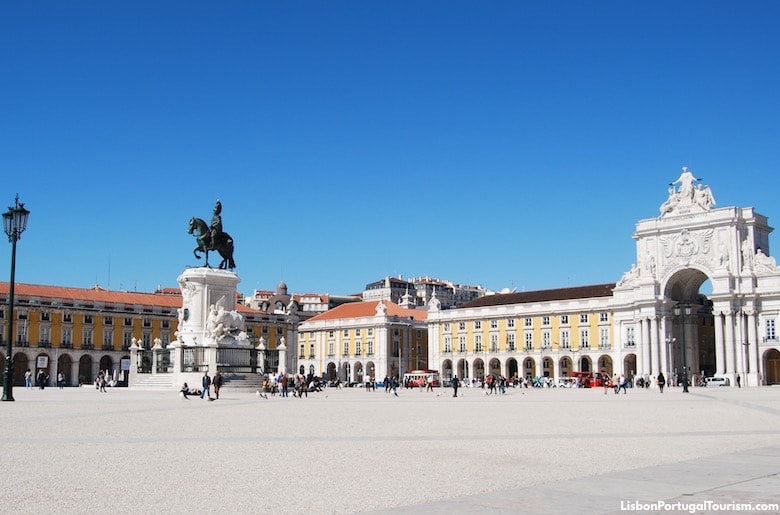
Rua Augusta Arch
The triumphal arch that once welcomed those arriving in Lisbon by boat, now offers visitors one of the best views of the city from the top . From the feet of its gigantic sculptures is a bird’s-eye perspective of Lisbon’s grandest square opening to the river, the cathedral, and downtown’s cobbled streets.
See the Rua Augusta Arch Visitor's Guide .
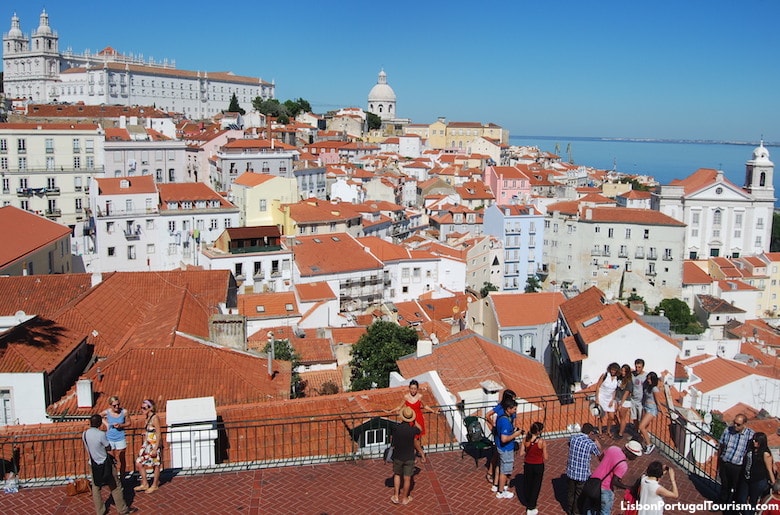
Portas do Sol Viewpoint
The most stunning view of old Lisbon can be admired and photographed from this terrace by the castle. This medieval part of the city looks more like a Mediterranean village or a Greek island than a capital city, with white church towers, domes and colorful houses tumbling down the hill towards the waterfront. In the surroundings are several cafés and restaurants with outdoor seating.
See the Portas do Sol Viewpoint Visitor's Guide .
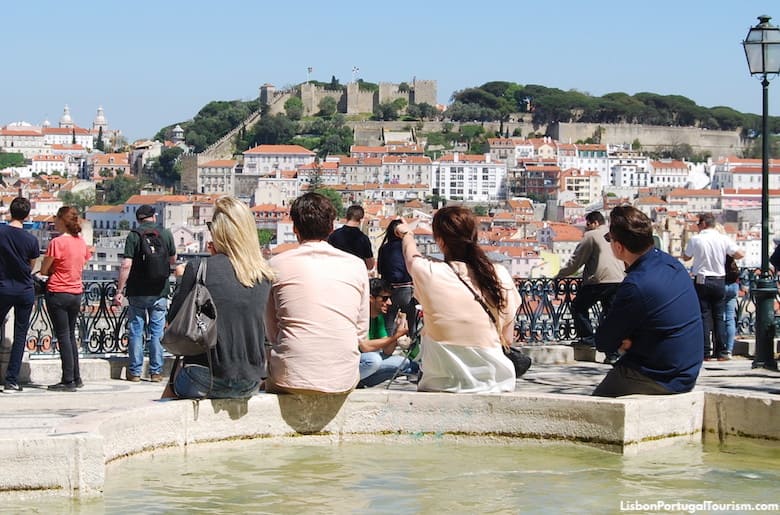
São Pedro de Alcântara Viewpoint
This terrace at the top of a hill was landscaped in the 1800s and is one of Lisbon’s most romantic spots . Locals and tourists take photos of the postcard view , and gaze across to the castle as they enjoy drinks from a kiosk café. It’s found next to the terminal of one of the city’s iconic funiculars , the Elevador da Glória.
See the São Pedro de Alcântara Viewpoint Visitor's Guide .
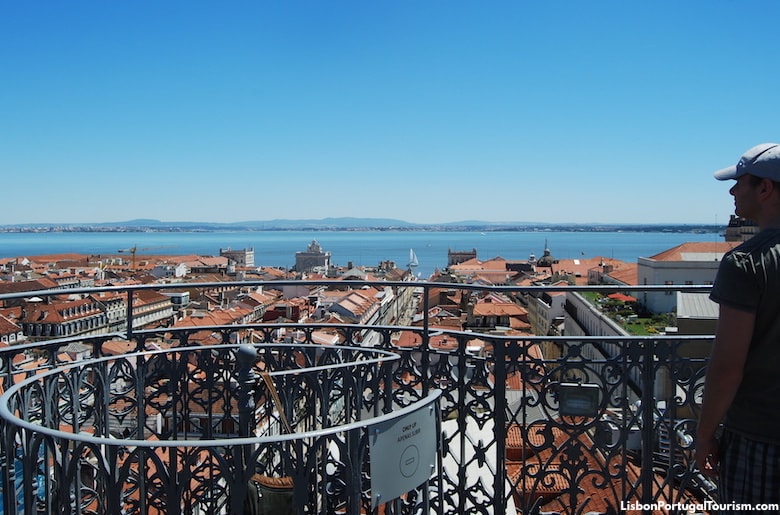
Santa Justa Elevator
A monumental wrought-iron elevator , designed in Gothic Revival style by one of Gustave Eiffel’s disciples, was inaugurated in 1902 to facilitate the climb of one of Lisbon’s hills. It connects Baixa (downtown) to Chiado and Bairro Alto at the top of the hill, but is now mostly a tourist attraction, as it also offers a panoramic view .
See the Santa Justa Elevator Visitor's Guide .
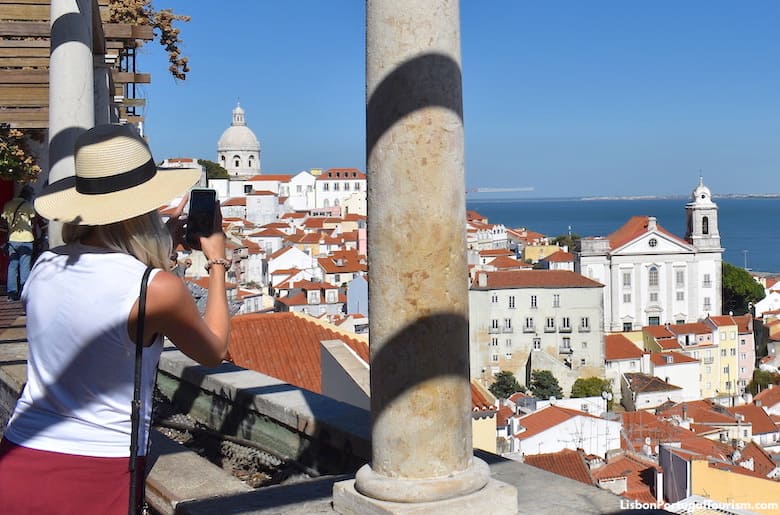
Santa Luzia Viewpoint
A pergola frames a perfect view of Alfama’s domes and rooftops descending the hill towards the river at this romantic terrace next to a small church. It’s incredibly picturesque from its two levels -- the landscaped upper level with lush bougainvillea is adorned with tile panels, while the lower level has a reflecting pool.
See the Santa Luzia Viewpoint Visitor's Guide .
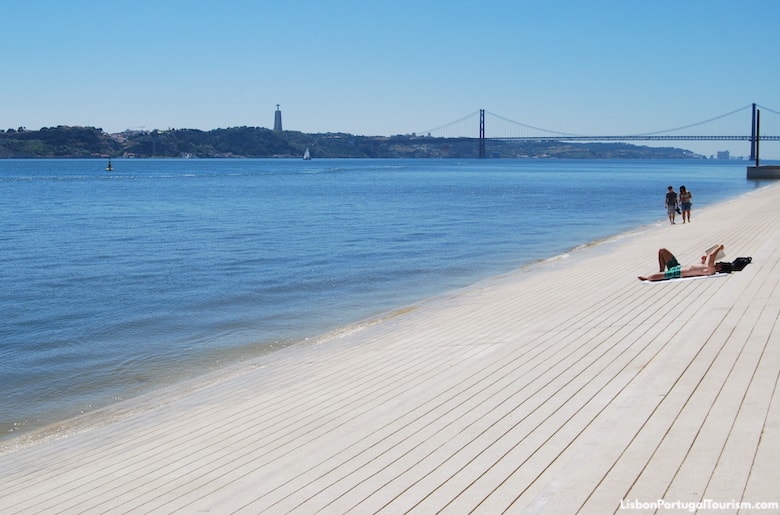
Ribeira das Naus
This promenade connects the Baixa and Cais do Sodré districts, and turns into something of an “urban beach” in the summer. It’s the favorite sunbathing spot in the city center for locals and tourists (who lie on the steps that descend to the water or on the lawn behind them), and the terrace of its kiosk-café is one of the most popular spots for drinks on the waterfront. It’s also one of the best places to catch the sunset in the autumn and winter months, when the sun disappears on the horizon on this more southern location of the city.
See the Ribeira das Naus Visitor's Guide .
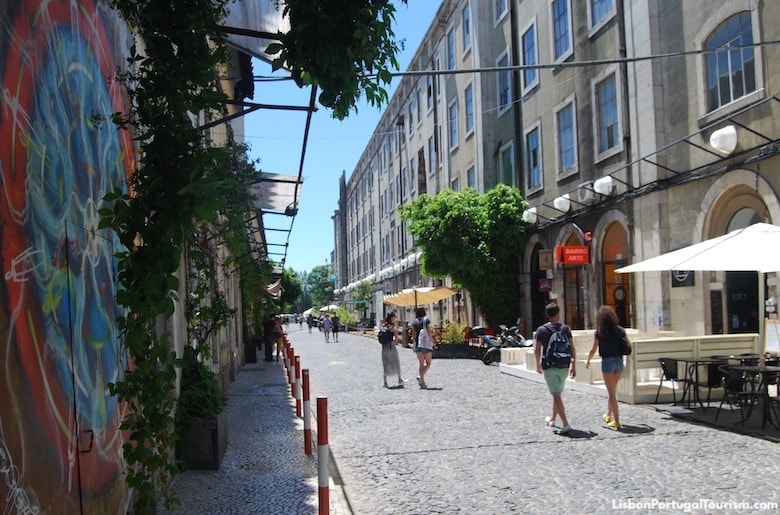
An abandoned factory complex dating back to 1846 became one of Lisbon’s trendiest places to be , when it started housing offices, shops, cafés and restaurants in 2008. It’s one of the top destinations for dinner throughout the week and for brunch on weekends, when it also hosts outdoor markets selling everything from locally-grown vegetables to crafts, fashion, and accessories. All of the interiors have kept their industrial architecture and vintage pieces in their décors, and the exterior is a true street art gallery .
See the Lx Factory Visitor's Guide .

MuDe - Design & Fashion Museum
Lisbon has one of Europe’s best design and fashion collections , and it’s displayed in the former headquarters of a bank, in the city’s main pedestrian street. There are creations by many of the world’s leading designers from the mid-1800s to the present, like Charles & Ray Eames, Le Corbusier, Philippe Starck, Chanel, Christian Dior, Versace, and Yves Saint Laurent. Most of the pieces were amassed by a local businessman, but there have also been donations, including an outfit by Tommy Hilfiger himself.
See the MuDe Visitor's Guide .

Royal Palace of Ajuda
Portugal’s last royal palace was built at the top of a hill in 1795. It was to be one of Europe’s largest palaces, but was abandoned and the project left unfinished during the French invasion of Portugal and later when the country became a republic. However, the neoclassical building is grand enough, and the royal family left behind the crown jewels and a collection of decorative arts from the 18th and 19th centuries, which are displayed in the magnificent rooms . Across the street is the royal botanical garden , laid out in 1768. Split into two levels, it has exotic trees and plants, 18th-century sculptures and fountains, and a beautiful view of 25 de Abril Bridge.
See the Ajuda Palace Visitor's Guide .
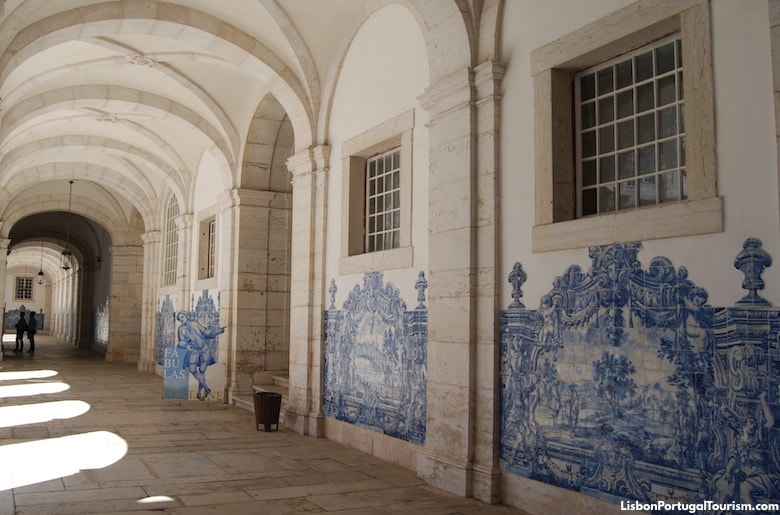
São Vicente de Fora Monastery
The world's largest collection of baroque tile panels , including several illustrating La Fontaine's fables, can be seen inside this monastery from 1582. Those panels were added in the 1700s, and line the cloisters and much of the interior. It’s possible to climb up to the roof, for a view over Alfama.
See the São Vicente de Fora Monastery Visitor's Guide .

Lisbon Cathedral
Lisbon’s fortified cathedral is the city’s second-oldest monument, after the castle. It’s a robust building from 1147, and most of it survived the 1755 earthquake. Its cloisters reveal archaeological remains of the city’s past 3000 years , while the treasury presents a collection of priceless sacred art .
See the Lisbon Cathedral Visitor's Guide .

Igreja de São Roque
Built in the 1500s, this was one of the world’s first Jesuit churches , with a very plain façade but with a number of extraordinarily gilded chapels inside. One of them is a unique masterpiece of European art , and said to be “ the world’s most expensive chapel .” Built in Rome in 1742, using only the most precious gems (ivory, lapis lazuli, gold, silver, marble, gilt bronze, agate, porphyry...), the chapel was shipped to Lisbon to be assembled in this church, where it can now be seen together with other side-chapels equally rich in ornamentation.
See the Igreja de São Roque Visitor's Guide .

Igreja de Santa Catarina
The magnificent baroque and rococo interior of this church is one of Lisbon’s most beautiful sights , but it remains a little-known treasure. It dates from 1727, and most of it actually survived the 1755 earthquake, unlike the majority of churches and everything else in the city. It’s therefore a rare example of Lisbon’s wealth up to the 18th century, with a monumental organ that’s a masterpiece of gilded woodwork and a stucco ceiling that’s considered one of the most outstanding of its kind in Europe.
See the Igreja de Santa Catarina Visitor's Guide .
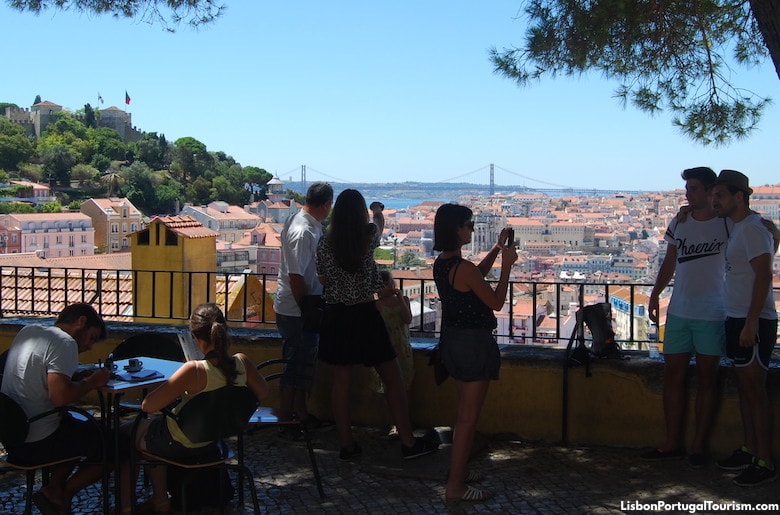
Graça Viewpoint
A pine-shaded terrace at the top of one of Lisbon’s tallest hills is a meeting place for locals, who love to admire their city as much as tourists do. No one can resist taking a photo of the view of the castle and the rooftops below it , and stopping for a drink served from a kiosk standing in the shadow of a baroque church.
See the Graça viewpoint Visitor's Guide .
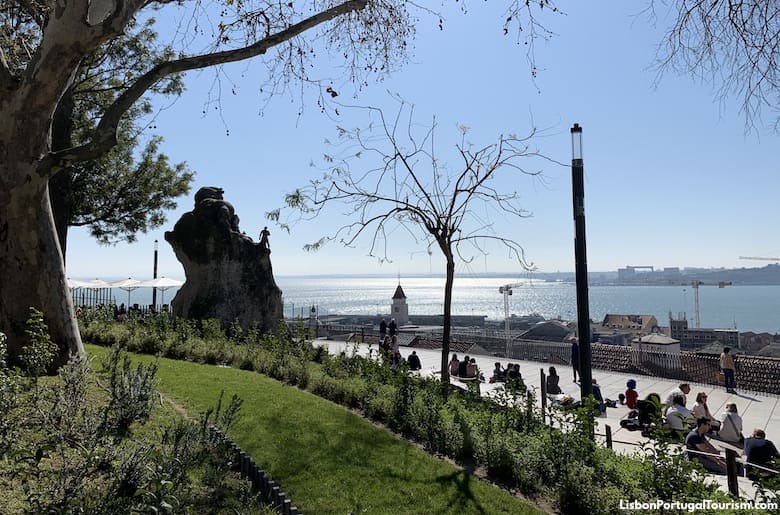
Santa Catarina Viewpoint
Lisbon’s favorite sunset spot is one of its most central viewpoints. It’s a terrace located close to many of the city’s most popular bars and restaurants, so it’s where many start their night out. There’s a kiosk serving drinks to be enjoyed on the amphitheater-like steps, where bohemian locals and tourists get together in a chill-out atmosphere. They’re overlooked by a sculpture of Adamastor, a mythical sea monster imagined by Portugal’s great 16th-century poet Luís de Camões.
See the Santa Catarina Viewpoint Visitor's Guide .
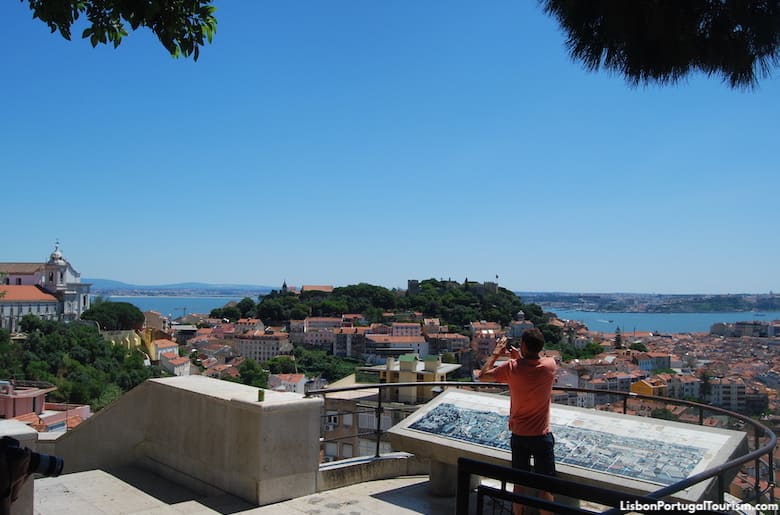
Senhora do Monte Viewpoint
It rivals the Santa Catarina viewpoint as the favorite sunset spot , but here there are no cafés and the view is more breathtaking. It’s a quieter viewpoint, but has become quite popular, as it offers a panorama of almost the entire city . It’s faced by a small 18th-century chapel and an image of the Virgin which gave it its name (“Lady of the Mount”).
See the Senhora do Monte Viewpoint Visitor's Guide .
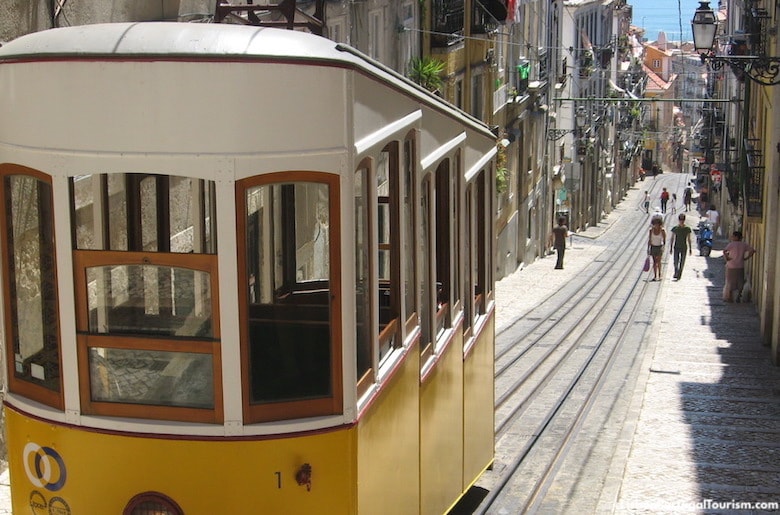
Bica Funicular
It perfectly frames a view of the river, so Rua da Bica de Duarte Belo would always be one of Lisbon’s most photographed streets , but what makes it such a picturesque and irresistible place (and arguably the city’s most beautiful street) is the presence of a charming funicular . It has been going up and down the hilly street since 1892, connecting the Bairro Alto district to the waterfront. Its journey takes just 5 minutes, and it carries up to 23 passengers, but it’s now mostly used as a backdrop for selfies.
See the Bica Funicular Guide .
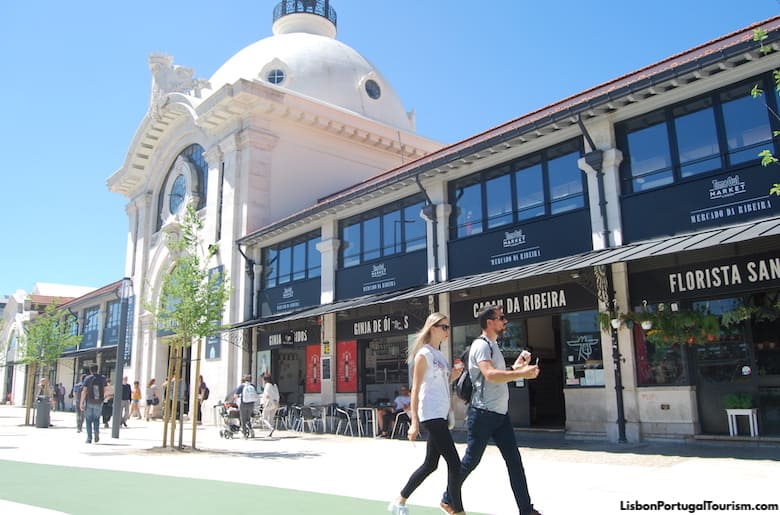
Ribeira Market
Lisbon’s main market since 1892 became the city’s top food destination in 2014, when it added a food hall managed by Time Out Lisboa magazine. It’s a lively place from morning to night, with stalls offering some of the most creative dishes by some of the city’s top chefs. They’re enjoyed at canteen-style communal tables inside, or outside, facing Dom Luis I Square.
See the Ribeira Market Visitor's Guide .
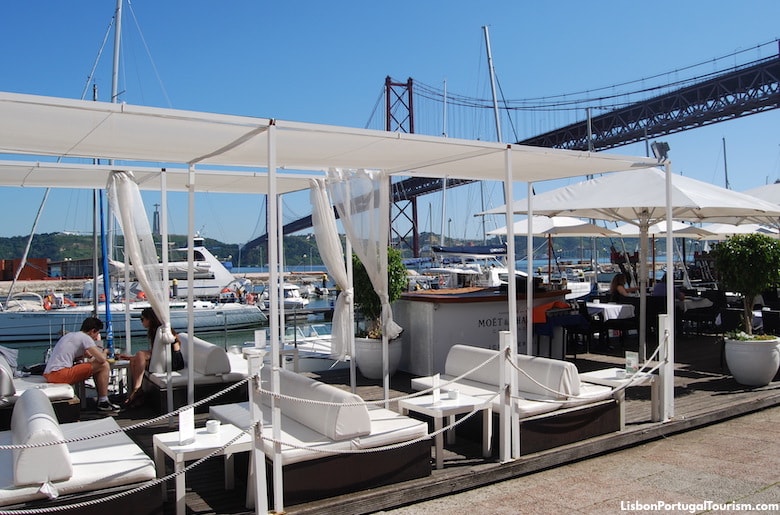
Docas de Santo Amaro
The best close-up views of the landmark 25 de Abril Bridge are from the warehouses-turned-restaurants below it. They face a marina, and are the starting point of a promenade that leads to the Discoveries Monument and the many other attractions of Belém. This is a popular destination at lunch and dinner time, as well as for afternoon drinks. It’s also the departure point of sightseeing cruises. The bridge is often compared to the Golden Gate in San Francisco, but it was actually modelled after the Bay Bridge in the same city. One of the pillars (across the road from here) has a glassed observation deck at the top, and houses an exhibition explaining the mechanisms that make a suspension bridge work.
See the Docas de Santo Amaro Visitor's Guide .

A gigantic image of Christ standing on a tall pedestal was inaugurated across the river in 1959, as a way for the episcopate to thank God for having spared Lisbon from World War II. An elevator takes visitors up to the terrace by the feet of the statue, from where there's a panoramic view of practically the entire city . From the landscaped surroundings there’s a close-up view of 25 de Abril Bridge , which stands right below.
See the Cristo Rei Visitor's Guide .
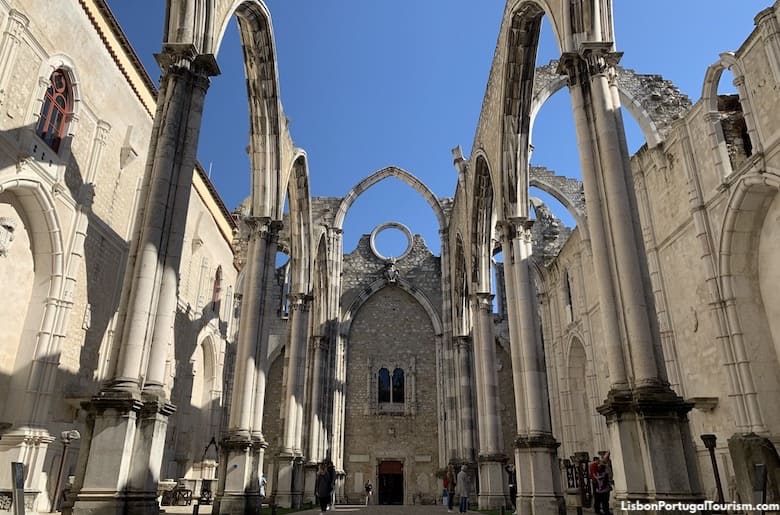
Carmo Convent
The roof of this 14th-century church, which was Lisbon’s greatest medieval building, collapsed in the earthquake of 1755, but its Gothic arches still stand. It was never restored, to serve as a reminder of the disaster, but it remains one of the city’s most impressive monuments . The former sacristy is a small archaeological museum with an eclectic collection of treasures, from Portugal and elsewhere, including a Visigothic pillar, a Roman tomb, and eerie South American mummies. Behind the building are the Terraços do Carmo, terraces now occupied by an open-air café and bar, offering a view of the castle and of the Santa Justa Elevator , which can also be accessed from here.
See the Carmo Convent Visitor's Guide .
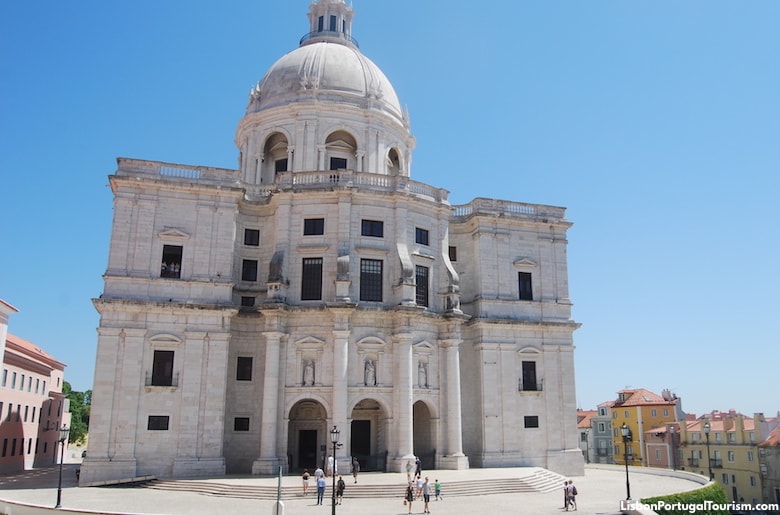
National Pantheon
A domed church that took 300 years to complete is now the pantheon holding the tombs of Portugal’s most illustrious personalities (from 15th-century explorers, to Presidents, to legendary fado singer Amália Rodrigues ). The marble interior is a fine example of baroque architecture , but it’s mostly visited for the terrace surrounding the dome , which overlooks Alfama and the river.
See the National Pantheon Visitor's Guide .

Basílica da Estrela
Inspired by St. Peter’s in Rome and Mafra Palace outside Lisbon, this royal basilica was built according to the wishes of the queen in 1790. The imposing dome stands out in the city’s skyline, and it’s possible to get a close-up view of it from the terrace , which overlooks the city. The marble interior includes a remarkable nativity scene , created by Portugal’s leading baroque sculptor. Across the street is one of Lisbon’s most delightful parks .
See the Basílica da Estrela Visitor's Guide .

Fronteira Palace
It’s way off the beaten path, outside the city center, but it’s worth making the effort to see this palace from 1670, as it’s a fine example of aristocratic architecture. It was influenced by the Renaissance, and has one of the world’s richest collections of decorative tiles , which can be admired inside or in the magnificent gardens .
See the Fronteira Palace Visitor's Guide .
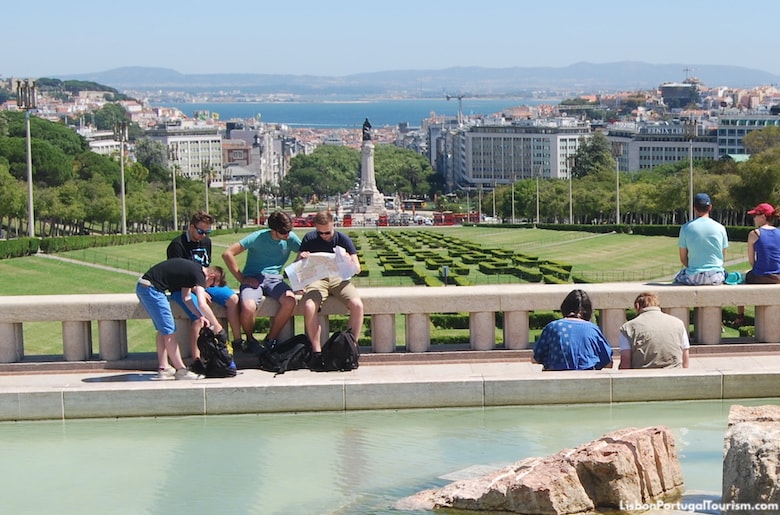
Edward VII Park
Lisbon’s sloping “central park” offers a view of downtown Lisbon, with symmetrical box hedging pointing to the river. On one side is a beautifully-tiled pavilion which hosts special events, and on the other are small lakes and a greenhouse filled with exotic species of plants from tropical climates.
See the Edward VII Park Visitor's Guide .
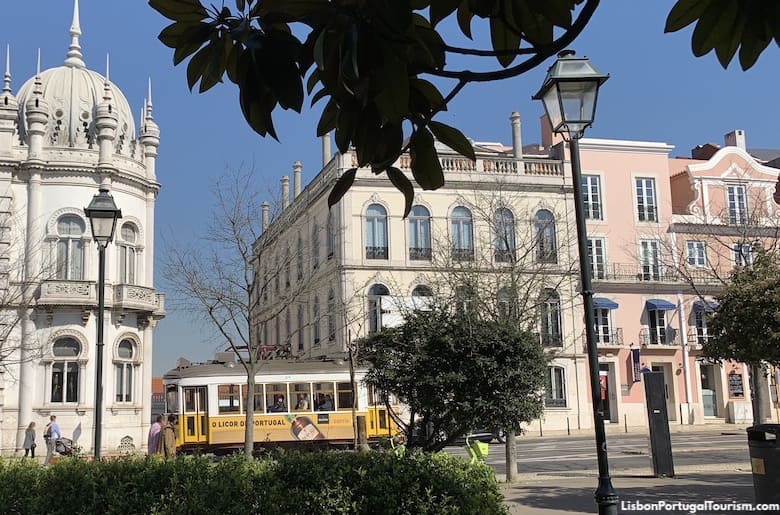
Jardim do Príncipe Real
The center of Lisbon’s trendiest district is a romantic garden laid out in 1863. It’s shaded by different species of trees, including a gigantic parasol-like cedar. It’s surrounded by mansions, including the exotic Ribeiro da Cunha Palace , which is now a monumental shopping gallery. There are statues of 19th-century poets and a memorial to the victims of homophobia, as well as kiosk cafés serving refreshments throughout the day.
See the Jardim do Príncipe Real Visitor's Guide .
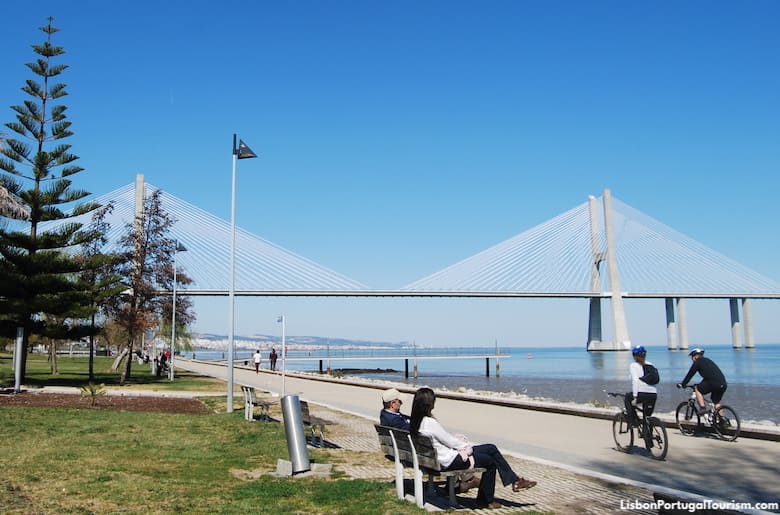
Vasco da Gama Bridge
Inaugurated in 1998 as Europe’s longest , this bridge remains one of the largest in the world. It seems to almost vanish into the distance, and it’s possible to walk under it, following the waterfront promenade of the Parque das Nações district. There’s a park below it, where locals jog, cycle, walk their dogs, and play soccer, as very few tourists pose for selfies on the boardwalk with the bridge as a backdrop. By the promenade is a statue of Catherine of Braganza , the Portuguese princess who became the queen of England when she married King Charles II, who named the borough of Queens in New York in her honor.
See the Vasco da Gama Bridge Visitor's Guide .
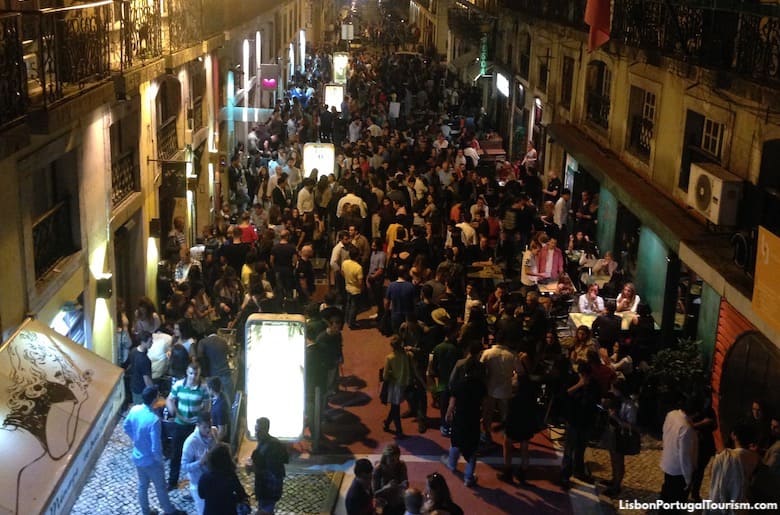
Pink Street
The color of the pavement gave it its nickname, but this pedestrian street is officially Rua Nova do Carvalho on the map. It’s quite a small street, but is the epicenter of Lisbon’s nightlife , and the New York Times even placed it on a list of “12 favorite streets in Europe.” It hosts a street party throughout the week, mixing locals and tourists, who sit or stand outside the different bars.
See the Pink Street Visitor's Guide .
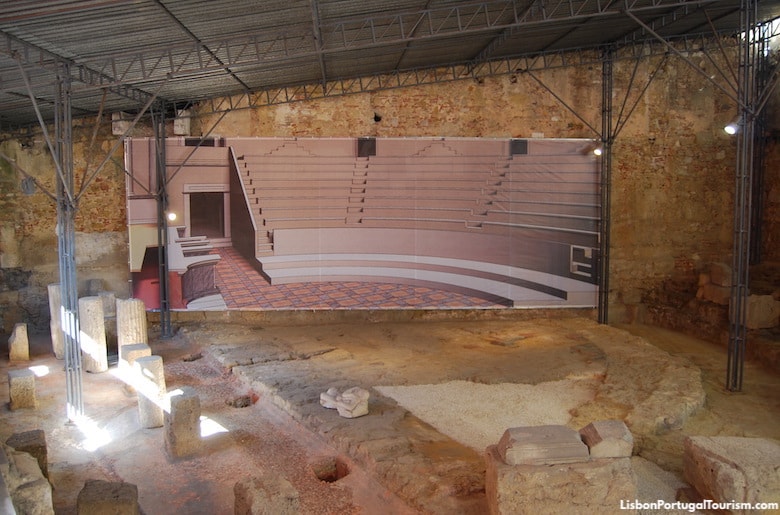
Lisbon Museum
Divided into five different branches, this museum tells the story of Lisbon and explains the different aspects of its culture. The main branch is an 18th-century palace that the king built for a nun (who happened to be his mistress), and features a formal garden with live peacocks and ceramic animals. That’s Palácio Pimenta , and inside it documents Lisbon’s history, from prehistoric times to the 20th century, through paintings, archaeological finds, and a scale model of the city before its destruction by the 1755 earthquake. Another branch is the striking Casa dos Bicos , a 16th-century building covered in over 1000 diamond-shaped stones that was one of the few survivors of the earthquake. Its ground floor is an archaeological site with traces of Lisbon life from the past two millennia, while upstairs is an exhibition devoted to the life and work of author José Saramago, featuring his Nobel Prize and multilingual editions of his books. Another famous Portuguese personality, Saint Anthony, is celebrated in another branch, next to the church with his name, built on the site where he was born (right in front of the cathedral). A fourth branch is found in the city’s grandest square -- in the western turret of Praça do Comércio, and presents temporary exhibitions. But if you visit only one branch of the museum make it the Roman Theater , which is an archaeological site showing the remains of what was once a sizable theater during Lisbon’s Roman occupation. Pieces unearthed during the excavations are shown in a building next door.
See the Lisbon Museum Visitor's Guide .
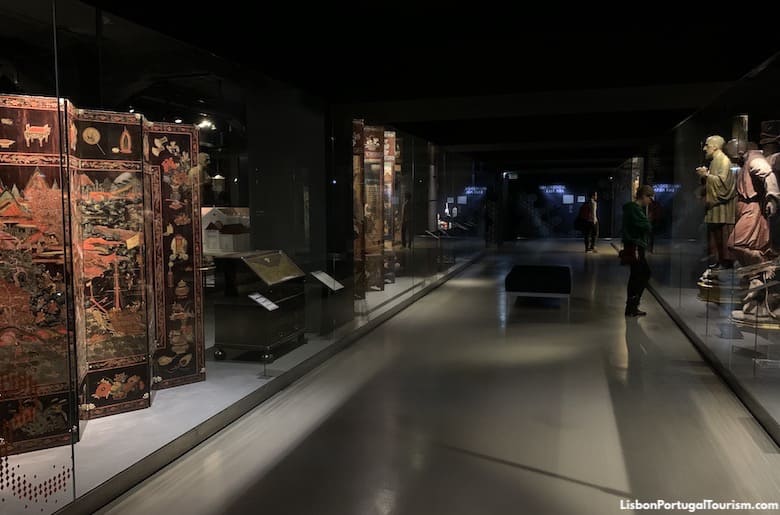
Orient Museum
As the European power with the longest presence in Asia (Macau was only handed over to China in 1999), Portugal has quite a story to tell about how its culture influenced and was influenced by the East. This museum does just that, with a permanent collection dedicated to the Portuguese presence in Asia . It includes Indo-Portuguese furniture, Japanese screens, paintings, porcelain, textiles and religious artifacts. The restored 1940s warehouse it’s housed in also presents temporary exhibitions covering a variety of themes related to the different Asian cultures.
See the Orient Museum Visitor's Guide .
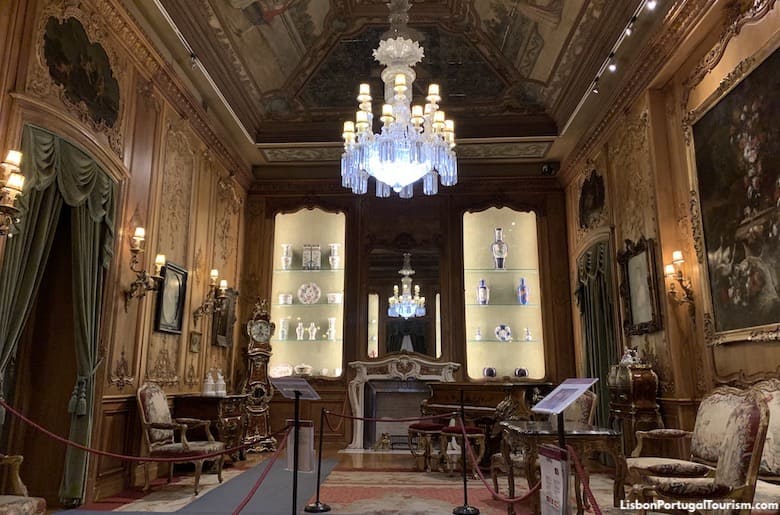
Medeiros e Almeida Museum
A 19th-century mansion houses one of Lisbon’s most outstanding art collections . Somehow, it remains one of the city’s top secrets, often overlooked by travel guides. It’s the former home of a wealthy businessman, who displayed his treasures in 25 rooms, including a Rembrandt portrait and other paintings by major artists like Rubens and Tiepolo. It also presents one of the world’s largest collections of clocks, some of the first Chinese porcelain imported by Europe, a silver tea set that once belonged to Napoleon, and a marble and bronze fountain that originally stood in the gardens of the Palace of Versailles, among hundreds of other surprising pieces.
See the Medeiros e Almeida Visitor's Guide .
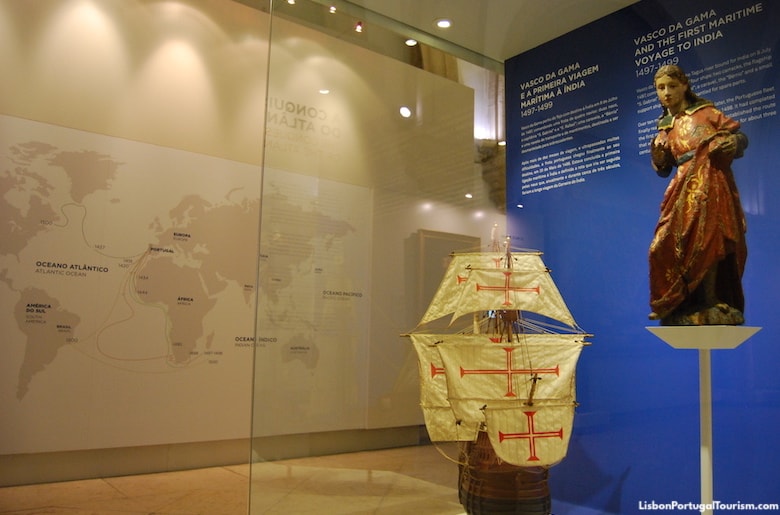
Maritime Museum
Located in the western wing of Jerónimos Monastery, this museum provides a flashback to the Age of Discovery and Portugal’s nautical history. Ancient globes, models of ships, maps and astrolabes explain the pioneering role of the Portuguese in the exploration of the oceans and in aviation , displaying the plane the made the first crossing of the South Atlantic by aviators Gago Coutinho and Sacadura Cabral in 1922. Other treasures include artifacts found in shipwrecks, the yacht and barges of the Portuguese royal family, and a wooden figure of Archangel Raphael that accompanied Vasco da Gama on his voyage to India.
See the Maritime Museum Visitor's Guide .
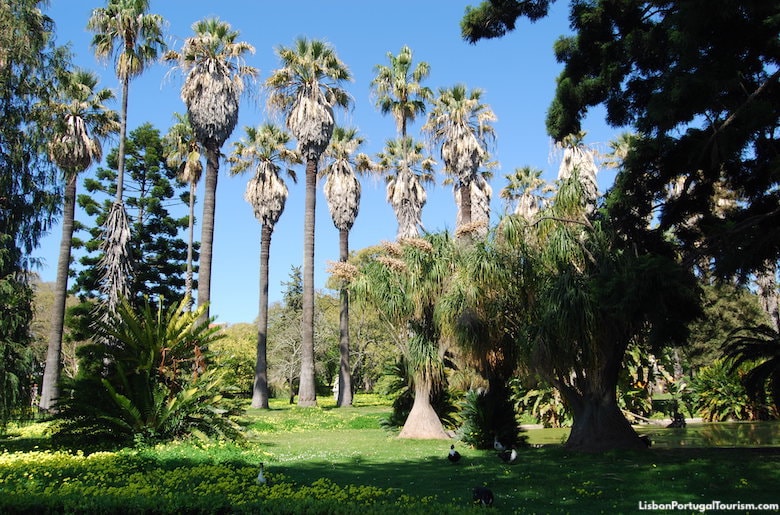
Tropical Botanical Garden
If you have time for just one garden in Lisbon, make it the Tropical Botanical Garden next to the Jerónimos Monastery. Created in 1906 to show the exotic plants and trees from the Portuguese colonies , it’s now a beautiful and peaceful place to escape the crowds of tourists in the neighborhood. Busts of Africans and Asians are dotted around, and there’s a Macanese arch leading to an Oriental Garden, but there are also plants from other lands that were not colonized by the Portuguese. Giant palm trees welcome visitors, as do the peacocks, ducks, geese, swans, chickens, and other fowl that waddle around or swim on the pond.
See the Tropical Botanical Garden Visitor's Guide .

Águas Livres Aqueduct
Lisbon created one of the world’s most impressive water systems in the early 1700s, thanks to a monumental aqueduct. It’s recognized as one of mankind’s most remarkable hydraulic and engineering constructions , and its 109 arches and different reservoirs escaped the destruction of the devastating 1755 earthquake. They make up the award-winning Water Museum , and it’s possible to walk over the aqueduct’s 14 largest stone arches (the world’s tallest when they were built), rising 64 meters (210 feet) from the ground. Smaller arches, decorated with baroque tile panels illustrating human consumption of water over history, can be seen leading to the Mãe d’Água reservoir nearby, whose rooftop offers a view of the arches and of the surrounding neighborhood. Inside, it often hosts temporary art exhibitions. Another reservoir can be visited on weekends below Jardim doPríncipe Real, while the main branch of the museum is located a short walk from behind Santa Apolónia train station, in the former steam pumping station. It preserves the iron and steel machinery in the Victorian and Neoclassical styles, considered treasures of Europe’s historical and industrial heritage.
See the Aqueduct and Water Museum Visitor's Guide .
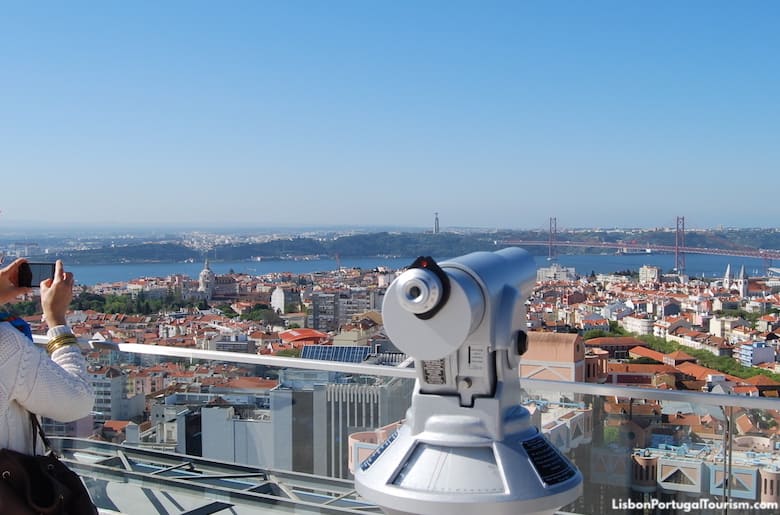
Amoreiras 360º
A group of glass postmodern towers altered Lisbon’s skyline and were therefore controversial when they were built in 1985, but their shopping mall soon became the city’s favorite shopping mecca. Newer and bigger malls are now more popular, but that of Amoreiras is still a destination, as it provides access to an observation deck at the top of one of the towers. There’s a 360-degree view of almost the entire city , from the Parque das Nações district in the east to Belém in the west. The mall below has dozens of stores and an excellent food court.
See the Amoreiras 360º Visitor's Guide .
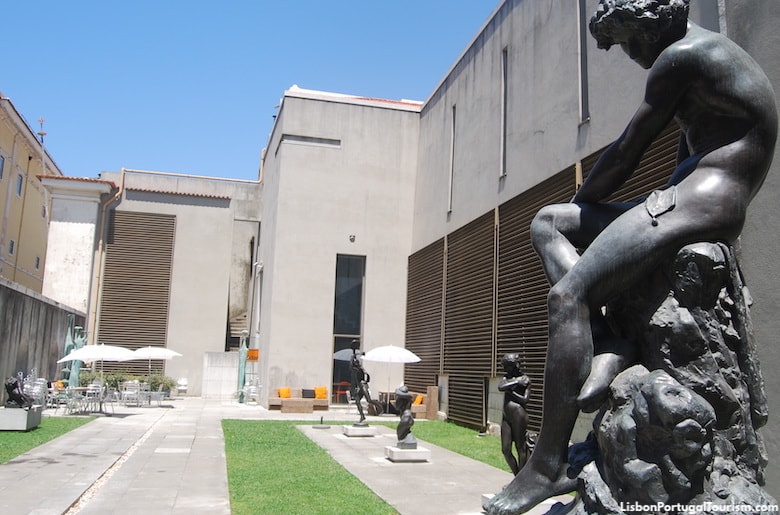
National Contemporary Art Museum of Chiado
Art fans will want to head to this converted convent which houses the biggest collection of contemporary Portuguese art . It’s shown in thematic and temporary exhibitions, but there are always works by the leading national artists of the 19th and 20th centuries, like Almada Negreiros, Amadeo de Souza-Cardoso, Columbano Bordalo Pinheiro, and Paula Rego. A drink or light meal at the café on the sculpture-filled terrace is a great way to end a visit.
See the National Contemporary Art Museum of Chiado Visitor's Guide .

Military Museum
Lisbon’s oldest museum recalls major battles, wars and the military history of Portugal in sumptuous rooms with beautifully-painted ceilings . The room named after Vasco da Gama shows how the country conquered and defended its colonies, while another room is entirely dedicated to WWI. Elsewhere it displays one of the world’s largest collections of artillery , swords used by kings, and replicas of 16th-century armor, among a variety of other pieces. The cannon-filled courtyard features tile panels illustrating some of the most historic battles that guaranteed that Portugal remained an independent Iberian kingdom.
See the Military Museum Visitor's Guide .

There are many places in the city to enjoy the abundant sunshine and the mild temperatures, but luckily there are also several beaches nearby. That makes Lisbon one of Europe’s most blessed cities, and you can have your feet in the ocean or be on your surfboard in just minutes from the center of town. There’s a long stretch of sand to the south, offering everything from lively seaside bars to surfing waves , to secluded spots and nude beaches , and then there’s the coast to the west, easier to reach, and therefore more popular with tourists. Wilder beaches of stunning natural beauty are found to the north, by Europe’s westernmost point . Most can be reached by public transportation, and will make you want to prolong your stay in the city.
See the Lisbon Beaches Guide .
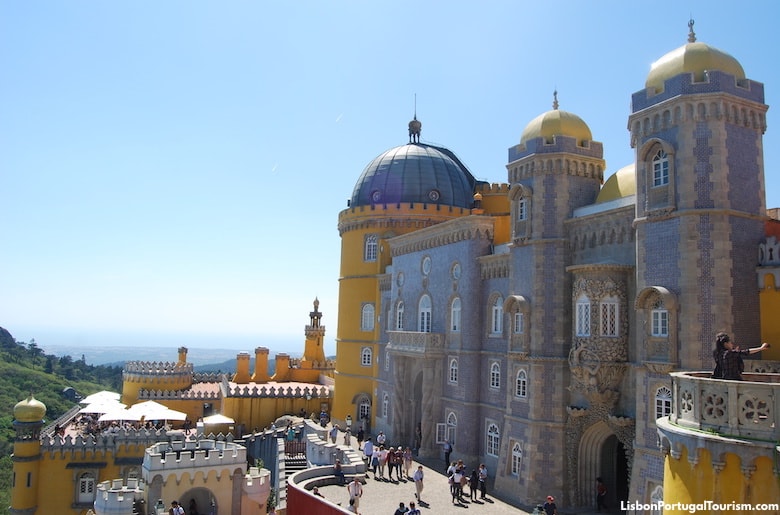
A day trip to Sintra should be included in any visit to Lisbon. This fantasyland was Europe’s first center of romantic architecture, which has made it a World Heritage Site . It’s a magical place with several fairytale palaces and castles , but the must-see is the extraordinary Pena Palace , which looks like something that not even Disney could imagine.
See the Sintra Tourism Guide .
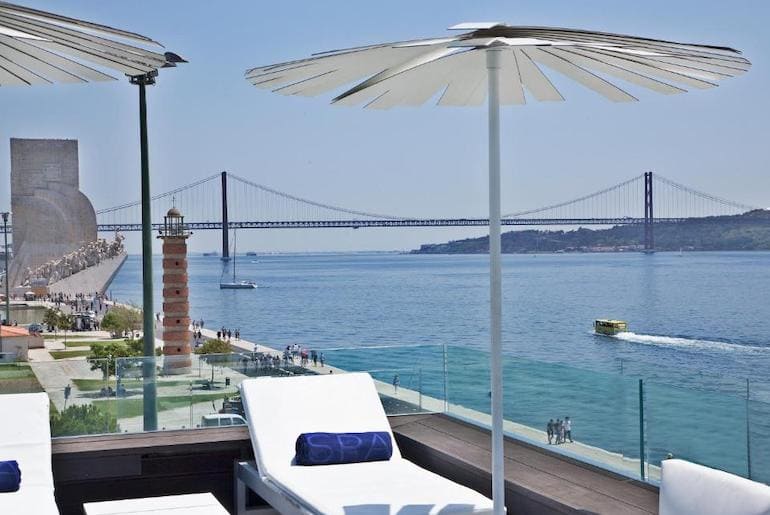
Top Places to Stay
Best Waterfront Hotels: Altis Belém Hotel , MYRIAD by SANA Hotels Best Views: Memmo Alfama , Hotel do Chiado , Solar dos Mouros Best Pools: Olissippo Lapa Palace , Palácio do Governador , EPIC SANA Marquês Best Hotels by the Castle: Solar do Castelo , Santiago de Alfama Boutique Hotel Best Central Hotels: Pousada de Lisboa , Bairro Alto Hotel , Altis Avenida , The Ivens Best Central Apartments: Residentas Aurea , Chiado Camões Apartments , Flora Chiado Apartments Best Beach Hotels: Farol Hotel , The Albatroz Hotel

Complete Lisbon Guide
Insider's guide with the latest travel tips, information and advice from local experts:
Where to Stay
Hotels in Alfama and the Castle
Hotels on Avenida da Liberdade
Hotels in Bairro Alto
Hotels in Baixa
Hotels in Chiado
Hotels in Príncipe Real
Hotels in Avenidas Novas
Neighborhoods
Avenida da Liberdade
Avenidas Novas
Bairro Alto
Cais do Sodré
Campo de Ourique
Parque das Nações
Príncipe Real
What to See & Do
Top 50 Attractions
Top 30 Museums
Top 30 Viewpoints
Best Beaches
Best Day Trips
Itinerary Advice
Family Attractions
On a Rainy Day
1 Day in Lisbon
Tourist Card
Tourist Map
Most Popular Attractions
Jerónimos Monastery
Belém Tower
Castle of St. George
Ajuda Palace
Coaches Museum
Tile Museum
MAC/CCB Museum
Ancient Art Museum
Pena Palace (Sintra)
Most Popular Beaches
Praia da Conceição
Costa da Caparica
Praia do Ribeiro do Cavalo
Praia da Ursa
Transportation
Travel Cards
Tram 15 to Belém
Train to Belém
Glória Funicular
Bus 101 to Cristo Rei
Hop-On Hop-Off Buses
Airport Guide
Airport Transportation
Rossio Station
Santa Apolónia Station
Oriente Station
Cais do Sodré Station
Sete Rios Bus Station
Cacilhas Bus Station
Portugal Travel Guides
- How to Tie a Tie
- Best Coffee Beans
- How to Shape a Beard
- Best Sweaters for Men
- Most Expensive Cognac
- Monos vs Away Luggage
- Best Luxury Hotel Chains
- Fastest Cars in the World
- Ernest Hemingway Books
- What Does CBD Feel Like?
- Canada Goose Alternatives
- Fastest Motorcycles in the World
These are the best places to visit in September
September is a great time to travel.

With the summer crowds dwindling and the pleasant weather, September is a great time to travel. If you’re looking for inspiration for an upcoming vacation, here are some of the best places to visit in September that you may want to consider.
1. Santorini, Greece
Santorini in September offers warm weather without the intense summer heat (and fewer tourists!). For a vacation to remember, stay in a cliffside villa with a private plunge pool, dine at high-end restaurants like Selene, and indulge in spa treatments with caldera views. Don’t forget to visit the ancient ruins of Akrotiri and relax on the unique black sand beaches.
2. Napa Valley, California, USA
September is the heart of the harvest season in Napa Valley , making it perfect for wine lovers everywhere. If you’re planning your trip, stay at the exquisite Auberge du Soleil or the intimate Bardessono Hotel and Spa. Enjoy private wine tastings and gourmet picnics in the vineyards and dine at world-renowned restaurants like The French Laundry. Don’t miss touring the many beautiful wineries Napa Valley has to offer, taking a hot air balloon ride over the valley, and exploring the town of St. Helena.
3. Provence, France
Provence in September is the perfect time to stay at luxurious estates like Château de Berne or Villa La Coste. During your visit, don’t forget to take private vineyard tours, shop at local markets, and savor gourmet meals. And don’t miss visiting the lavender fields, exploring the towns of Aix-en-Provence and Avignon, and biking through the countryside.
4. Lake Como, Italy
Lake Como boasts warm weather and fewer crowds in September, compared to the peak summer months. Need inspiration for where you want to stay? Check out the iconic Villa d’Este or the luxurious Mandarin Oriental. While you’re there, consider taking a boat tour, exploring lakeside villages, visiting the beautiful gardens of Villa Carlotta, and checking out the historic town of Como.
5. Bora Bora, French Polynesia
Need a tropical escape ? September is an excellent time to visit Bora Bora, with pleasant weather and clear skies. Set your trip up for success by staying in overwater villas at the Four Seasons or St. Regis Bora Bora. September is the perfect time to enjoy lagoon tours, go scuba diving, and indulge in beachfront dining experiences. Plus, you can make your trip memorable by snorkeling in coral gardens, taking a 4WD tour of the island, relaxing on stunning Matira Beach, experiencing a traditional Polynesian dance show, and savoring fresh seafood.
6. Cape Town, South Africa
September marks the beginning of spring in Cape Town, with mild weather and blooming flowers. While you’re there, stay at the luxurious One&Only Cape Town, explore the Cape Winelands on a private tour, visit Table Mountain, and enjoy gourmet dining at top restaurants like La Colombe. Plus, drive along the Cape Peninsula, visit the historic Robben Island, explore the V&A Waterfront, enjoy a safari experience in a nearby game reserve, and relax on beautiful beaches.
7. Lisbon, Portugal
If you’re looking to visit Lisbon in September, staying at the luxurious Olissippo Lapa Palace or the boutique Hotel Avenida Palace will make your trip a dream come true. During your trip, enjoy gourmet dining at Michelin-starred restaurants like Belcanto, take guided tours of the city’s historic neighborhoods, visit the iconic Belém Tower and Jerónimos Monastery, and take a tram ride through the city. Don’t miss taking a day trip to the fairy-tale town of Sintra and relaxing at the beautiful Cascais beaches.
8. Milan, Italy
With Milan Fashion Week taking place in September, visiting Milan in September is a fashion lover’s dream. For the full experience, stay at luxurious hotels like the Armani Hotel Milano or the Four Seasons Hotel Milano. Explore the city’s rich history with visits to the stunning Duomo di Milano, the iconic La Scala opera house, and Leonardo da Vinci’s masterpiece, The Last Supper, at Santa Maria delle Grazie. Shop at the high-end boutiques of the Quadrilatero della Moda, enjoy fine dining at Michelin-starred restaurants like Seta, and take a stroll through the elegant Brera District.
What is the best place to visit in September?
The best place to visit in September depends on your interests. Popular options include coastal destinations with warm weather, wine regions, and cities hosting events or festivals. Researching your preferences can help you find the perfect spot.
Is September a good time for vacation?
Yes, September is often a great time for vacation. The weather is usually mild and summer crowds have diminished. It’s an ideal month for travelers looking to enjoy a more relaxed experience.
What should I pack for a September trip?
Packing for a September trip typically involves layers to accommodate varying temperatures, as days can be warm while nights might be cooler. Comfortable walking shoes are essential for exploring — and don’t forget a light jacket or sweater.
Editors’ Recommendations
- Olympics travel: The best and worst host cities, ranked
- The best golf courses in Michigan: Grab a tee time at these great spots
- This is the biggest signal yet that Dubai is a can’t-miss destination for travelers
- You can now view Southwest flights on this popular website
- Big Island retreat: Outrigger Kona Resort & Spa completes $60M renovation
- Destinations

United Airlines plans to purchase as much as 1 million gallons of sustainable aviation fuel (SAF) for use at its Chicago hub, O’Hare Airport (ORD). Produced by Finland-based Neste, the biofuel will reach ORD by the end of August and promises a greener future for commercial flight. Here's what you need to know. SAF helps United Airlines reduce its carbon footprint
Sustainable aviation fuel is an emerging technology that offers similar performance yet lower emissions when compared to petroleum-based fuels. United’s addition of SAF to its O’Hare hub follows its use at other locations, including Los Angeles International Airport, London’s Heathrow Airport, San Francisco International Airport, and Amsterdam Airport Schiphol. United Airlines continues to be bullish on the fuel's future.
- Food & Drink
As one of the most famous cuisines in the world, Japanese food has a rich history and endless options. With an intense focus on seasonality and techniques, Japanese meals have a bit of something for everyone. While sushi is the most famous, there are plenty of other Japanese dishes you should try. Tempura Tendon (tempura bowl) bady / Unsplash
Using frying techniques brought over by the Portuguese in the 16th Century, tempura has a rich history. Compromising primarily of seafood and vegetables (chicken tempura, called toriten, is a regional specialty in Ōita Prefecture), tempura is characterized by its light batter and delicate seasoning. The batter is generally unsalted and seasoned after cooking by dipping in salt or a tempura dipping sauce (tentsuyu) made from shoyu and dashi. More than just a side dish, tempura can be found at the highest levels, with entire fine-dining tasting menus centered on tempura. Soba Zaru soba (cold soba). gaspanik / Unsplash
When you think of fjords, images of Norway’s dramatic landscapes or Canada’s majestic coastlines might come to mind. But did you know that France boasts its own stunning fjord-like formations? Situated near the vibrant town of Marseille and the quaint fishing town of Cassis, France, lies Calanques National Park, home to the breathtaking Calanques. These natural wonders, carved into limestone cliffs and filled with crystal-clear blue waters, offer a unique and picturesque experience. Here’s everything you need to know before exploring these hidden gems. Getting to Calanques National Park
Calanques National Park is easily accessible from several locations, including Marseille, La Ciotat, and Cassis, France. If you’re starting from Marseille, take the RTM bus, while visitors from Cassis can use bus line M01. Those in La Ciotat should hop on the Ciotabus for a convenient journey. Although you can drive to Calanques such as Morgiou, Callelongue, Sormiou, and Sugiton, it’s recommended to leave your car behind due to limited parking and lack of official lots.

COMMENTS
Five courses, without drinks, €70 per person. 12 a.m. Party in a palace. The nightclub Gala Cricri is inside the Palácio do Grilo, a formerly disused 18th-century manor in the emerging Beato ...
36 Hours in Lisbon. In the Portuguese capital, a weekend's worth of seafood feasts, chic rooftop bars, undulating streets and landmarks, both Old World and futuristic. A view of Lisbon from the ...
Our Lisbon expert reveals everything you need to know for a trip to the Portuguese city, from the best restaurants to the most beautiful hotels. ... Times Travel. Thursday February 01 2024, 9.00am, The Times. T he Portuguese have a word that conveys a feeling of yearning, nostalgia and melancholy: saudade. It's not a word with a direct ...
Between March and May, average high temperatures in Lisbon are in the 60s and low 70s, then drop to the 50s at night, which means you will be fine in a light jacket if you even need one. Then, in September, you still have summer-like temperatures with highs around 79 degrees Fahrenheit and lows in the 60s.
Tourism volume is estimated based on in-market destination search query interest from Google and on travel.usnews.com in 2015-2016. Hotel prices are sourced from a sample of U.S. News Best Hotels ...
36 Hours in Lisbon. Throughout this hilly city on the Tagus River, structures and spaces are being stylishly reborn, harboring chic boutiques, galleries and new spots for eating and drinking ...
With famously gorgeous weather and almost 300 days of sunshine a year, the best time to visit Lisbon is...whenever your heart desires. The crowds come in summer, lured by scorching sunshine and big events, fall and spring have a gentler magic, and even the winter has its own quiet charm. Spring and summer are Lisbon's warmest seasons: prices ...
Responsible Travel Tips for Lisbon 15. Hotels vs. Airbnb. Lisbon has experienced a revival of sorts in recent years. This is largely thanks to the many World Travel Awards the city and Portugal as a country has won, cementing Lisbon and Portugal as a top travel destination.
The top attractions in Lisbon, including the Jerónimos Monastery and Castelo de São Jorge, get extremely crowded, and it will make your life much easier to purchase tickets in advance! This Lisbon travel tip goes for nearby Sintra, too, especially at the iconic Pena Palace and the dreamy Quinta da Regaleira.
There are enough world-class attractions in Lisbon to keep you busy for weeks, from feasting on custard tarts to discovering the most beautiful views. We haven't been able to take payment You must update your payment details via My Account or by clicking update payment details to keep your subscription.
7. Cycle to the coast. Technically, Lisbon is not a beach town, but its laid-back vibe and the palm trees that dot the pastel-colored cityscape give it a distinctly ocean-front feeling. In fact, it's a short car, train or ferry ride from scores of proper beaches. To make a day of it, rent a bike in the far western Lisbon neighborhood of Belém.
Gautier Houba/Travel + Leisure. Address: Praça do Império 1400-206 Lisbon, Portugal Phone: (351) 21-362-0034 Website. Recognized by UNESCO, this World Heritage site is as magnificent as ...
Generally speaking, the best time to visit Lisbon is in the spring or fall, when the weather is warm and pleasant (with occasional rainfall in April) and hotel prices are reasonable. Summer is hot and expensive, especially in August. In winter, Lisbon is the warmest of the cities in the Iberian Peninsula. Although nights can be very chilly ...
All it takes is 3 days in Lisbon to fall hard for this city, and by following this 3-day Lisbon itinerary you won't have any trouble finding out why. Insider Tip: Save time and money with the Lisbon Card. The card gives you free access to 23 city museums and attractions, as well as unlimited use of public transport.
In this Lisbon travel guide, I'll share the essential highlights and tips for a first-time visit, but you can also check out my guide on unusual things to do in Lisbon. Plan your trip to Lisbon Find your hotel in Lisbon on Booking.com. Amazing central areas to stay include Príncipe Real, Avenida, Alfama, Chiado and Baixa.
Weather in Lisbon is fairly moderate with warm summers and cooler,wetter winters. Average high temperatures from June-August range from 80-90 degrees F (25-30 degrees C) while daytime temps in December-February average around 55 degrees F ( 13 degrees C) but are typically wetter than other times of the year.
Lisbon's domed 19th-century market hall, the Mercado de Ribeira, was converted in 2014 into the Time Out Market, a buzzy food hall, which remains a huge draw. Some of Lisbon's best culinary ...
Day 1: Evening. 7 p.m.: Head to the Skybar for a cocktail and dinner with beautiful sunset views. Located in the Tivoli Avenida Liberdade Hotel in the city center, this sprawling, multi-level restaurant and bar is the place to enjoy a few drinks, snacks, or a great dinner.
A blend of Old World Europe and 21st century style, Lisbon is worth a spot on your travel bucket list. Before you visit, check out our local guide to plan your trip, and pack these essentials.
By the time we reached our hotel for the night, it had been a long day so we decided to take it easy, and Villa Epicurea (R. do Casalinho 5A, 2970-052) — a 45-minute drive south of Lisbon ...
The best time to visit Lisbon is either from March to May or September to October, because the weather is still warm, hotel rates are cheaper and there are fewer crowds than in summer. In those ...
You'll save money and avoid the hassle of standing in lines for tickets! The price of the Lisboa Card ranges from €27 to €54 depending on the duration of the card you select. For adults: 1 day costs €27, 2 days costs €44, and 3 days costs €54. For children: 1 day costs €18, 2 days costs €24.50, and 3 days costs €30.50.
Tuesday July 2 2024. Search The Times and The Sunday Times. Today's sections Past six days Explore Times Radio. Times+. Log in Subscribe. Under the radar of most city breakers for years, Lisbon is flying higher these days, its popularity having soared over the past decade — not just with weekender.
A 19th-century mansion houses one of Lisbon's most outstanding art collections. Somehow, it remains one of the city's top secrets, often overlooked by travel guides. It's the former home of a wealthy businessman, who displayed his treasures in 25 rooms, including a Rembrandt portrait and other paintings by major artists like Rubens and ...
Zillow has 6 photos of this $494,000 3 beds, 3 baths, 1,671 Square Feet single family home located at 5968 N Lisbon Street, Aurora, CO 80019 built in 2024. MLS #9457575.
22 likes, 0 comments - global.travel.adventure on August 13, 2024: "5 best places to visit while in Lisbon part 2 ⬇️ . **1. São Jorge Castle** Standing atop one of Lisbon's seven hills, São Jorge Castle offers a breathtaking view that takes you back in time. Wander through the ancient ramparts and imagine the stories etched in these stones, from Moorish fortresses to royal palaces ...
LISBON — While the Portuguese say "Quem tem boca vai a Roma," or "Whoever has a mouth goes to Rome, Julius Caesar probably would have encouraged those with a mouth to go to Lisbon.. A century before Christ, the Roman dictator used to order — before delivery apps and internet orders — from his marble office in the Forum, in the shadow of the Colosseum, a special sardine-based sauce ...
With the summer crowds dwindling and the pleasant weather, September is a great time to travel. If you're looking for inspiration for an upcoming vacation, here are some of the best places to ...